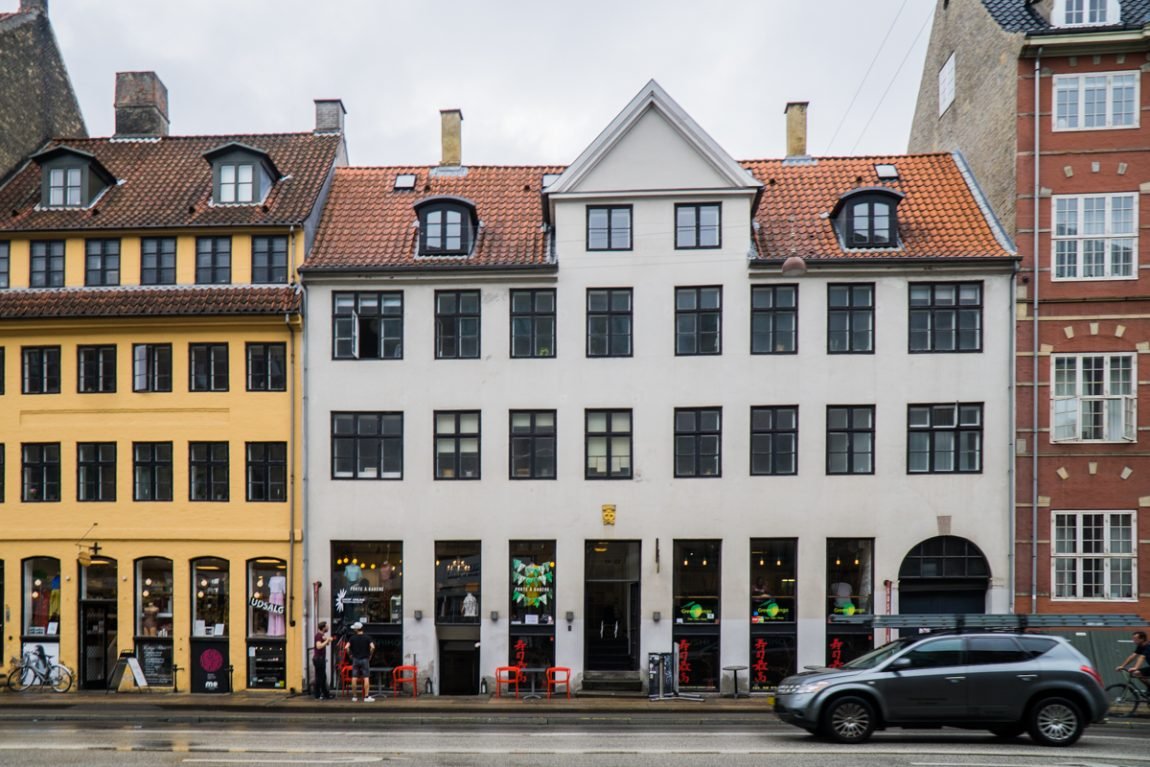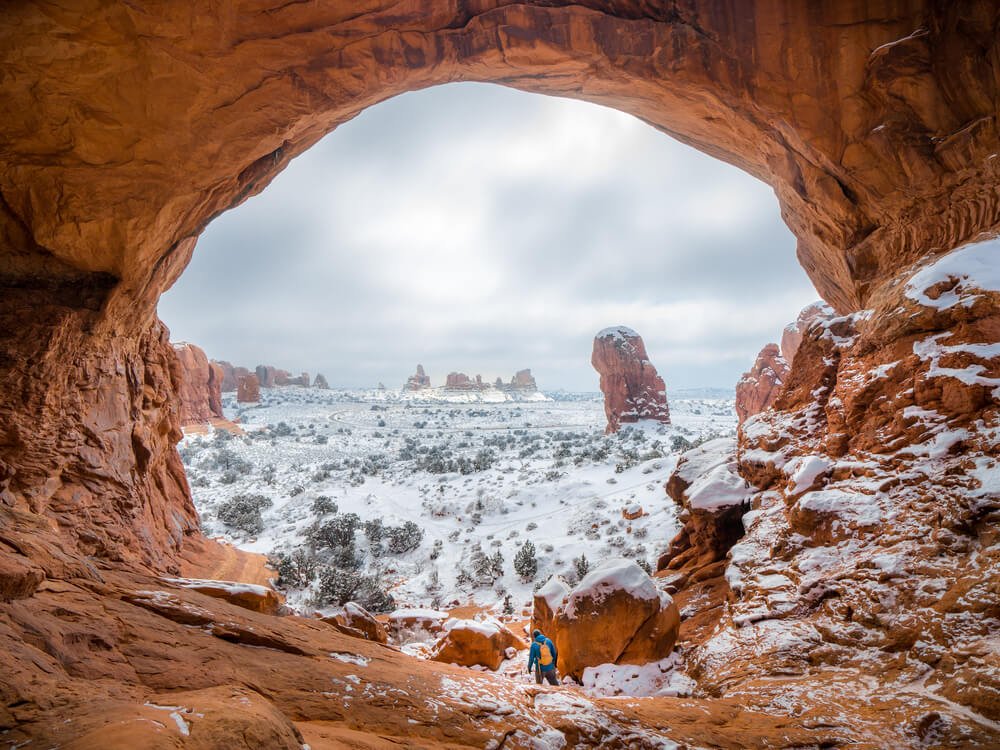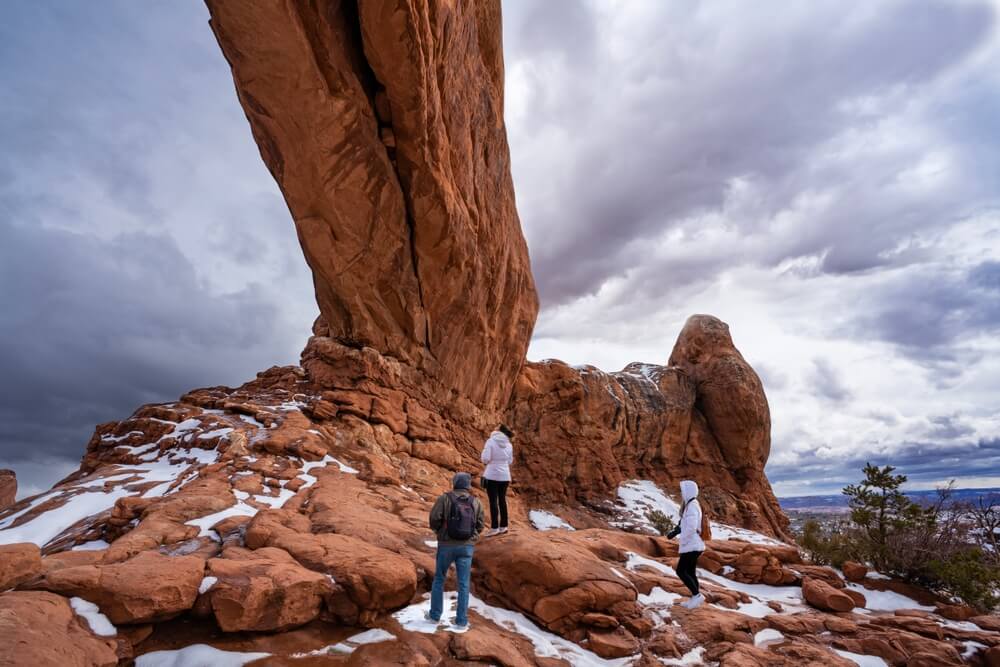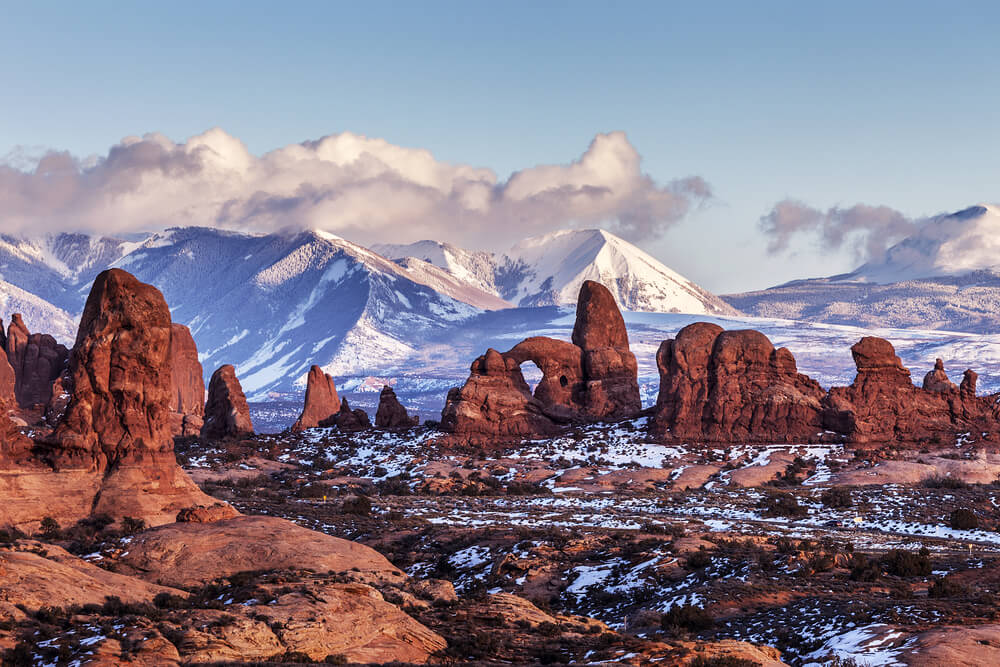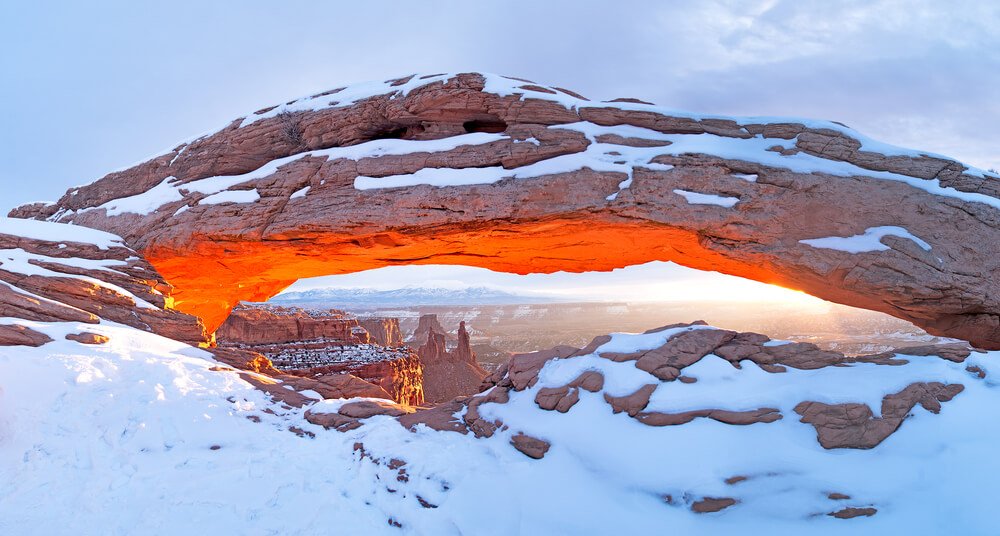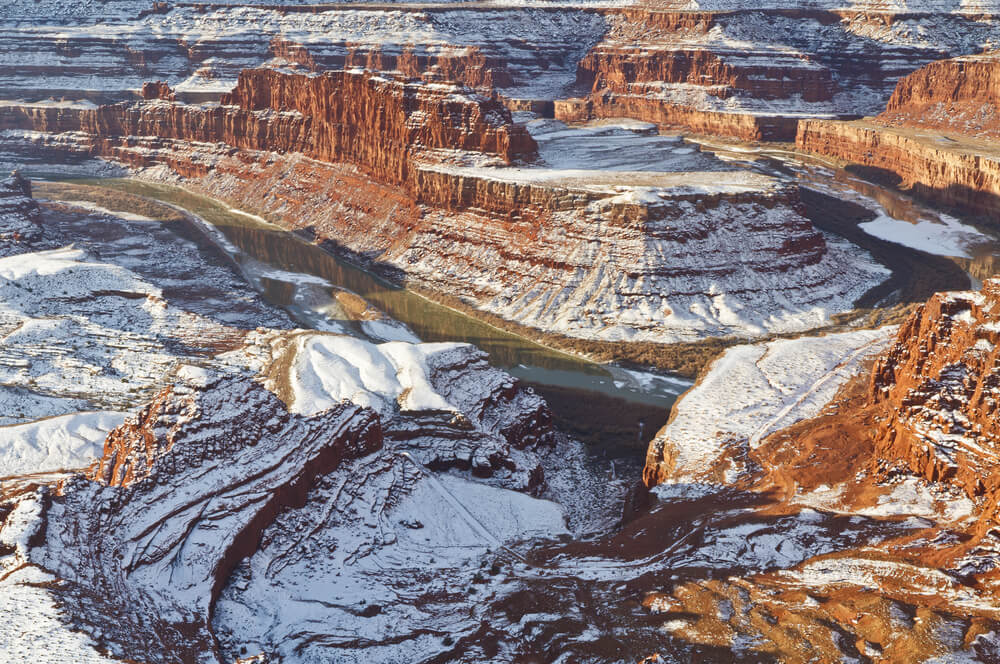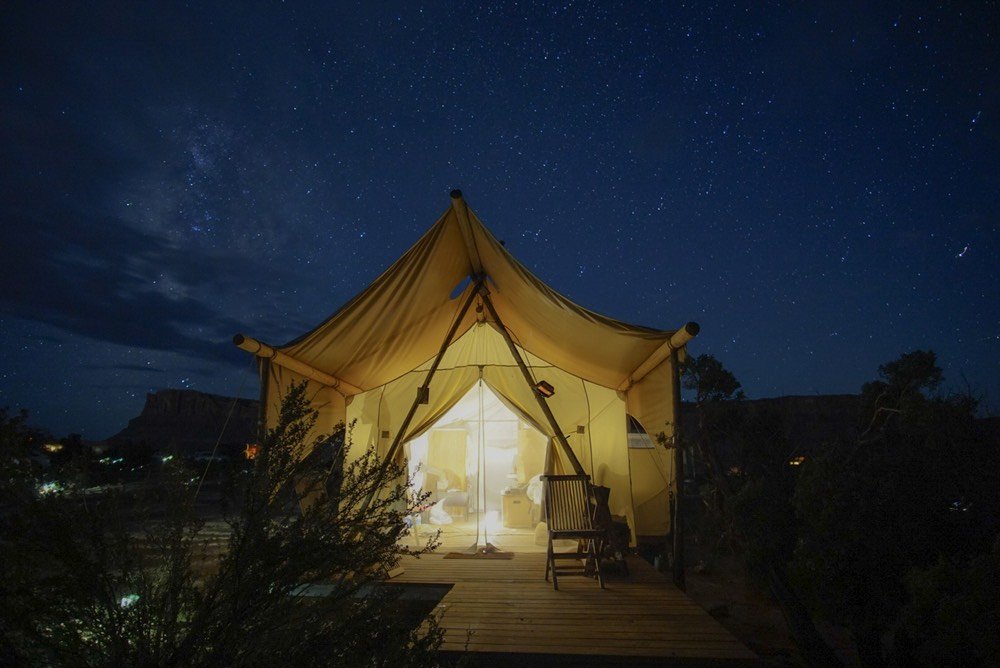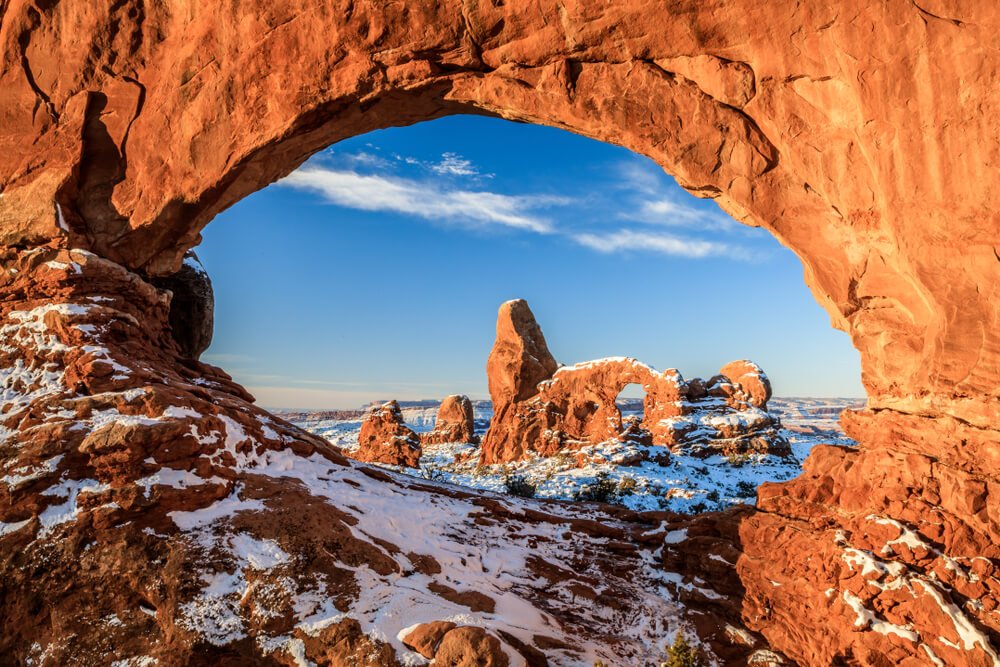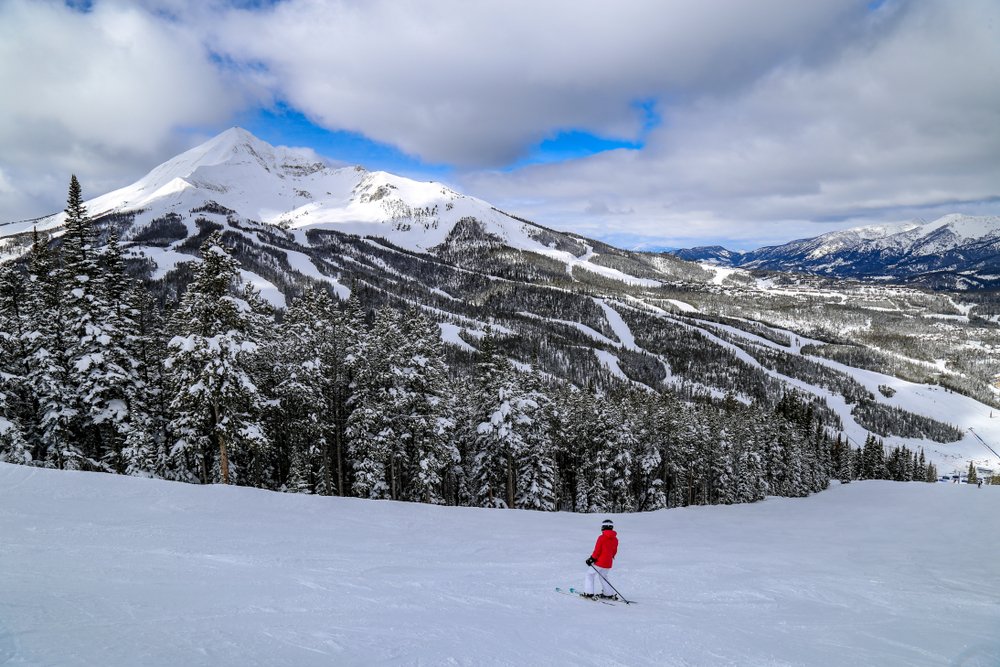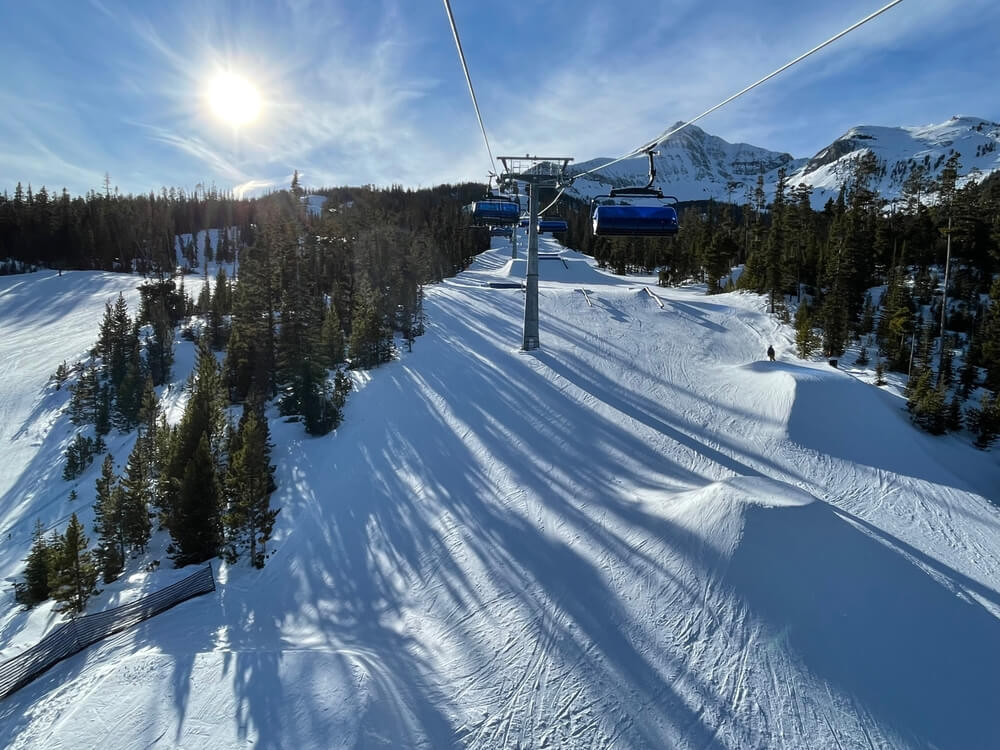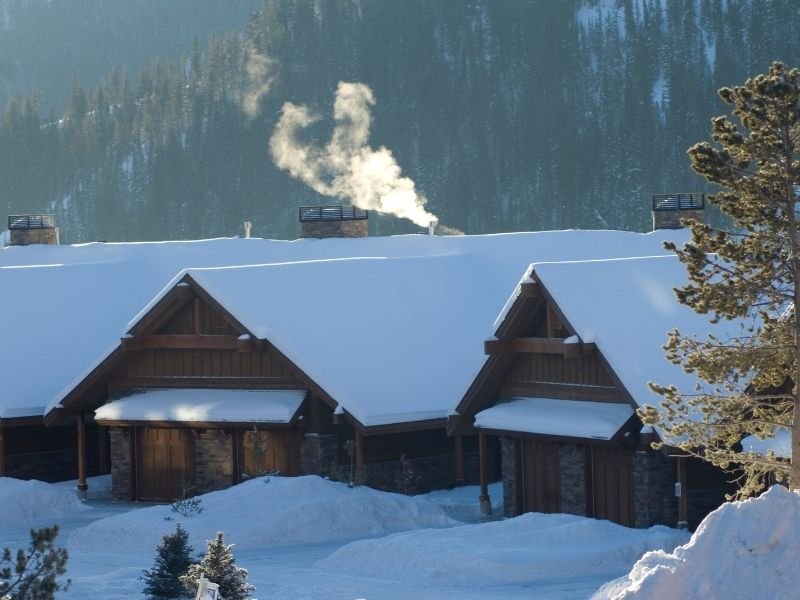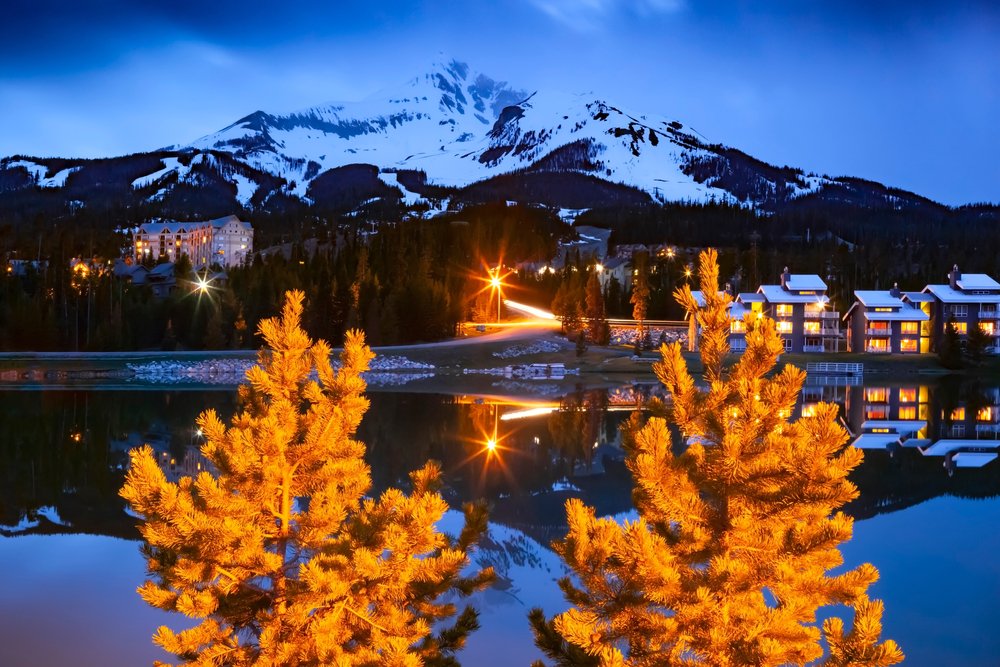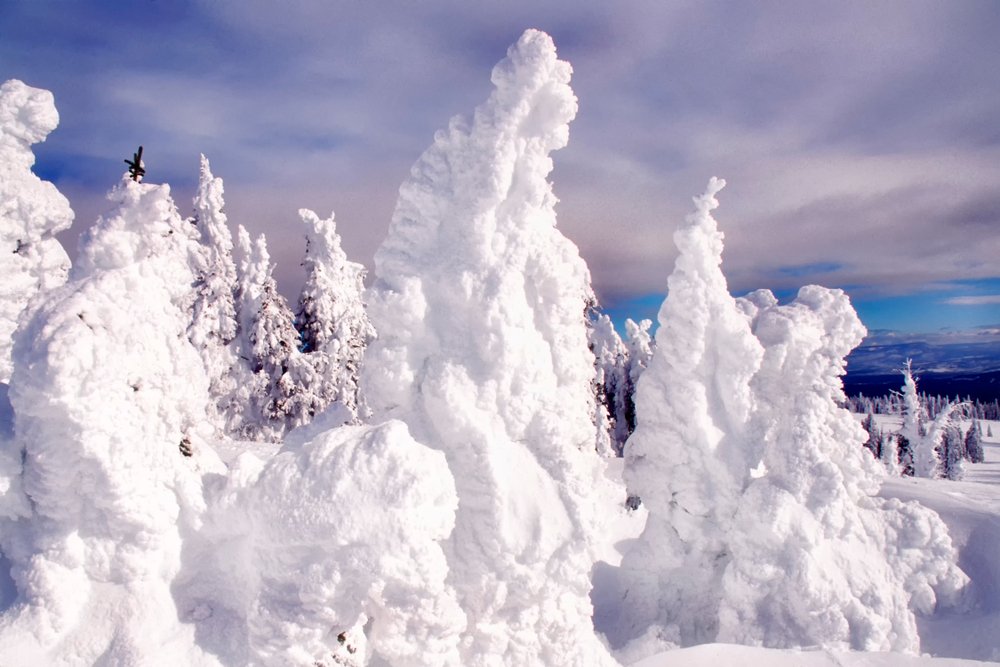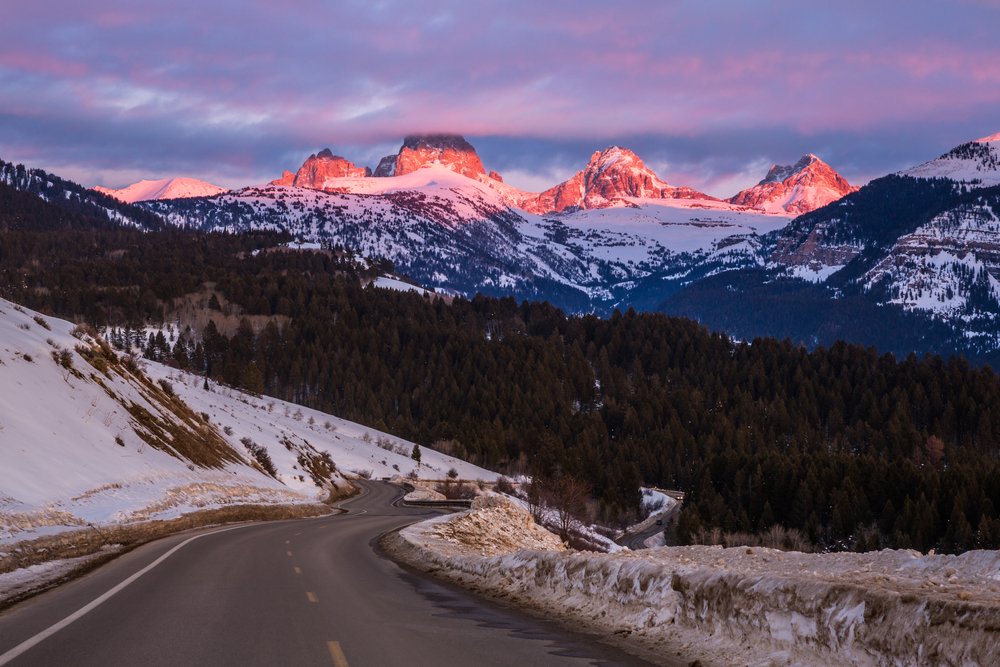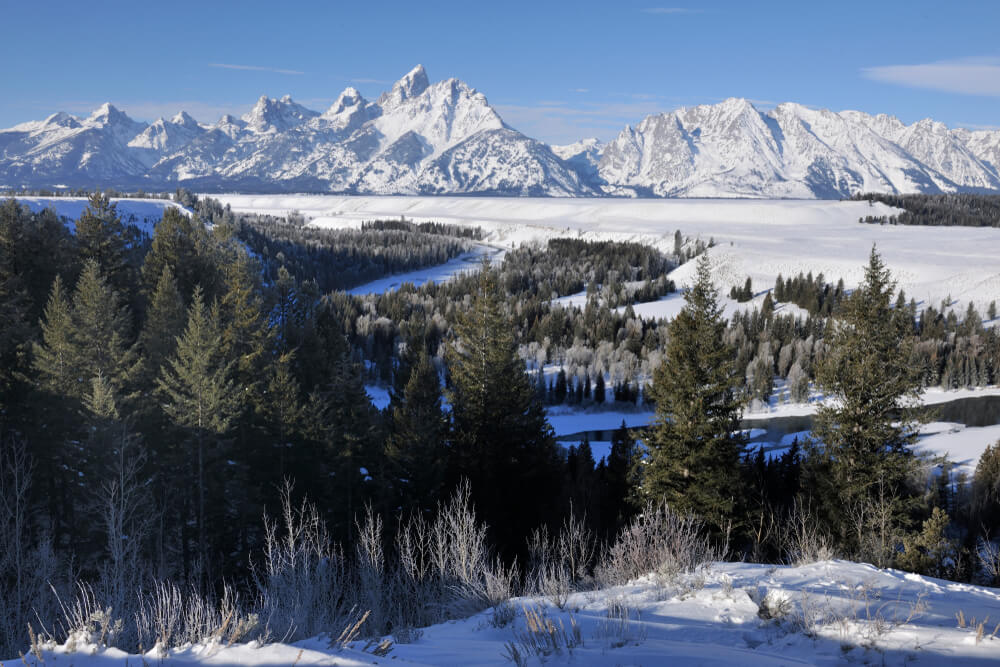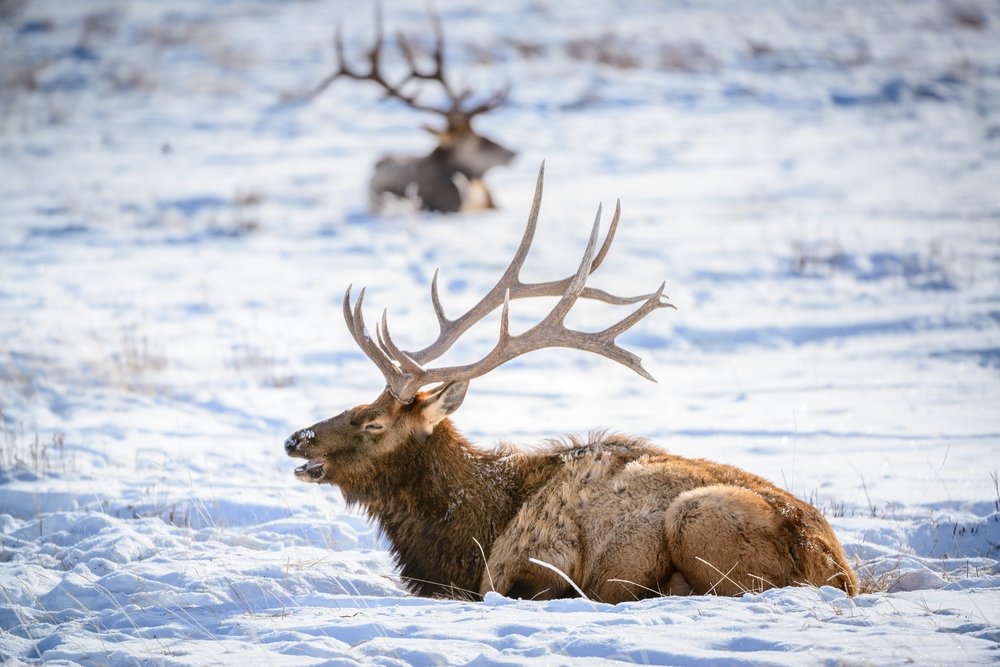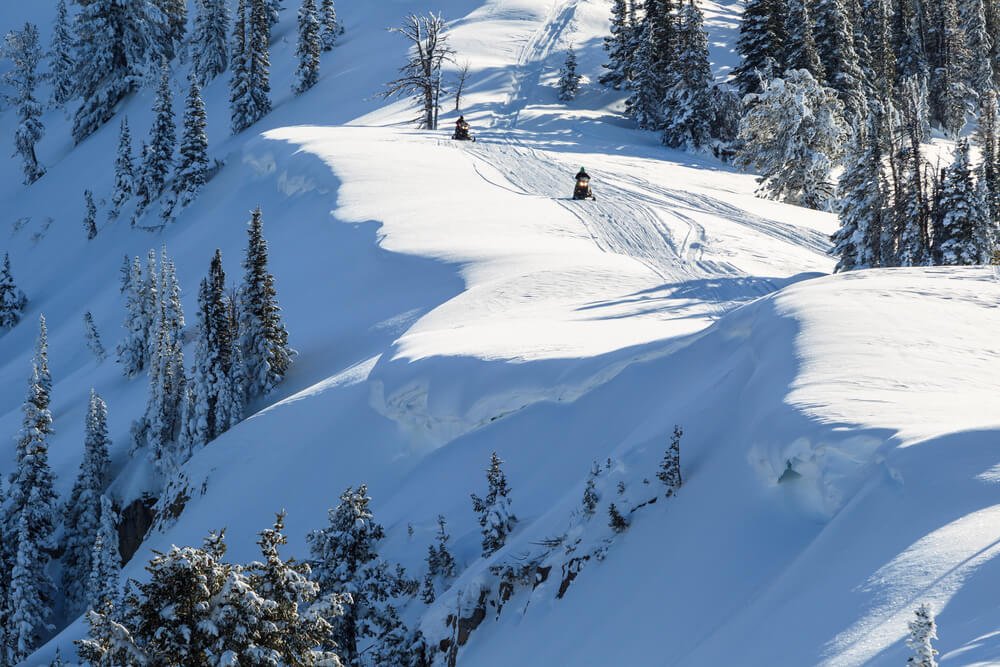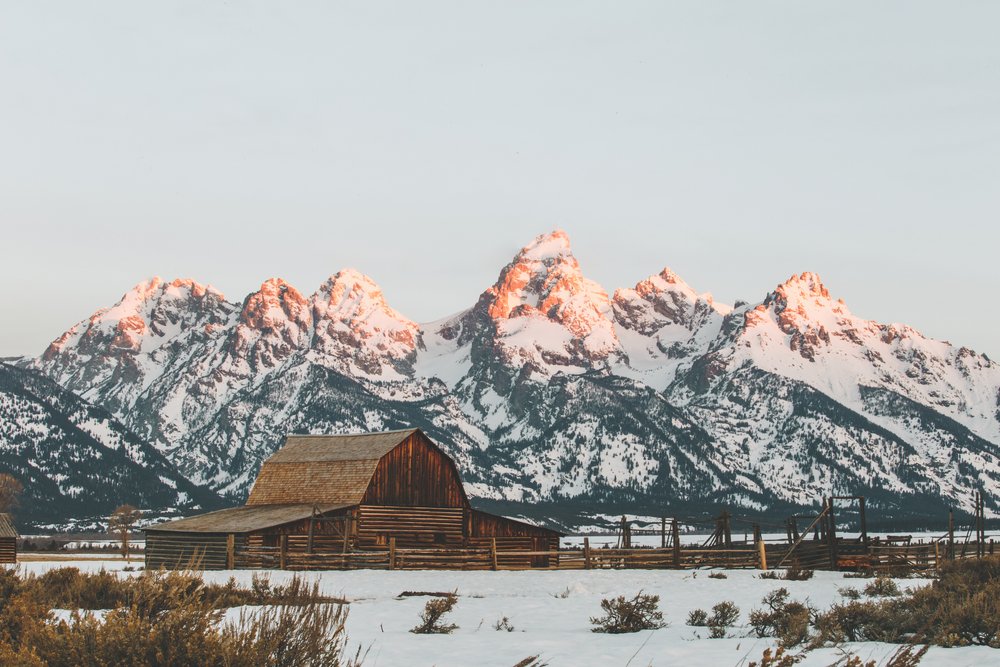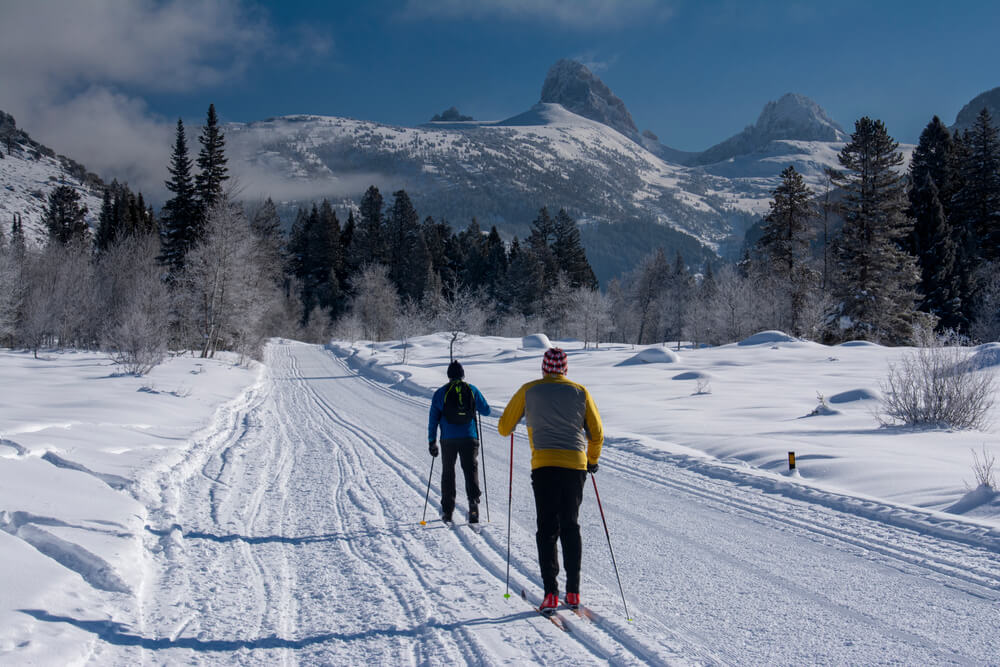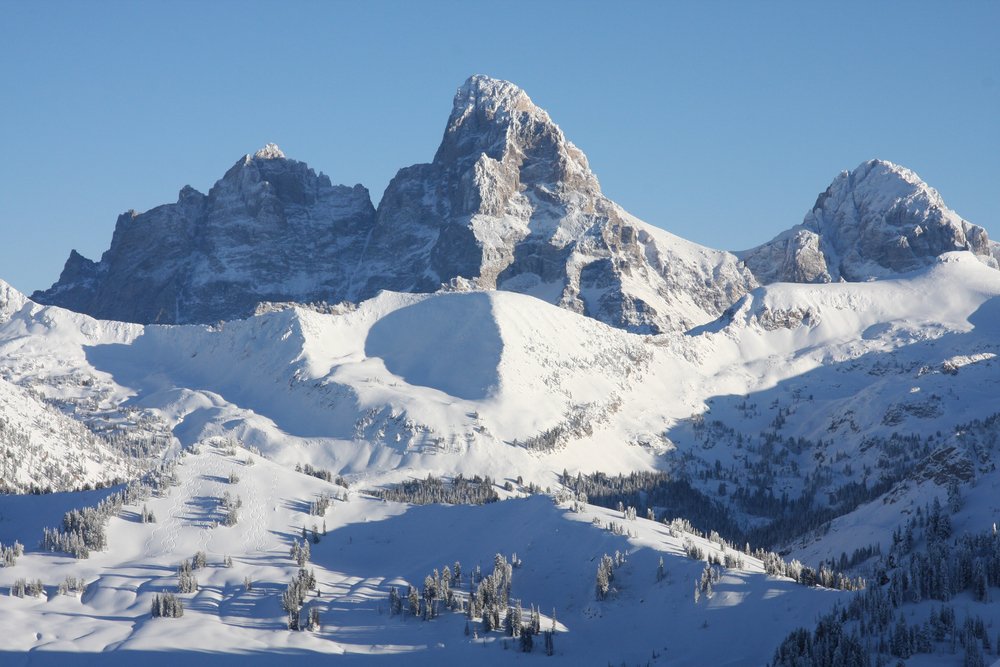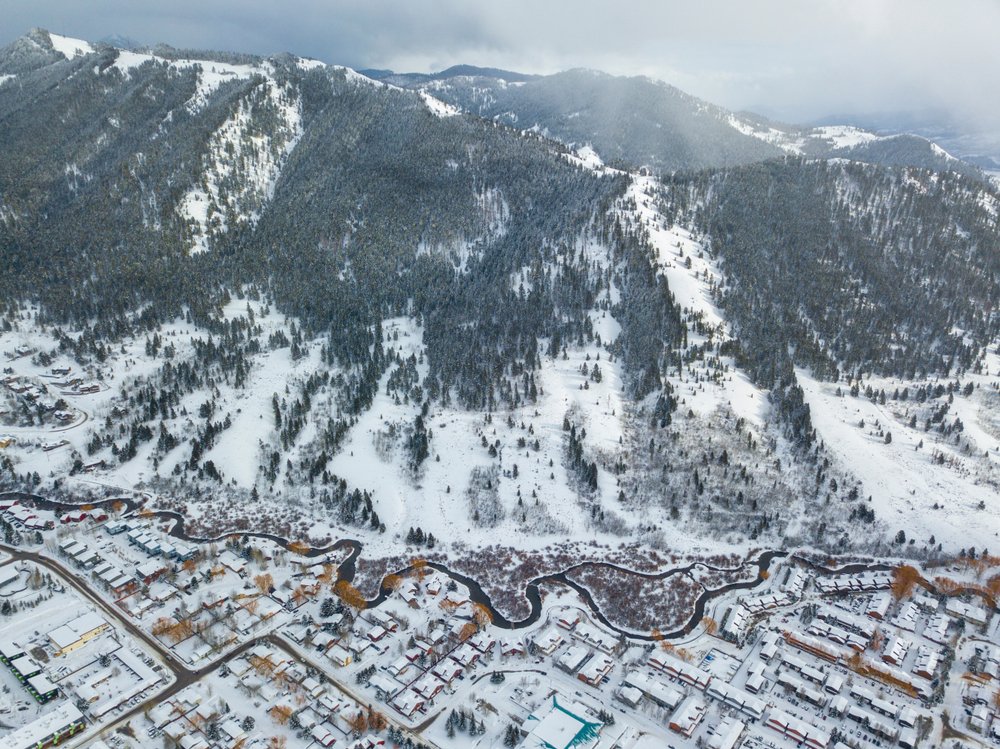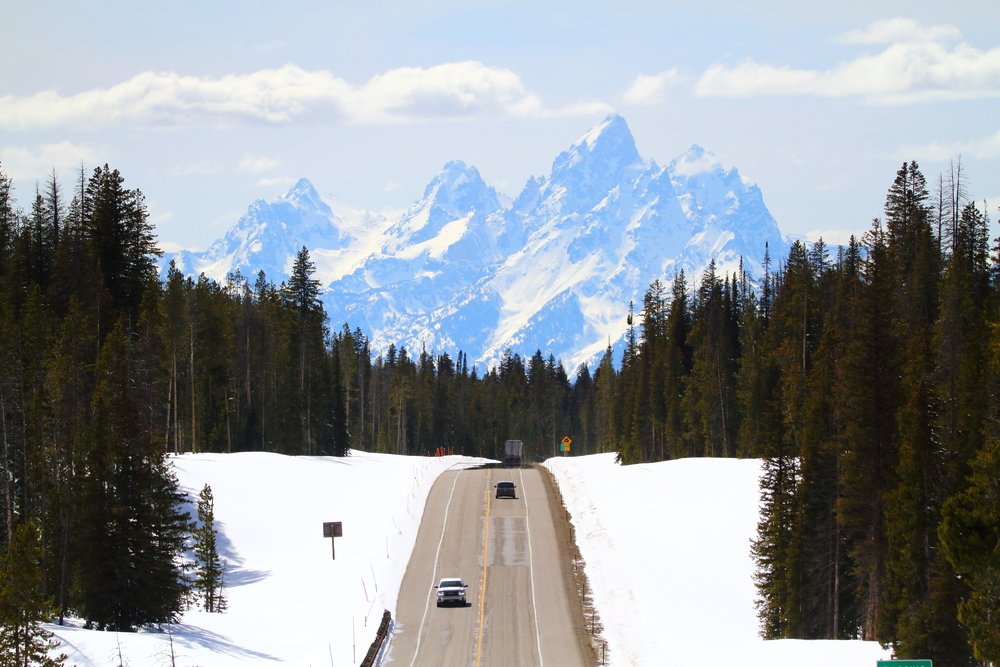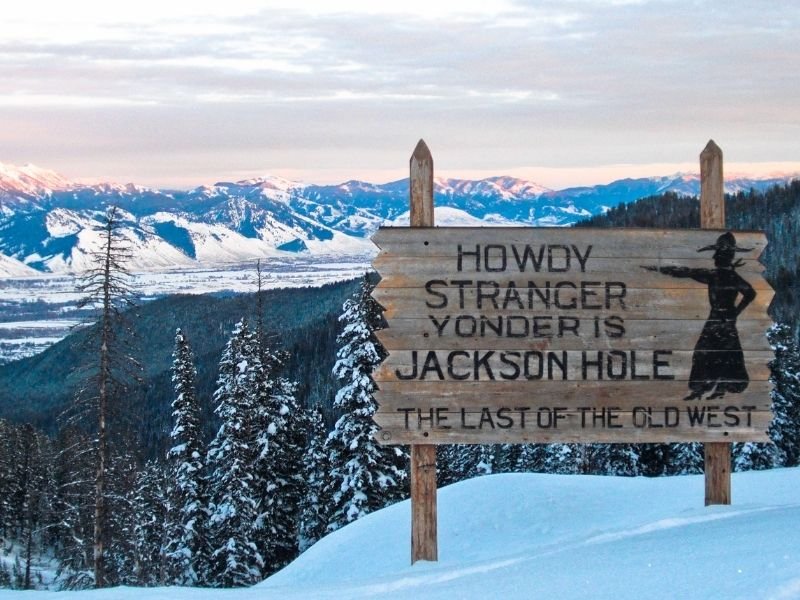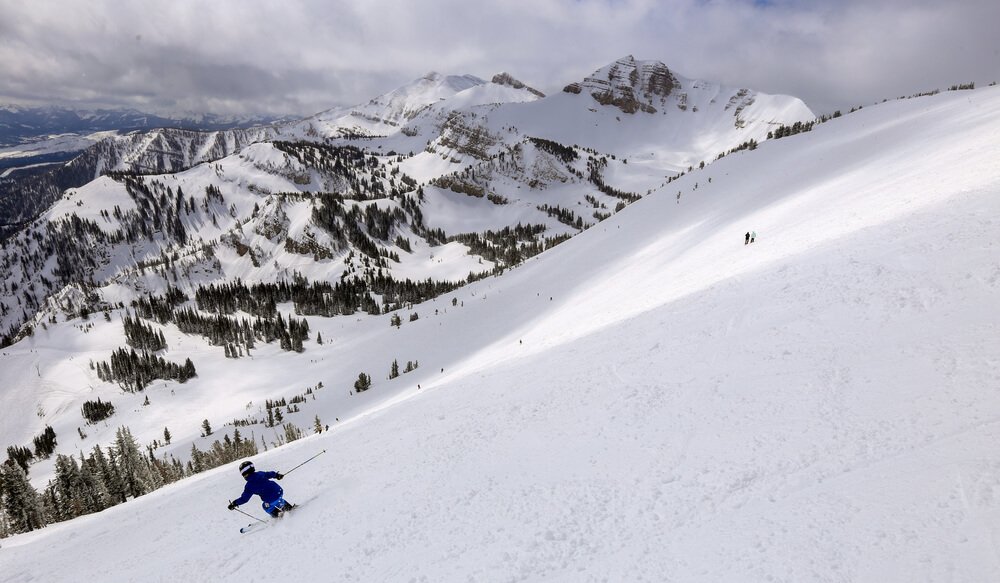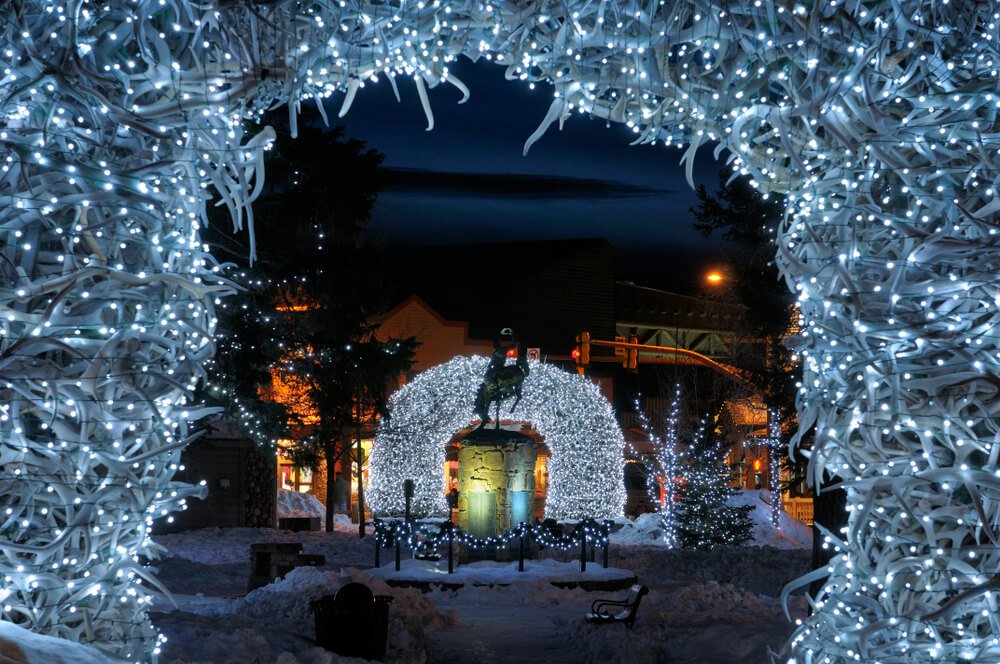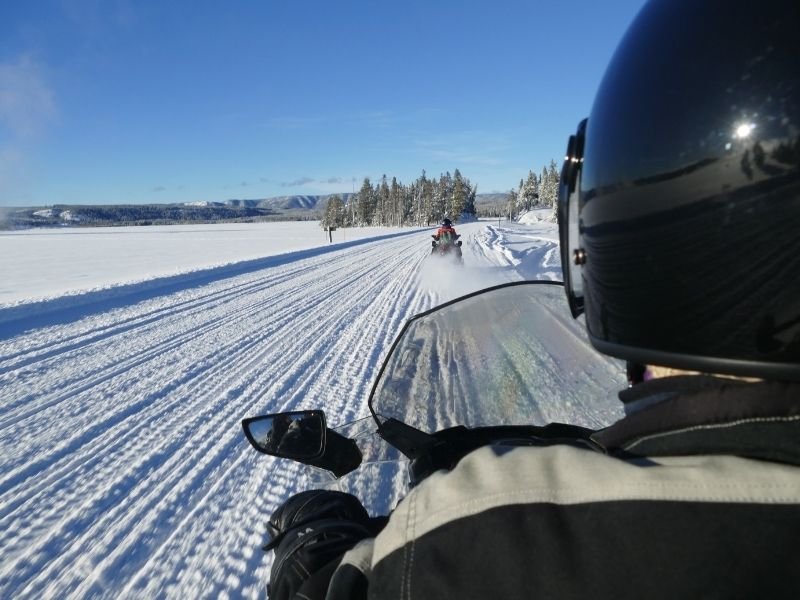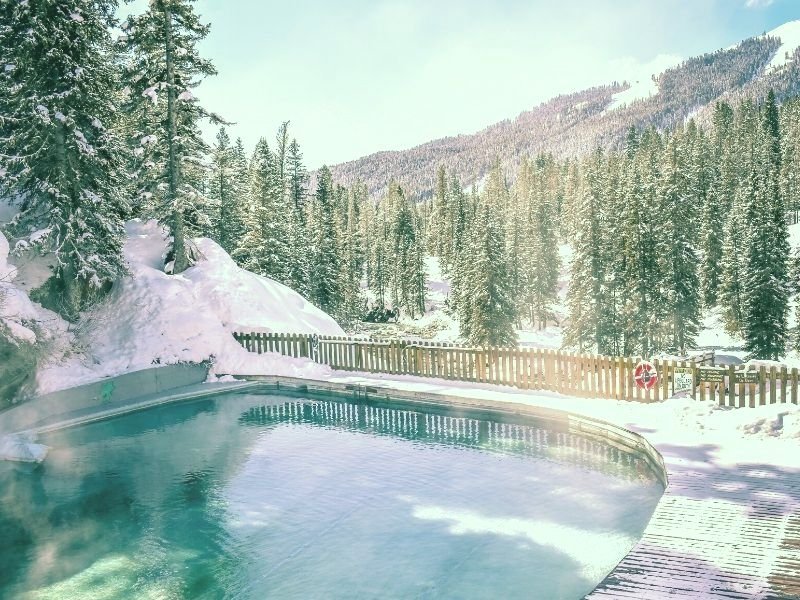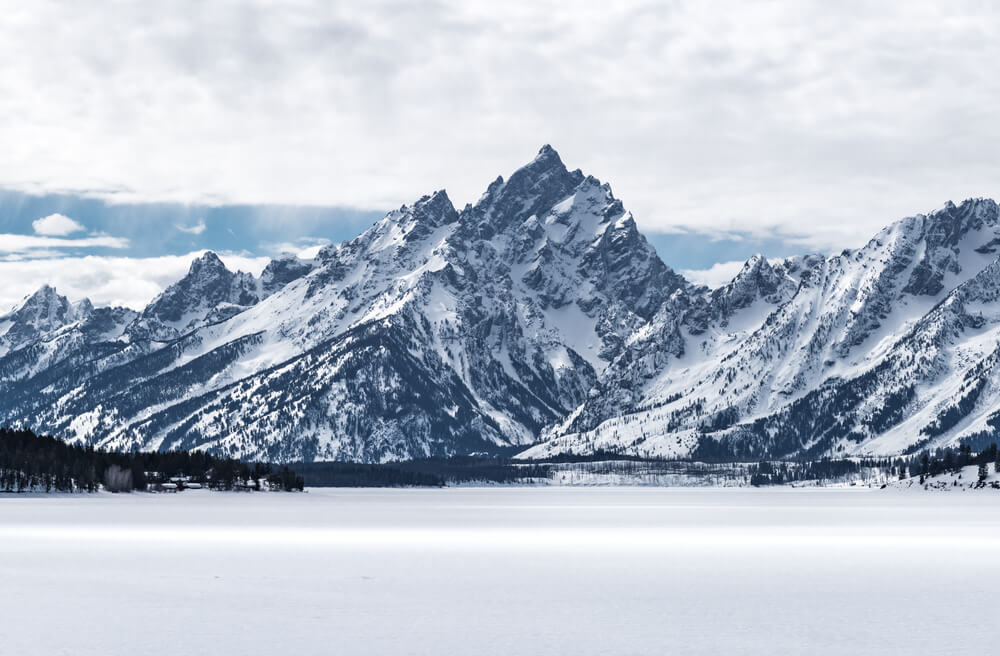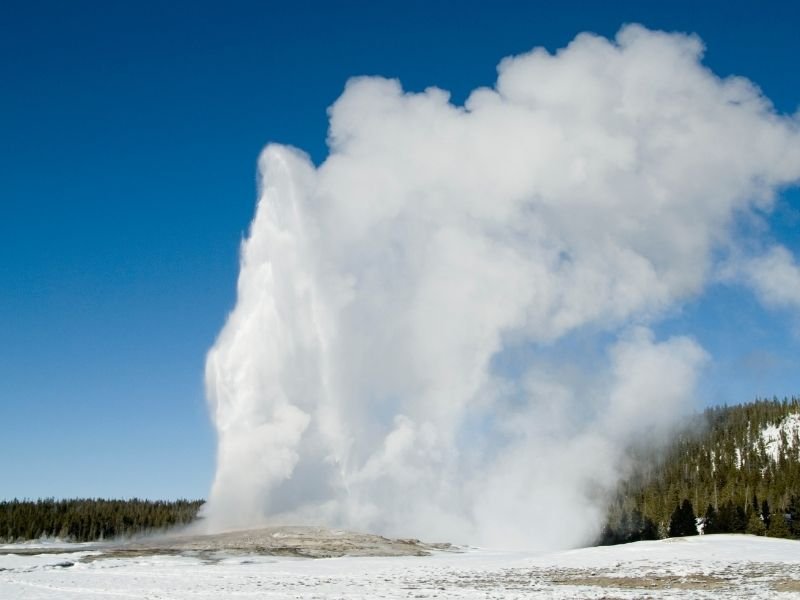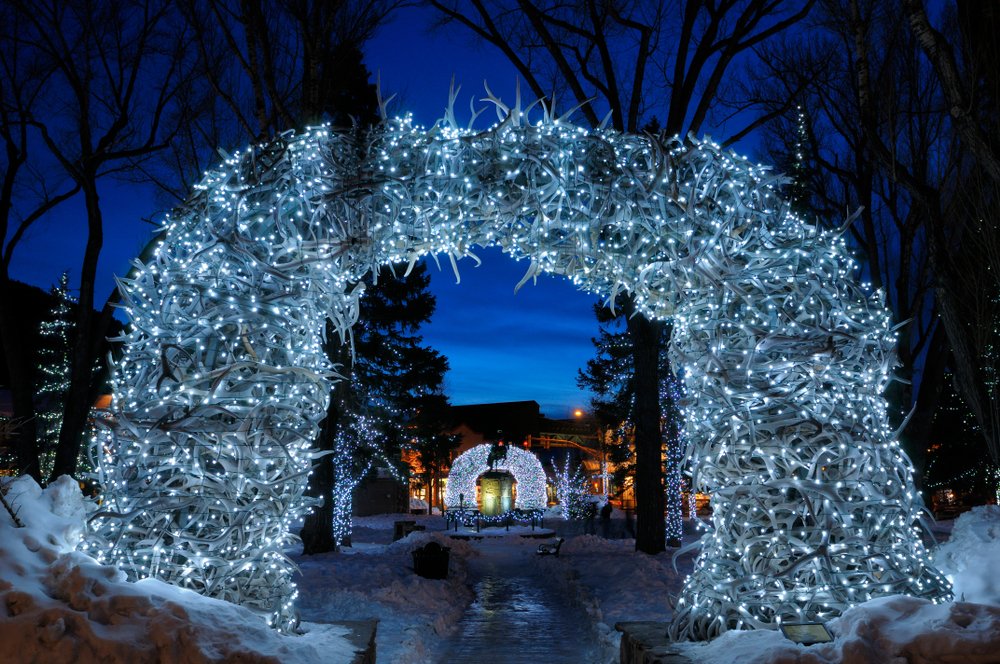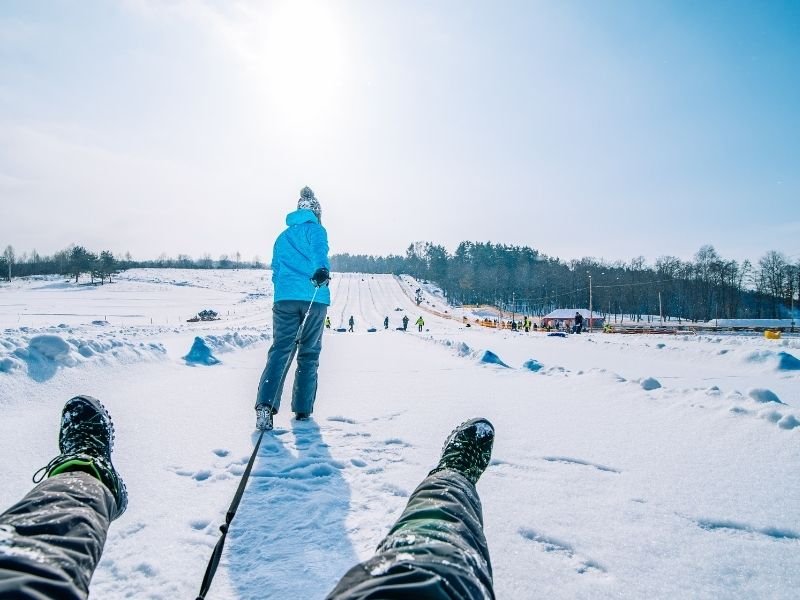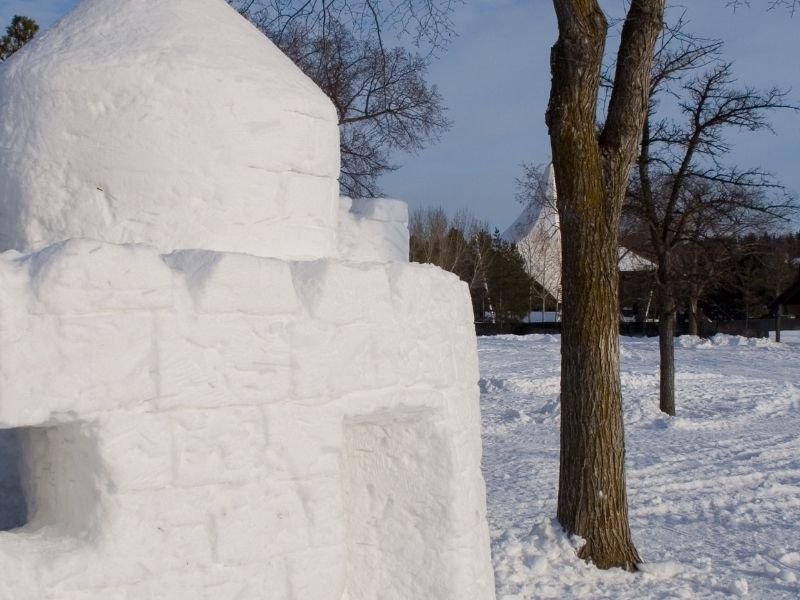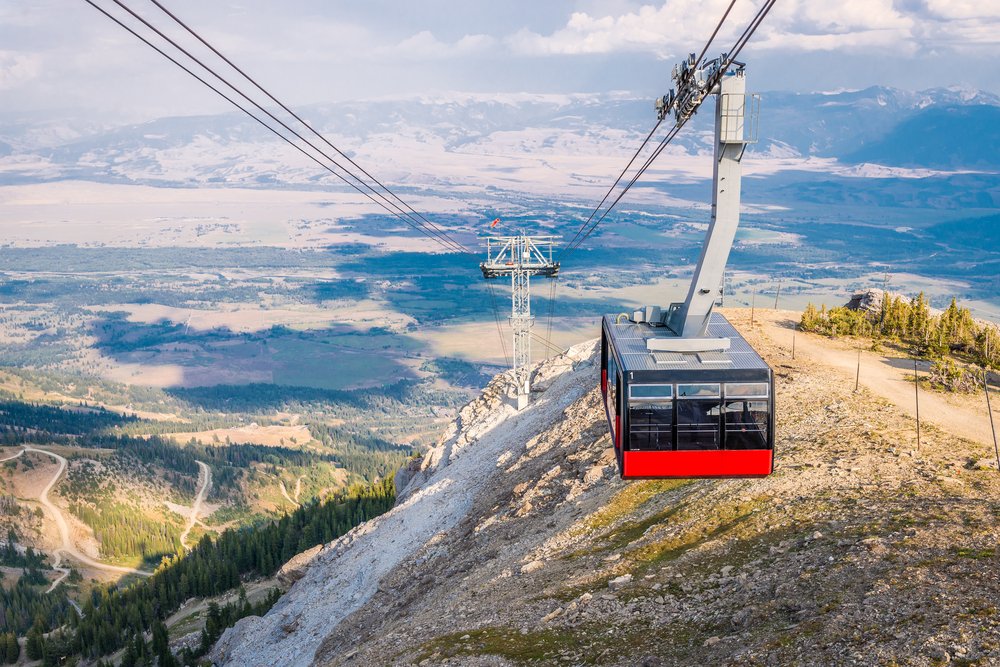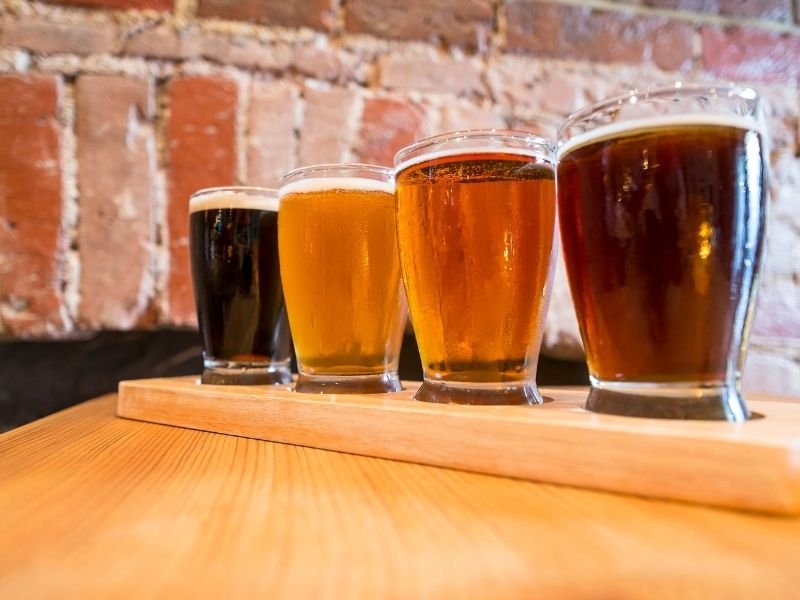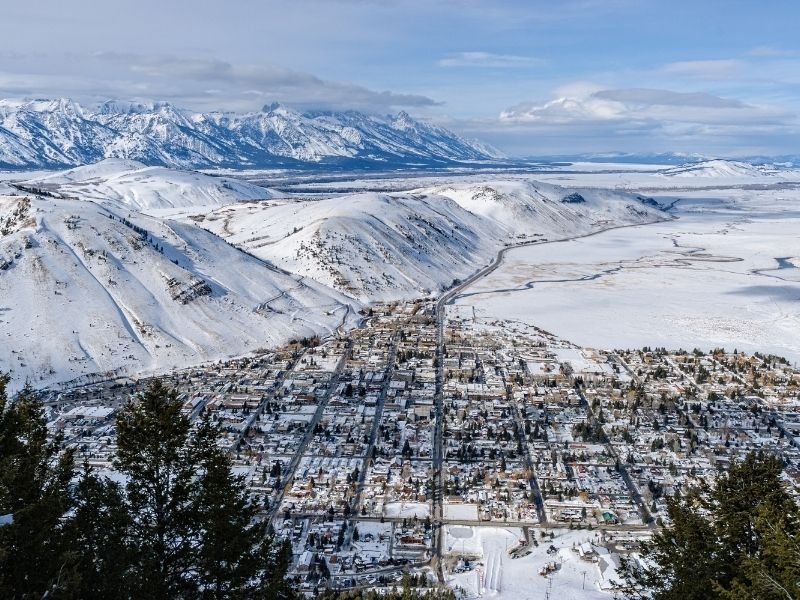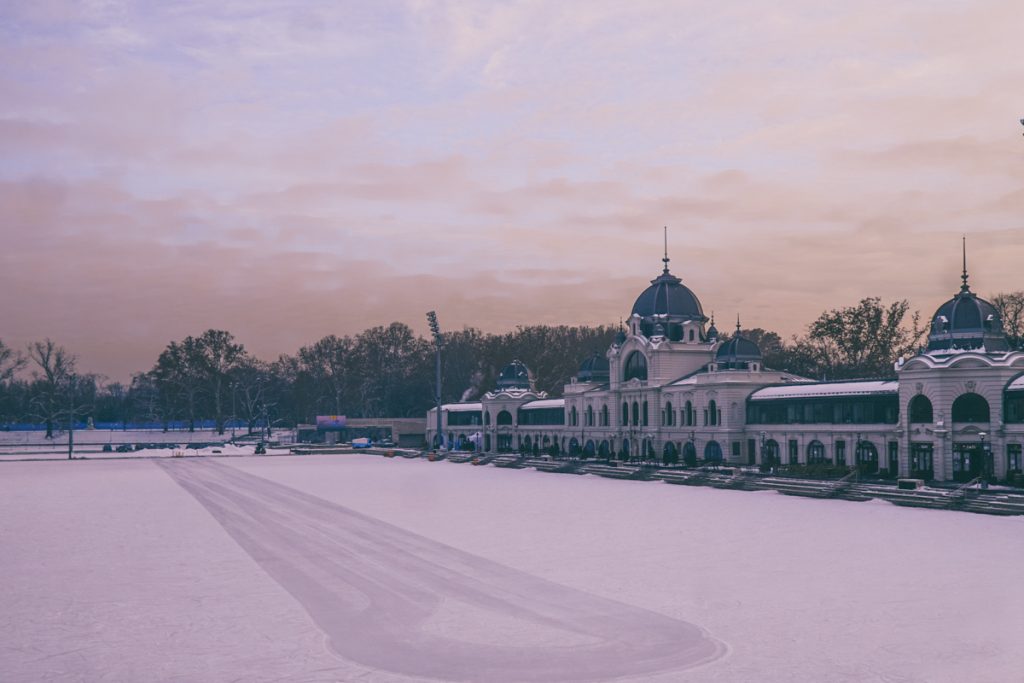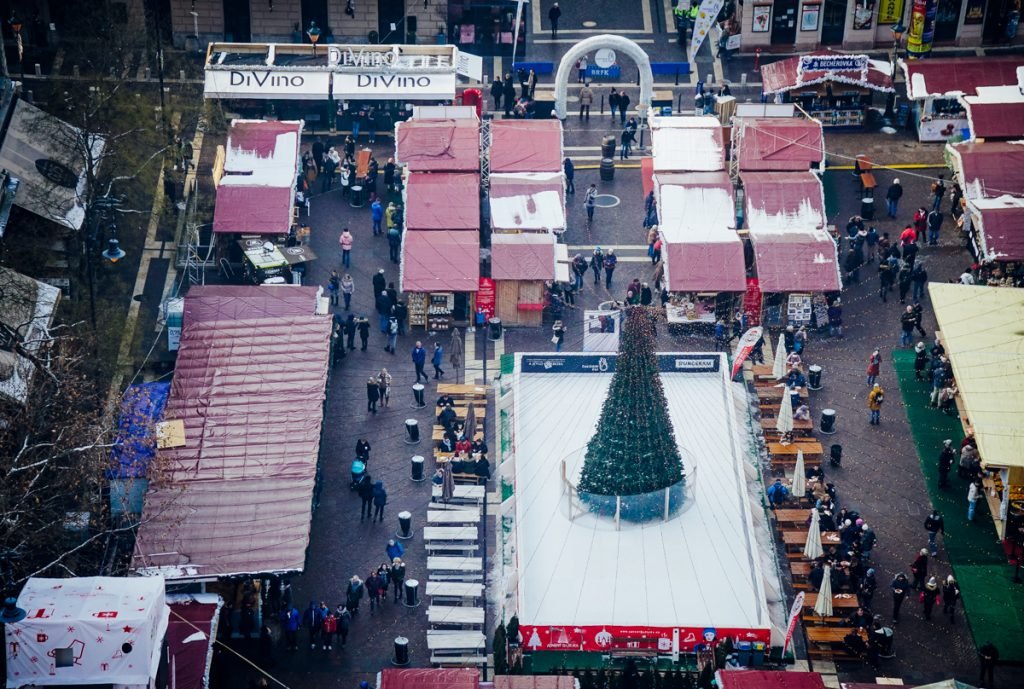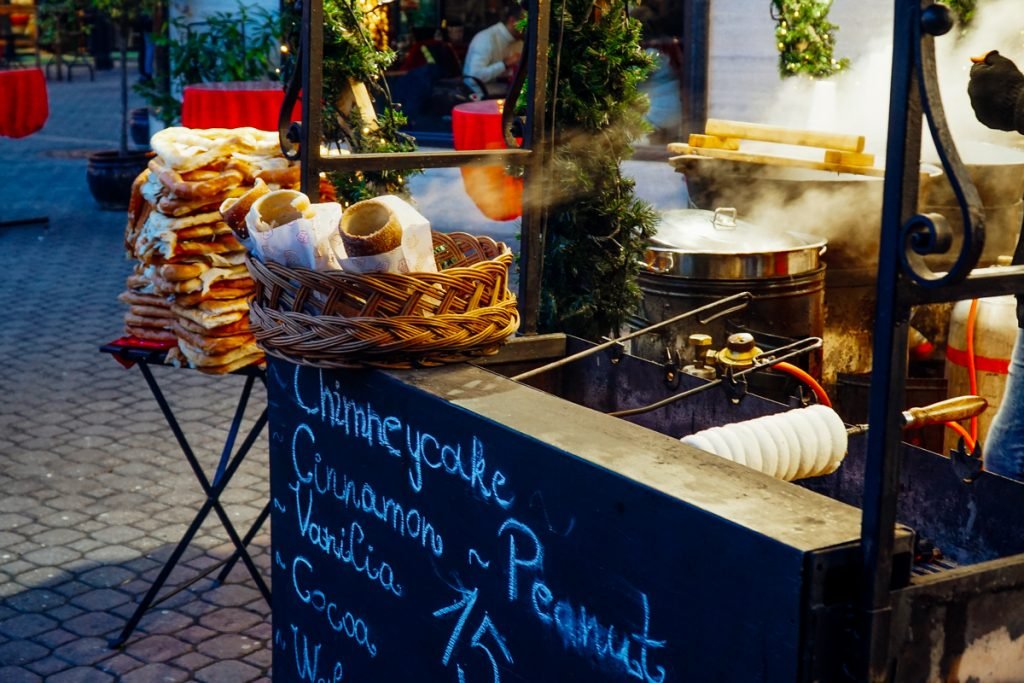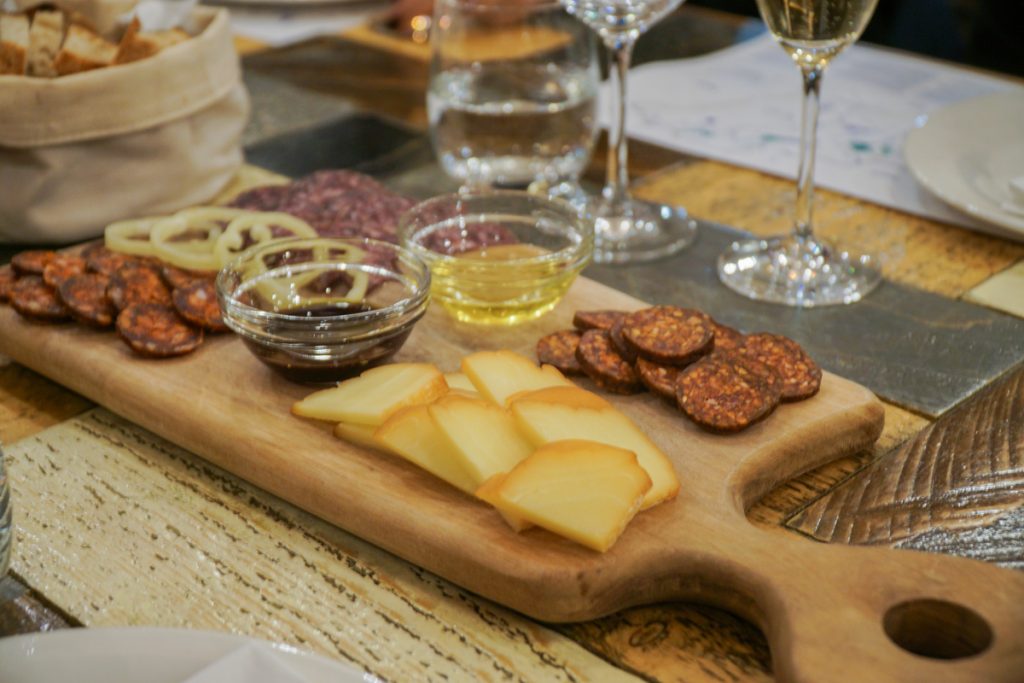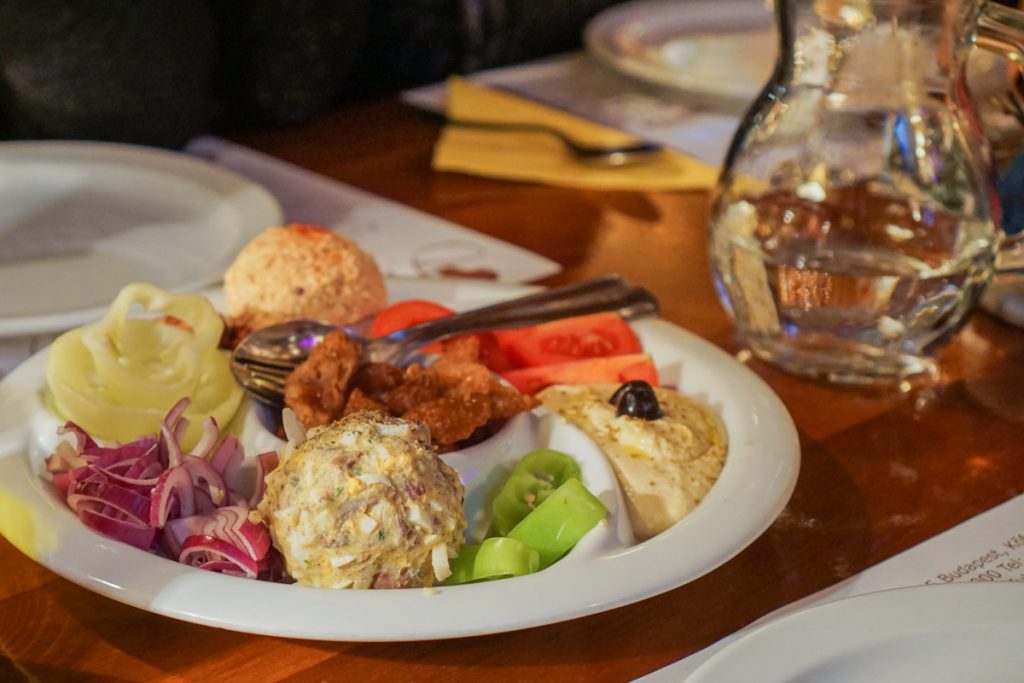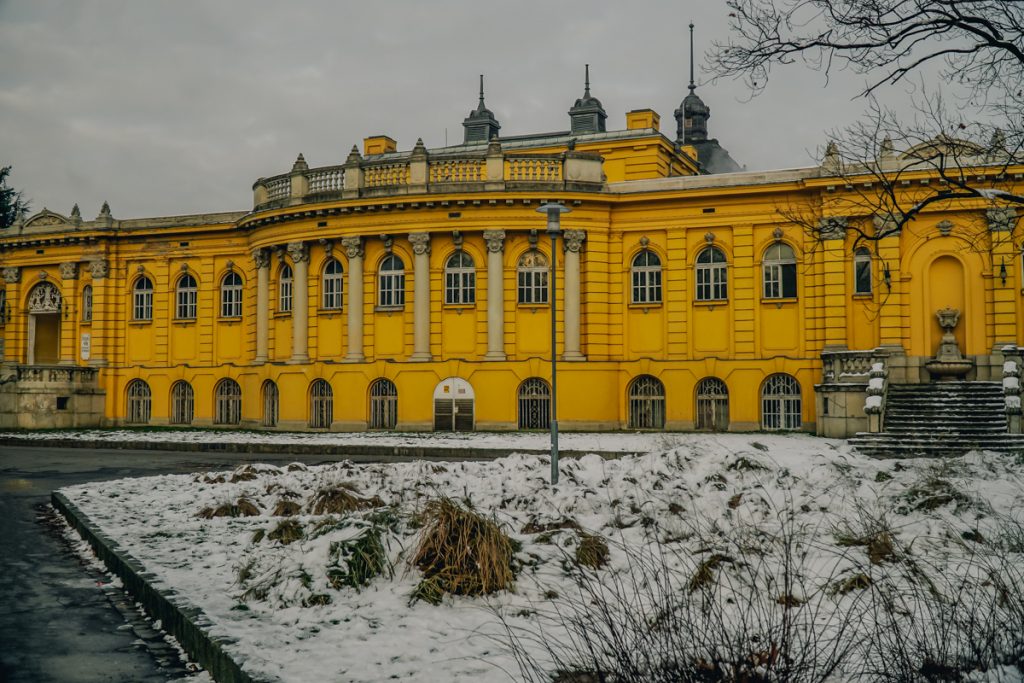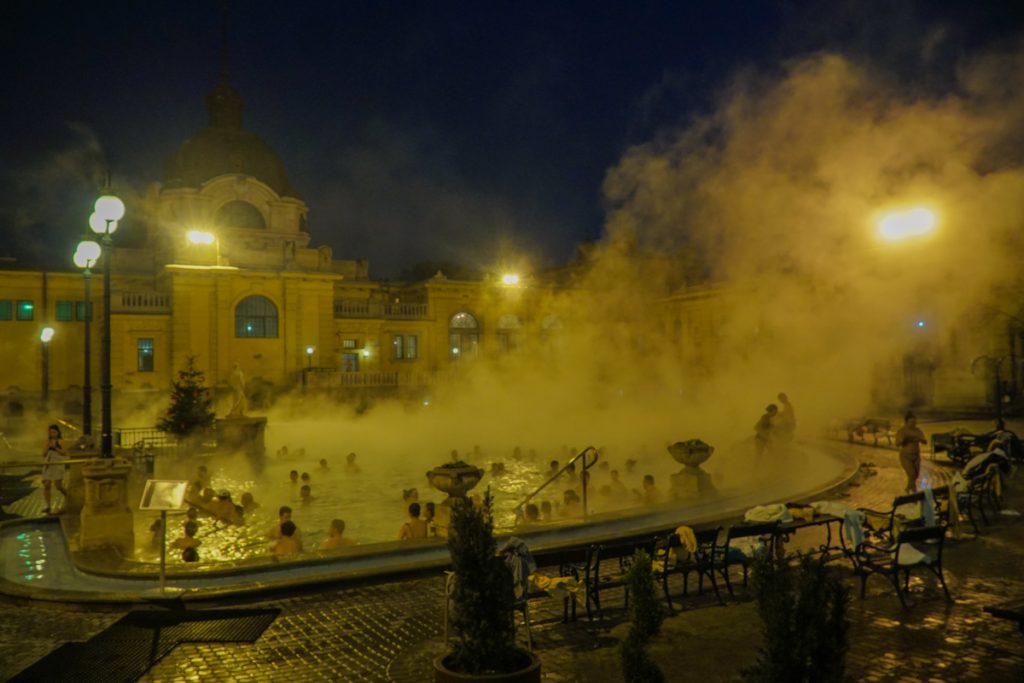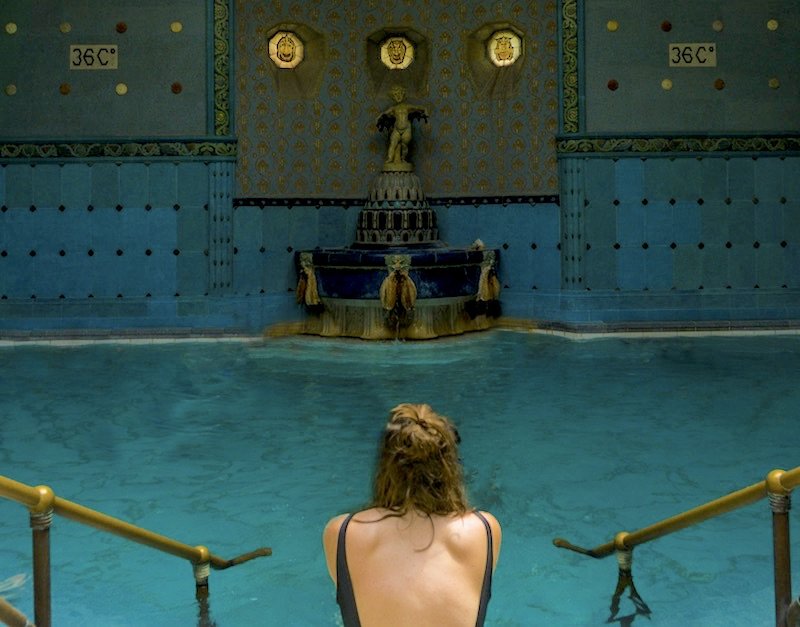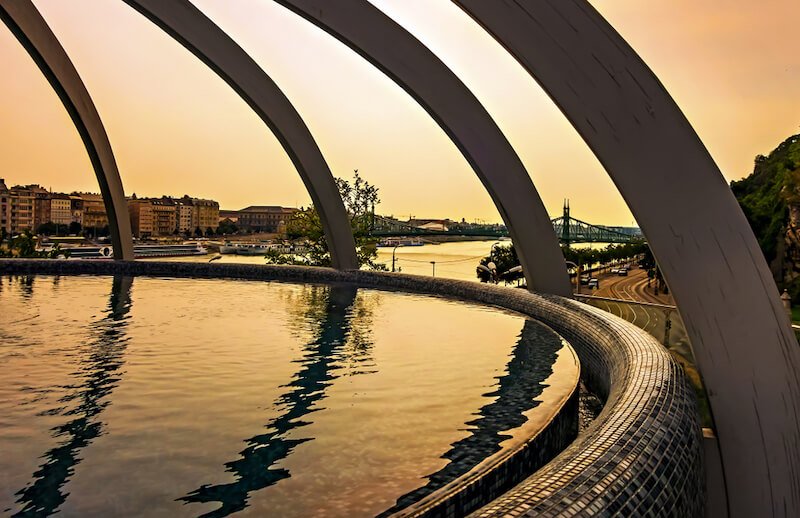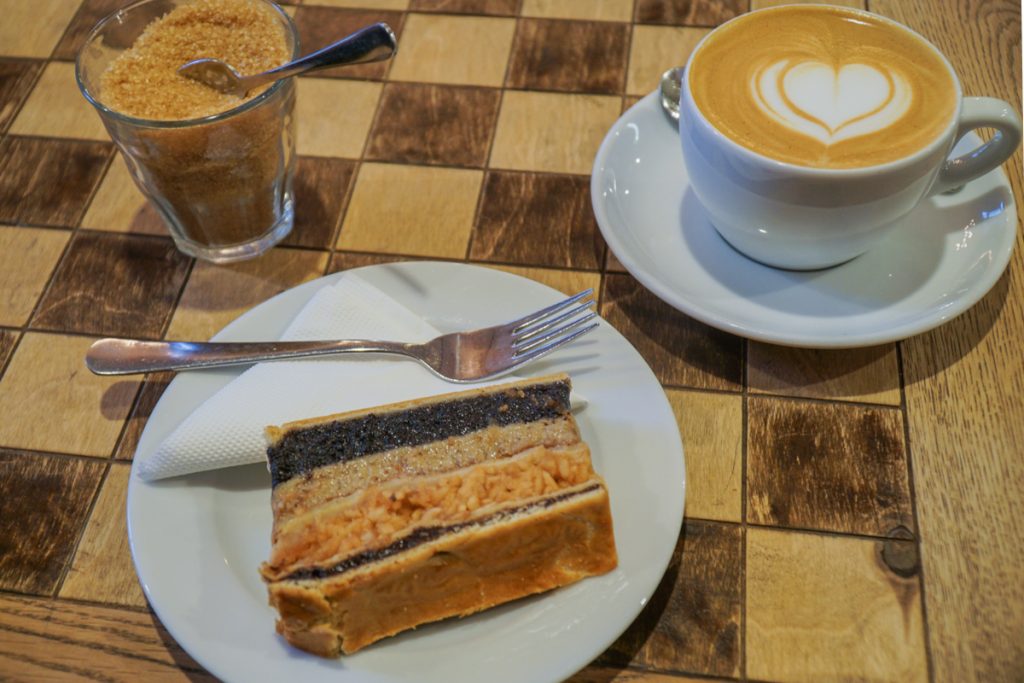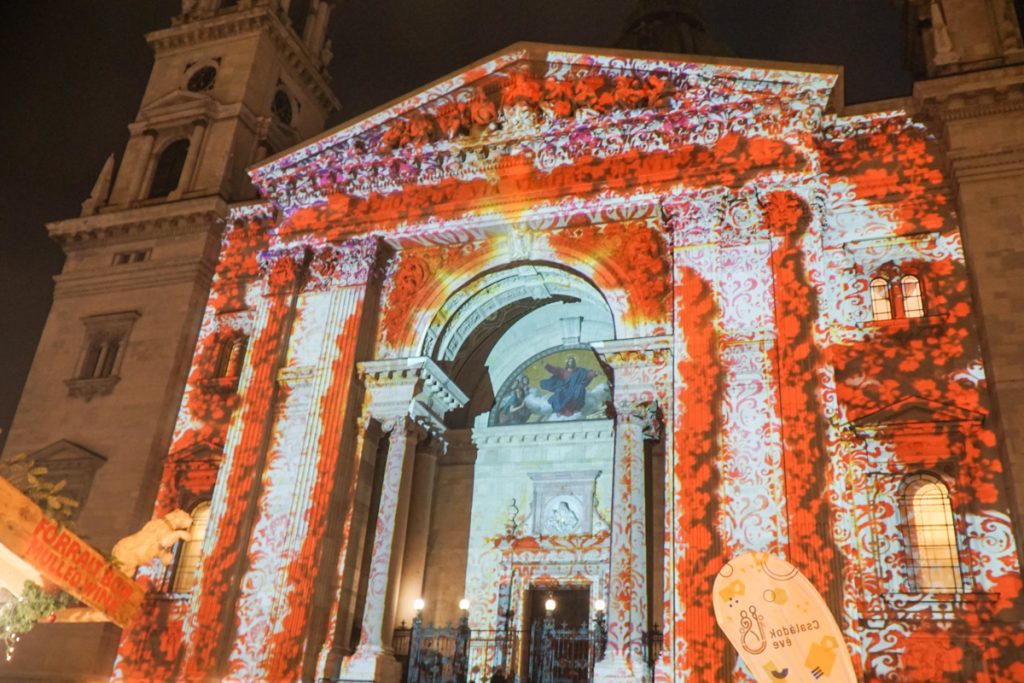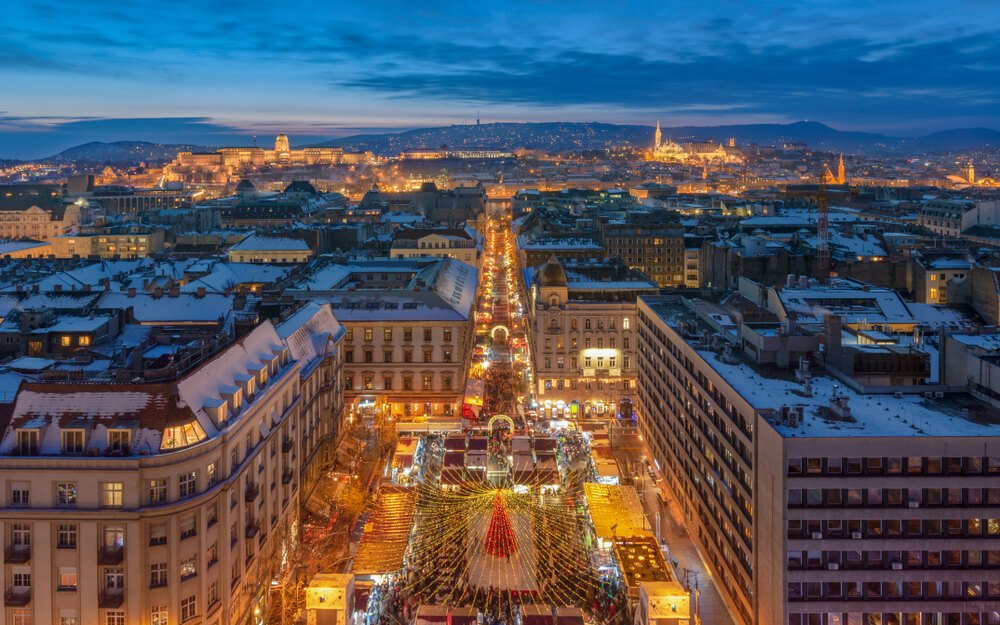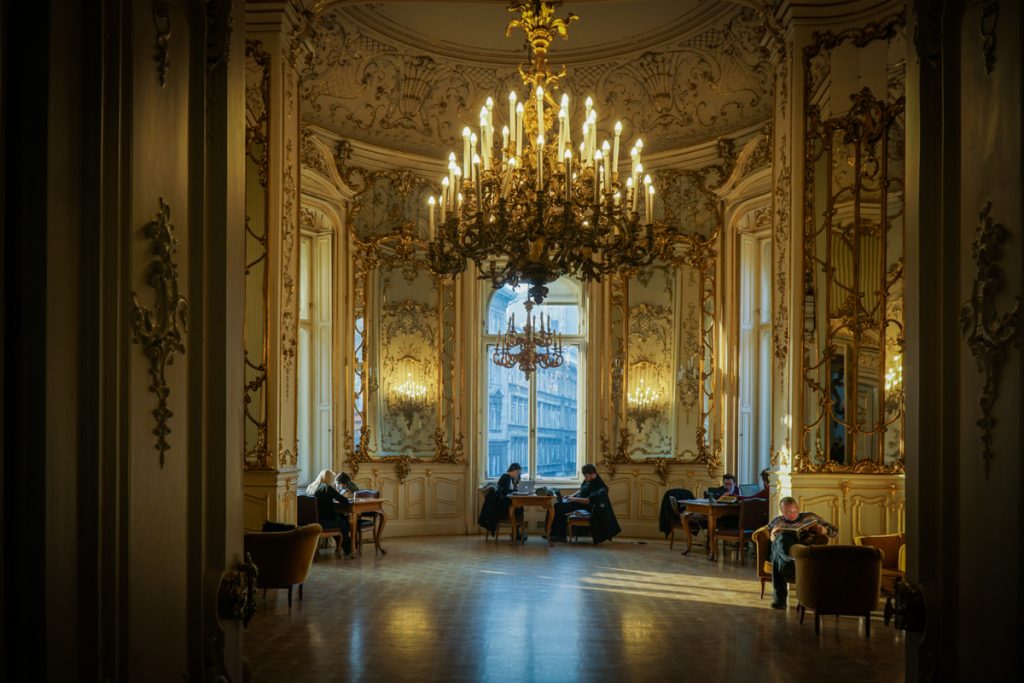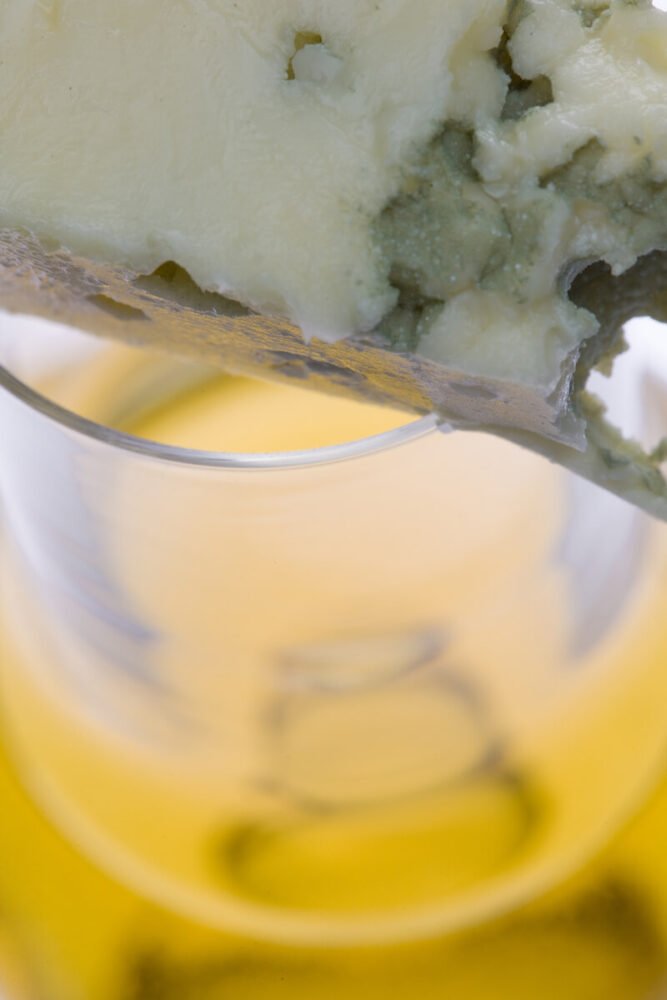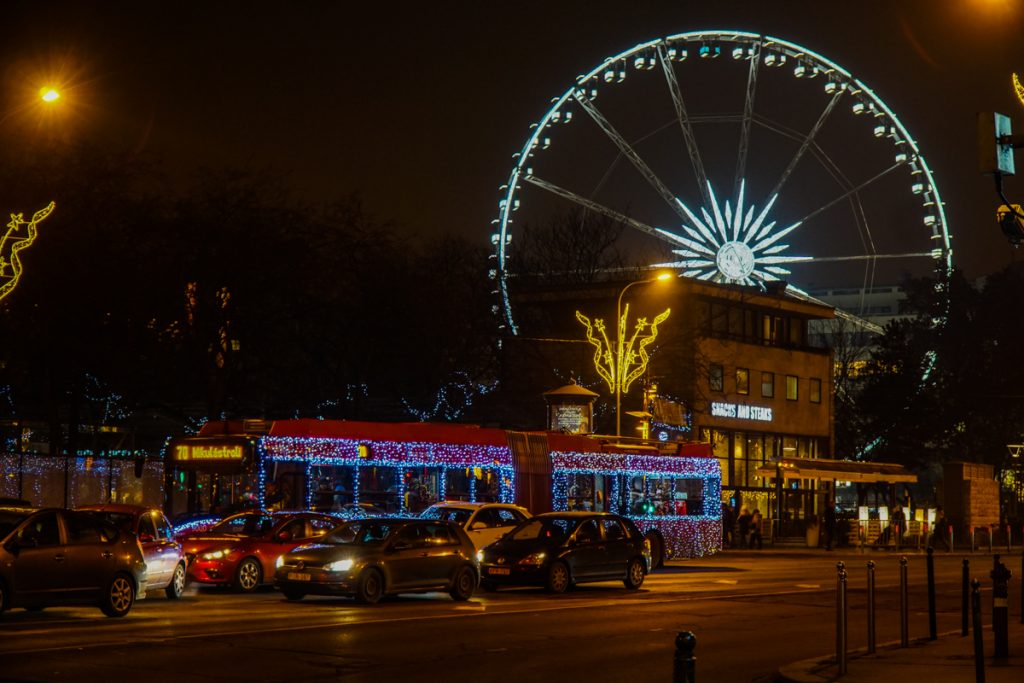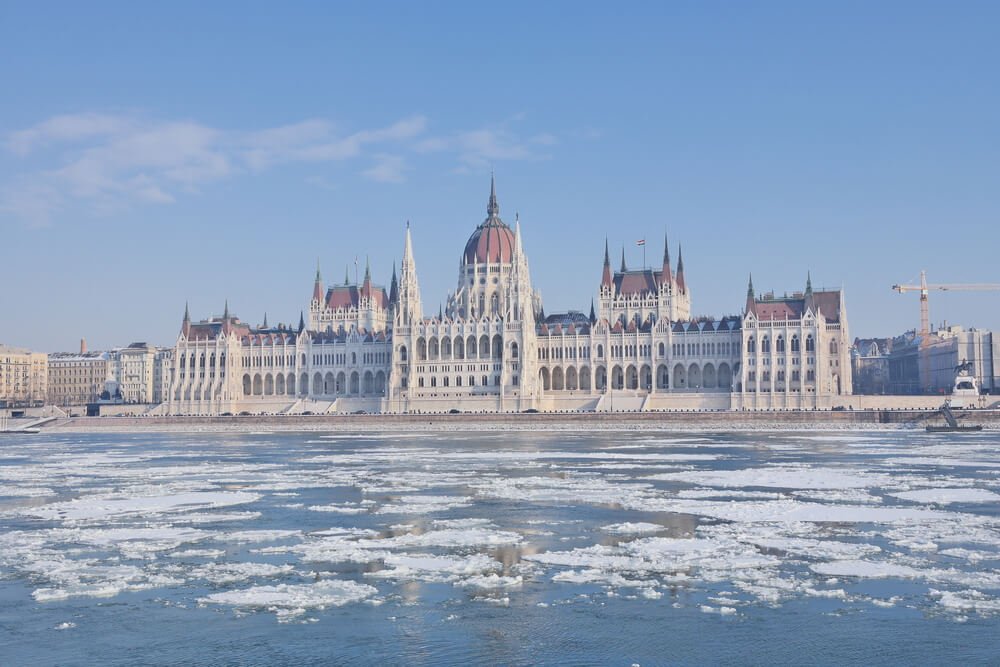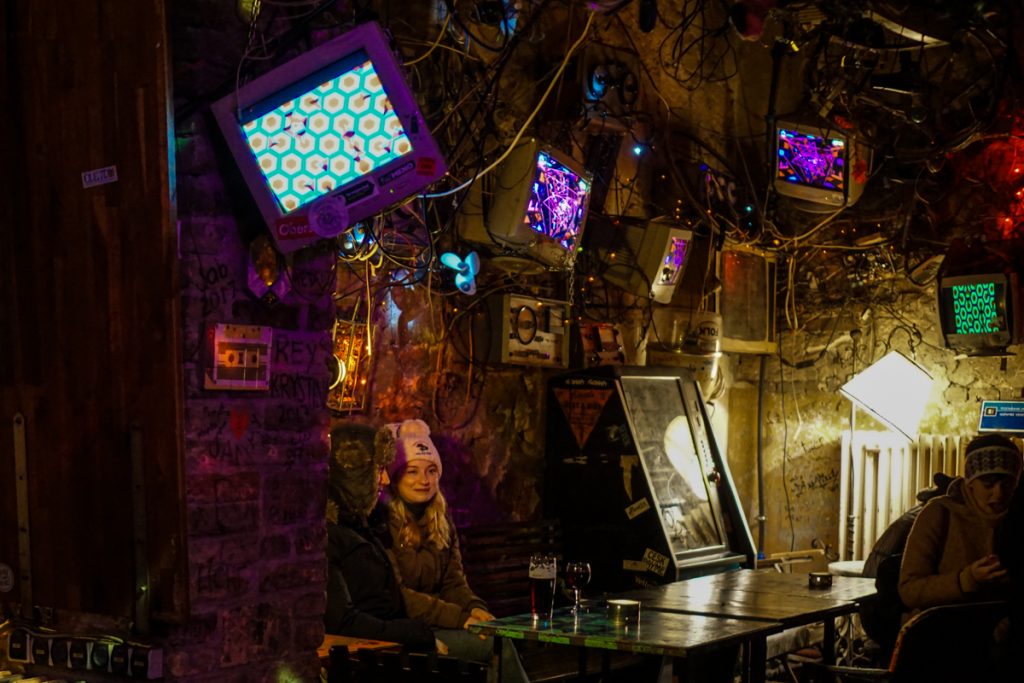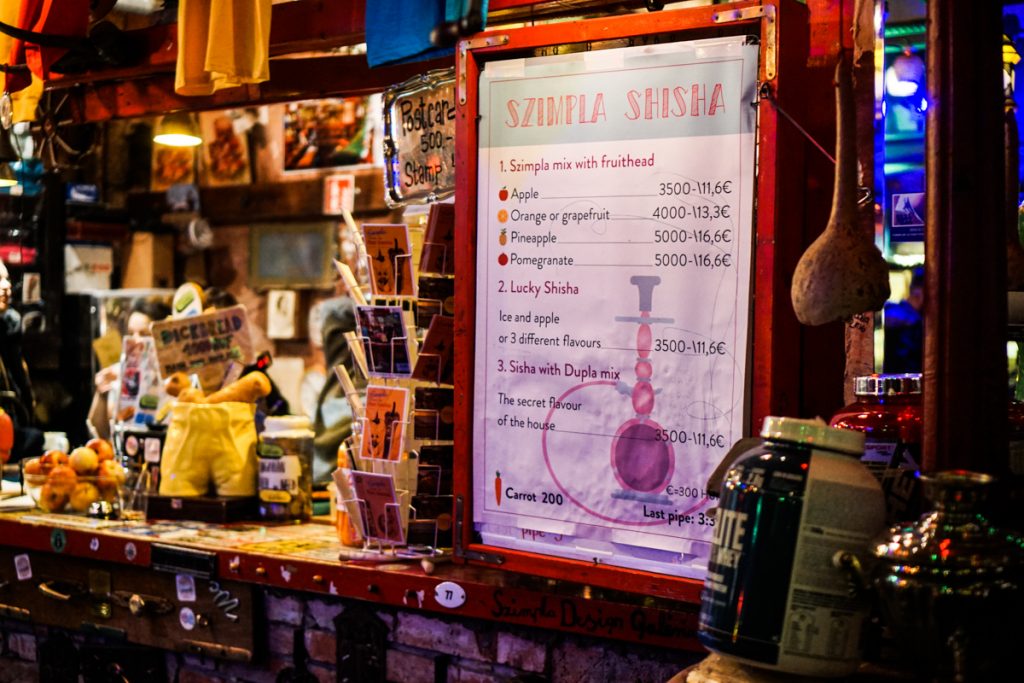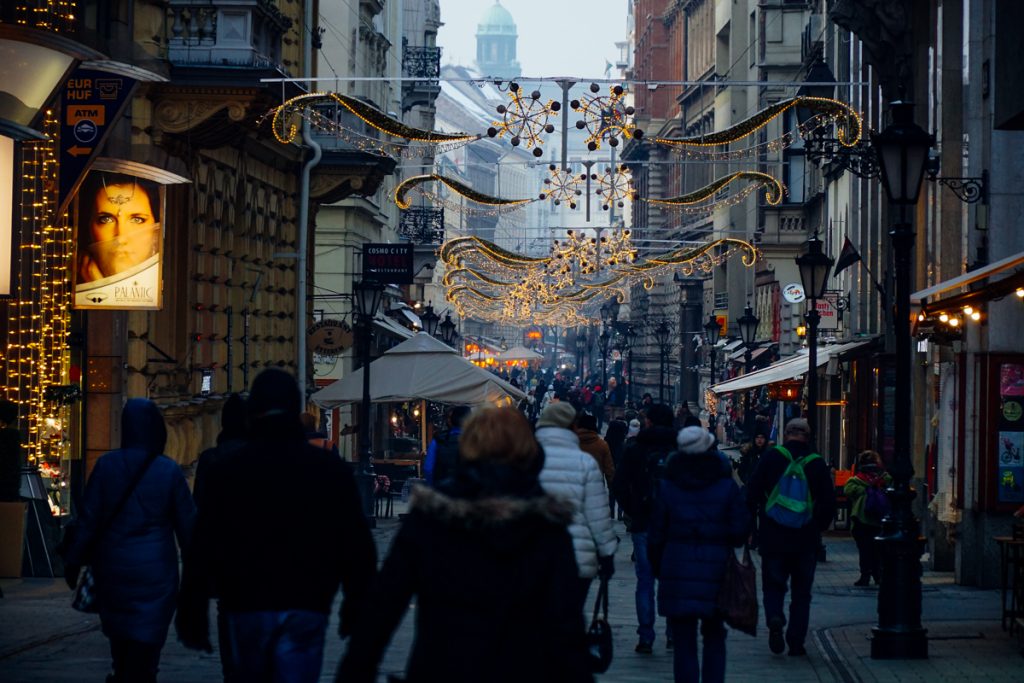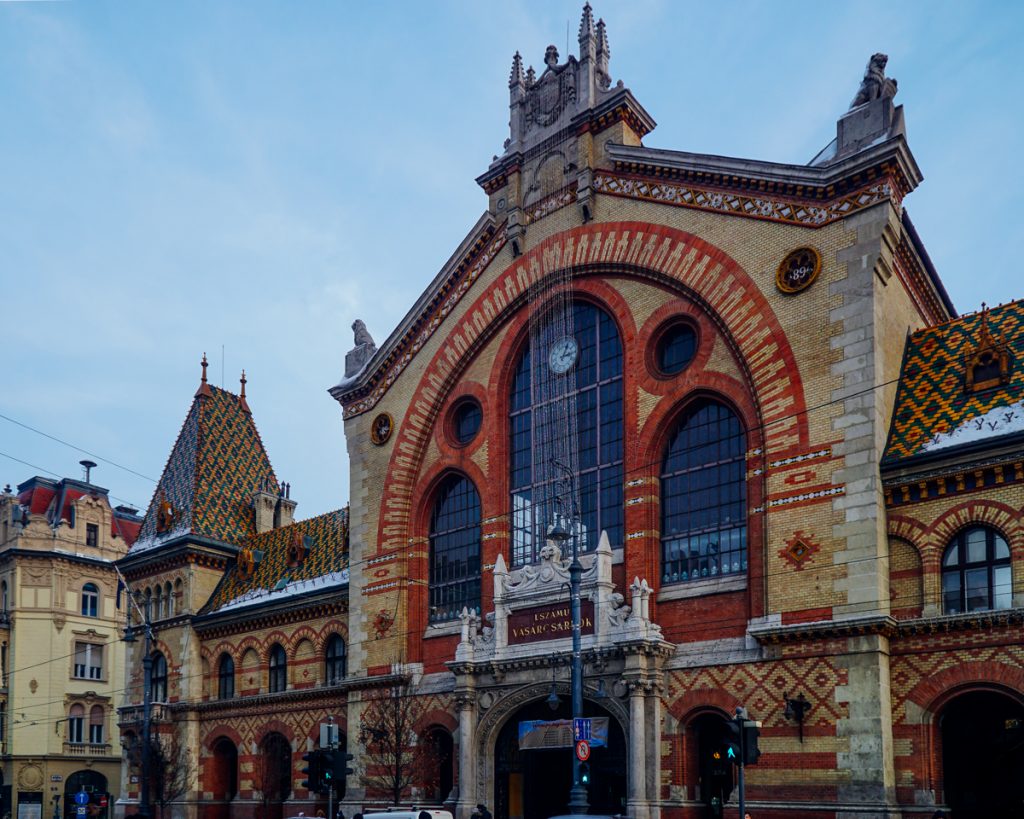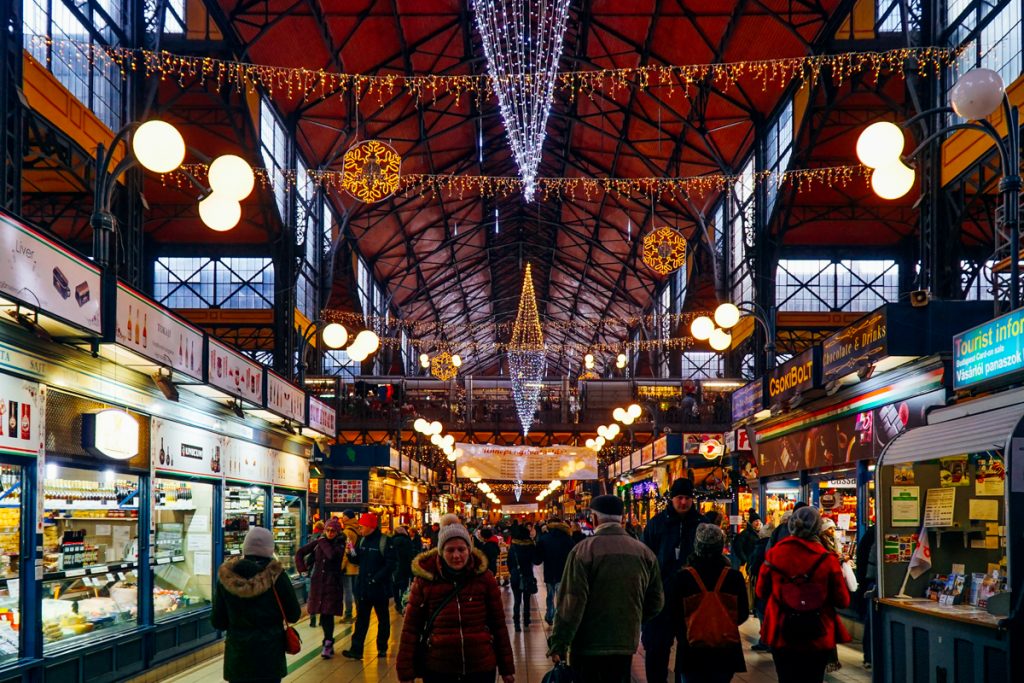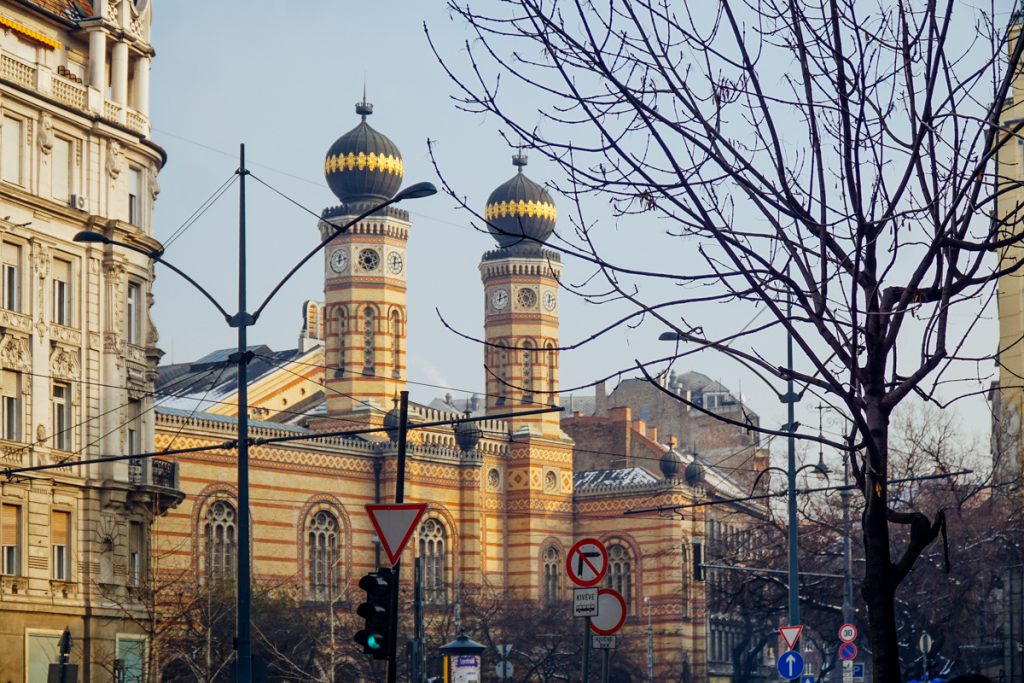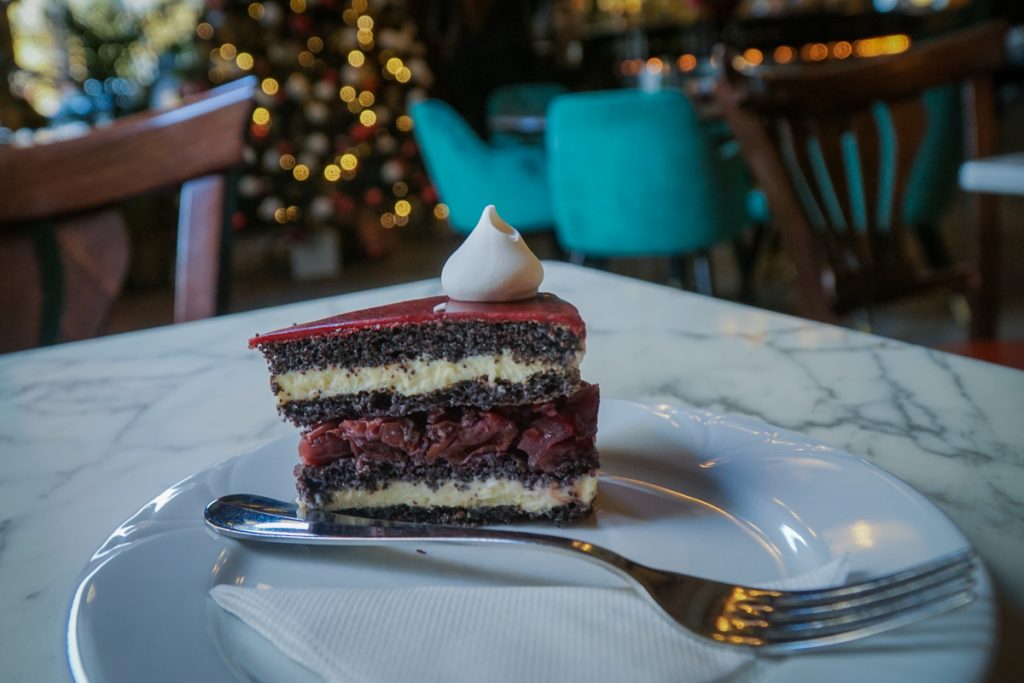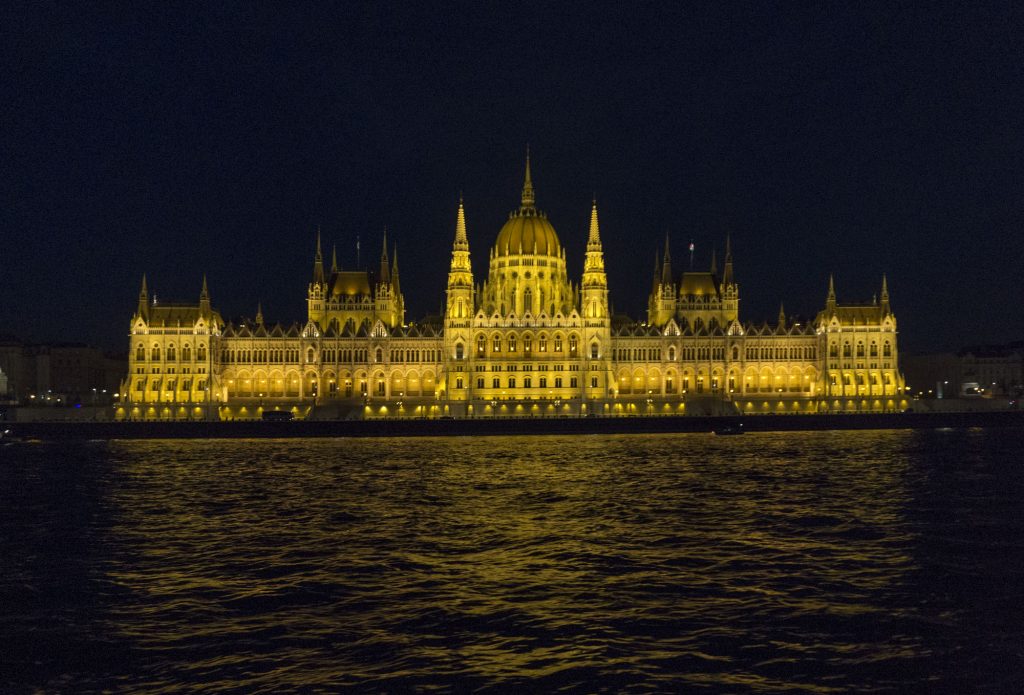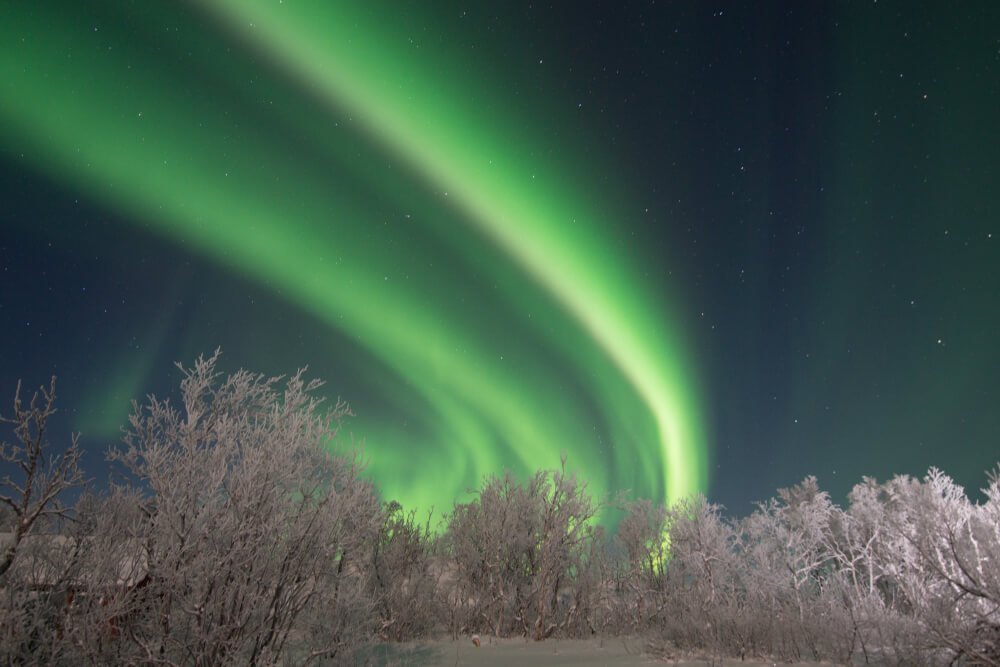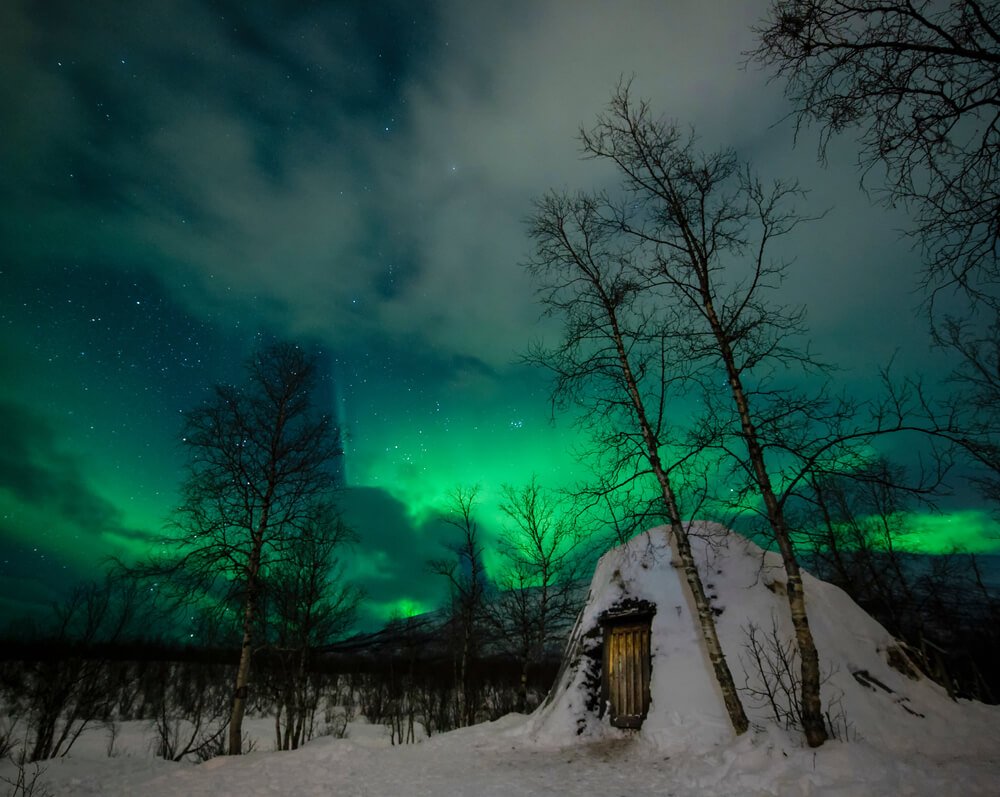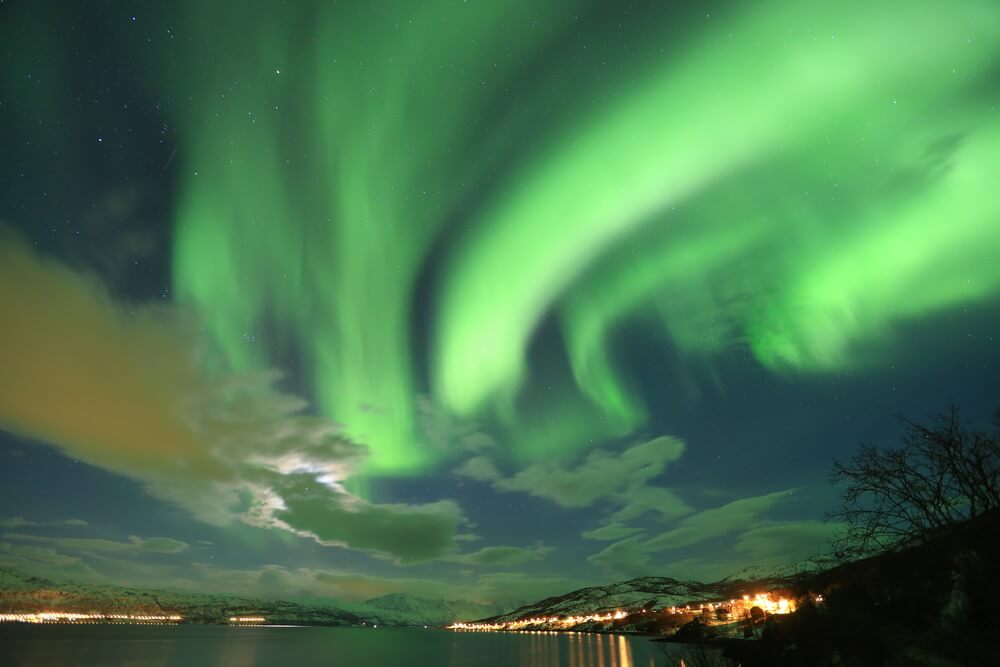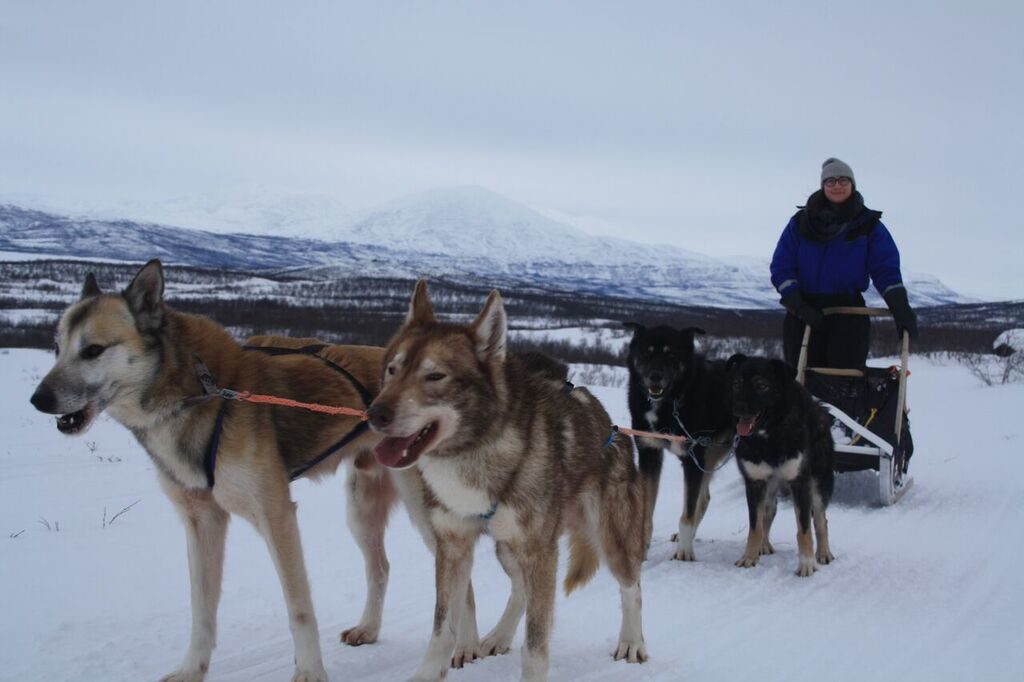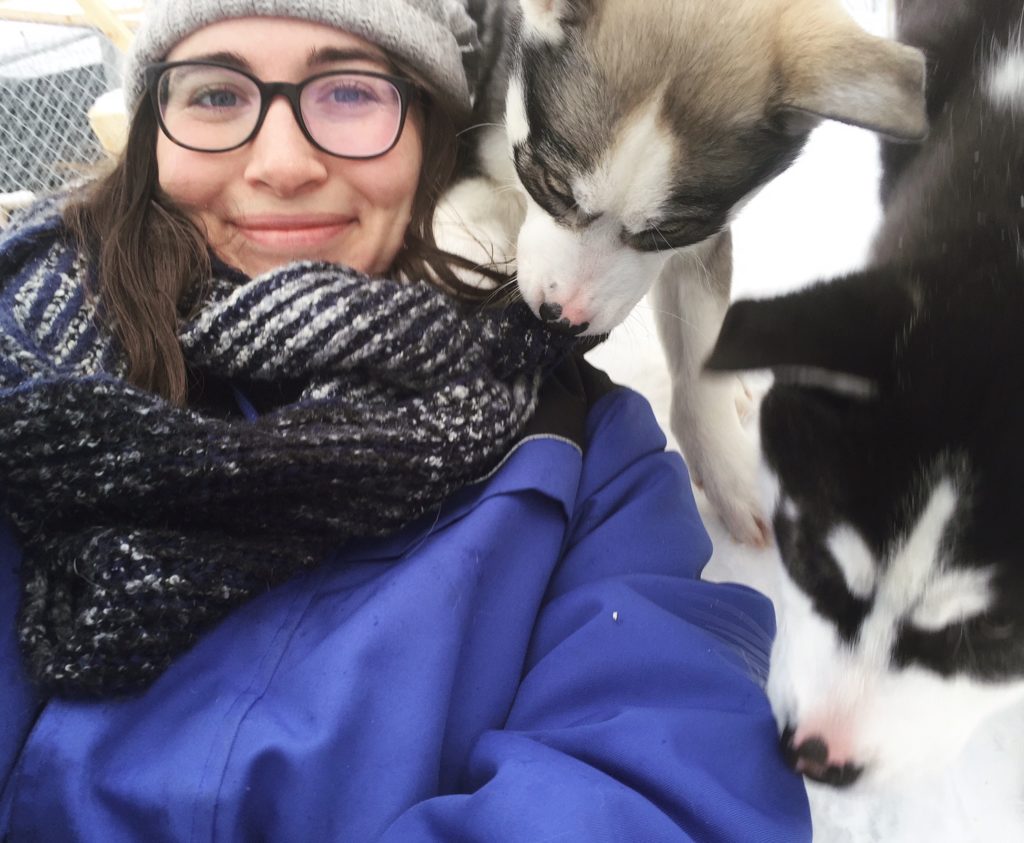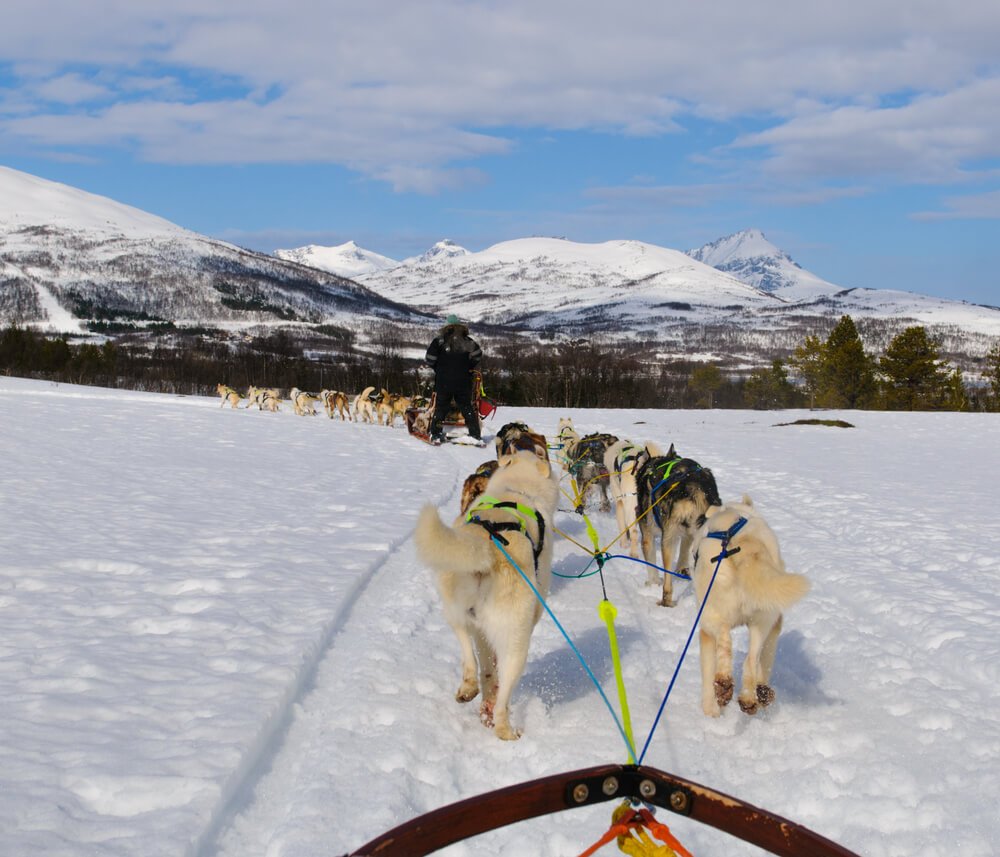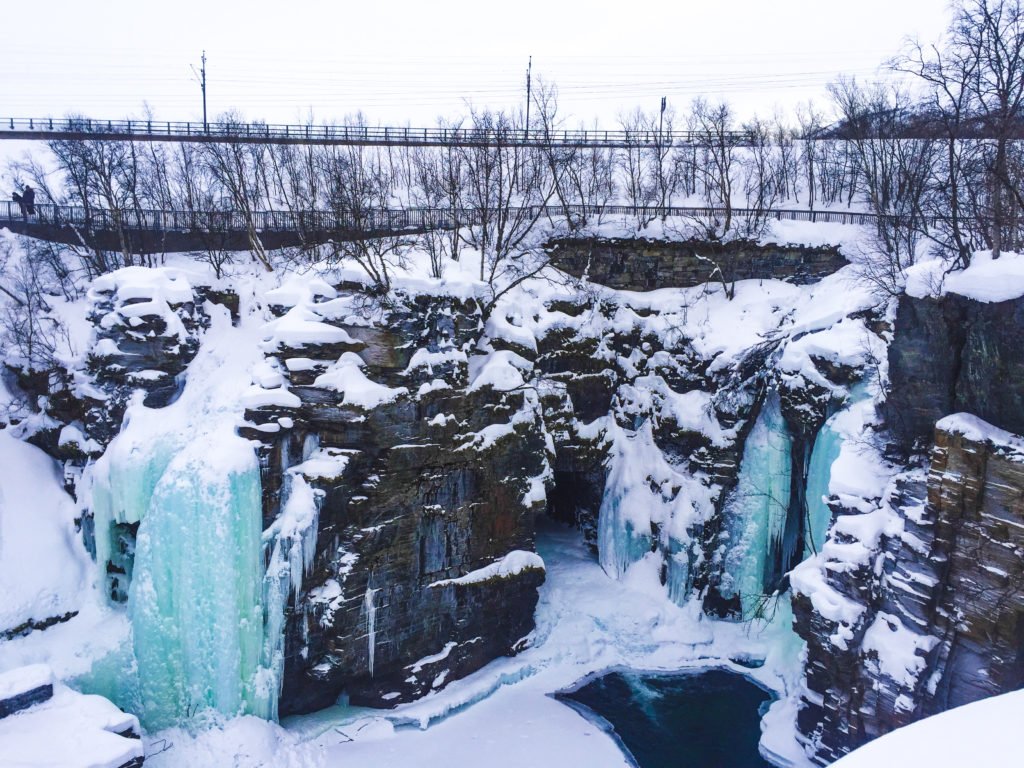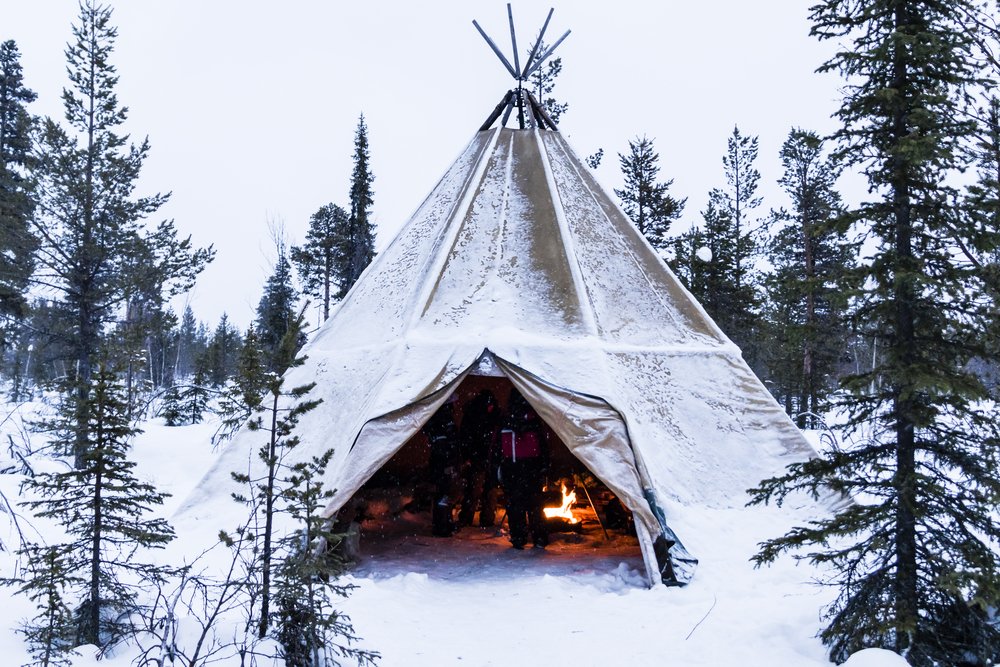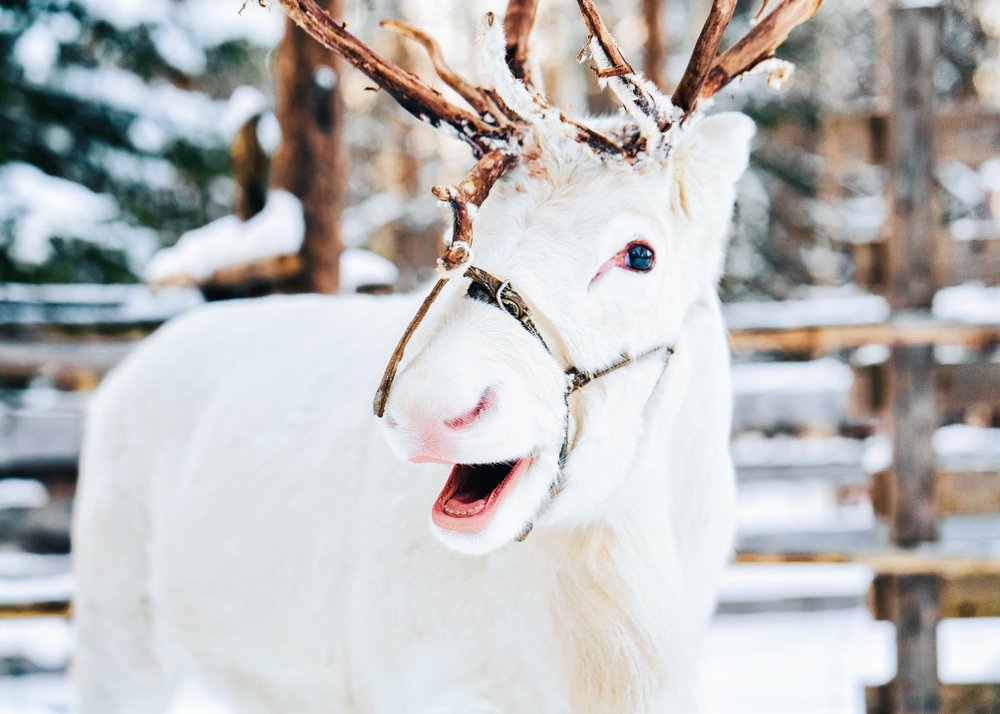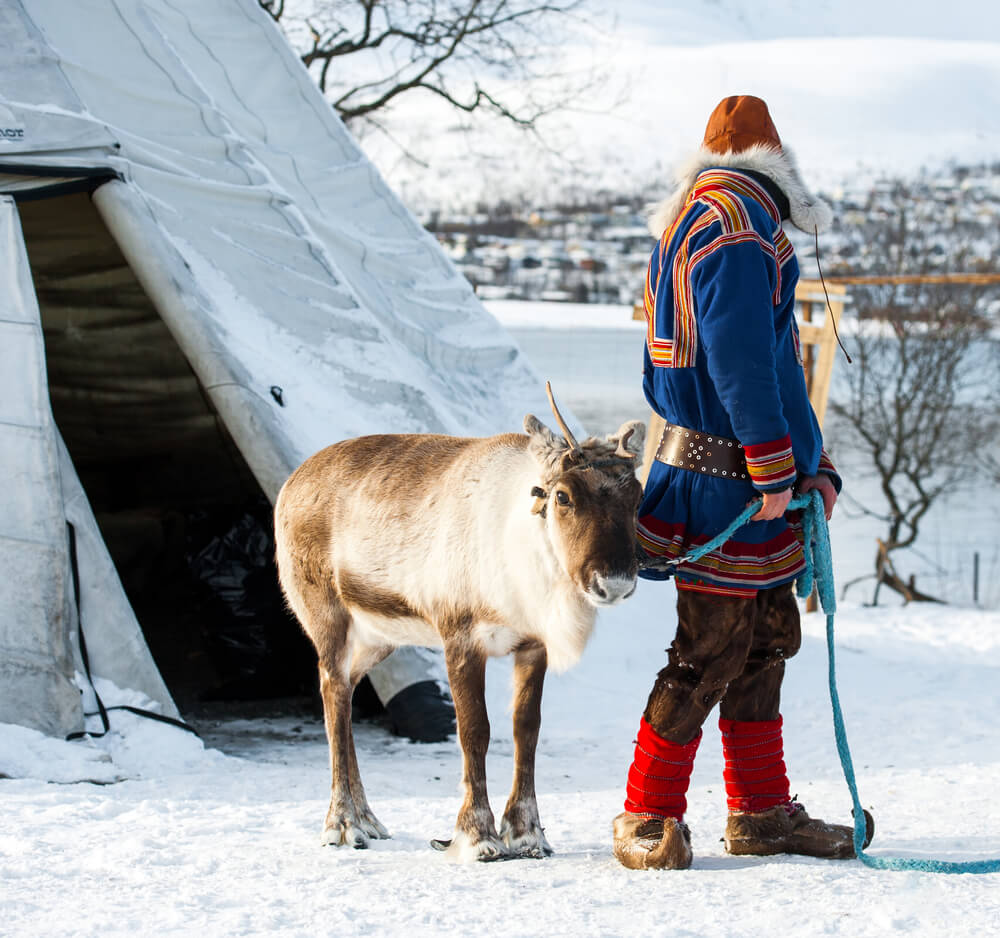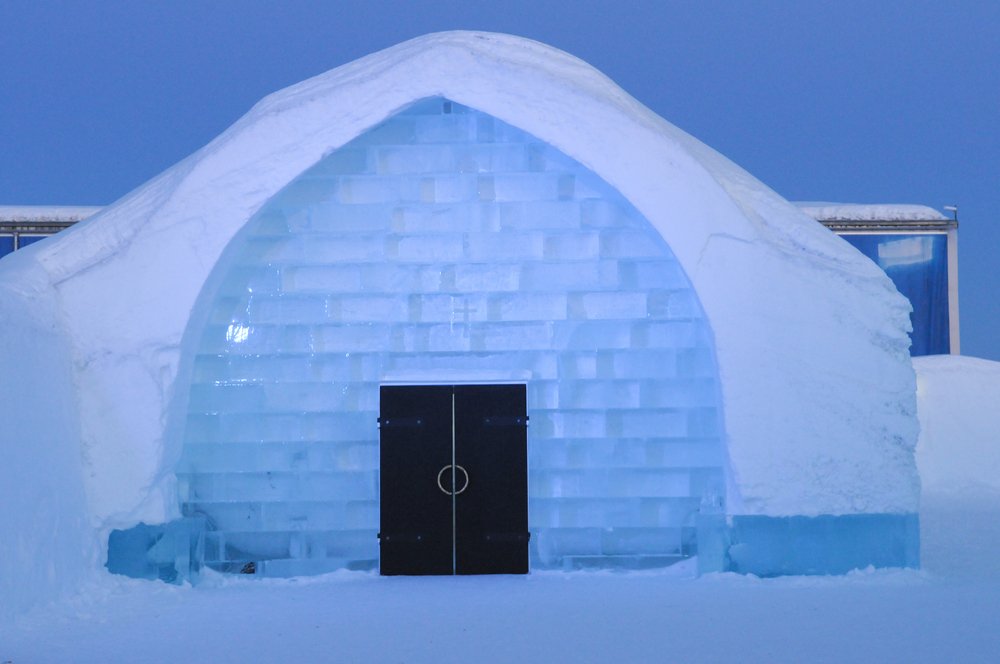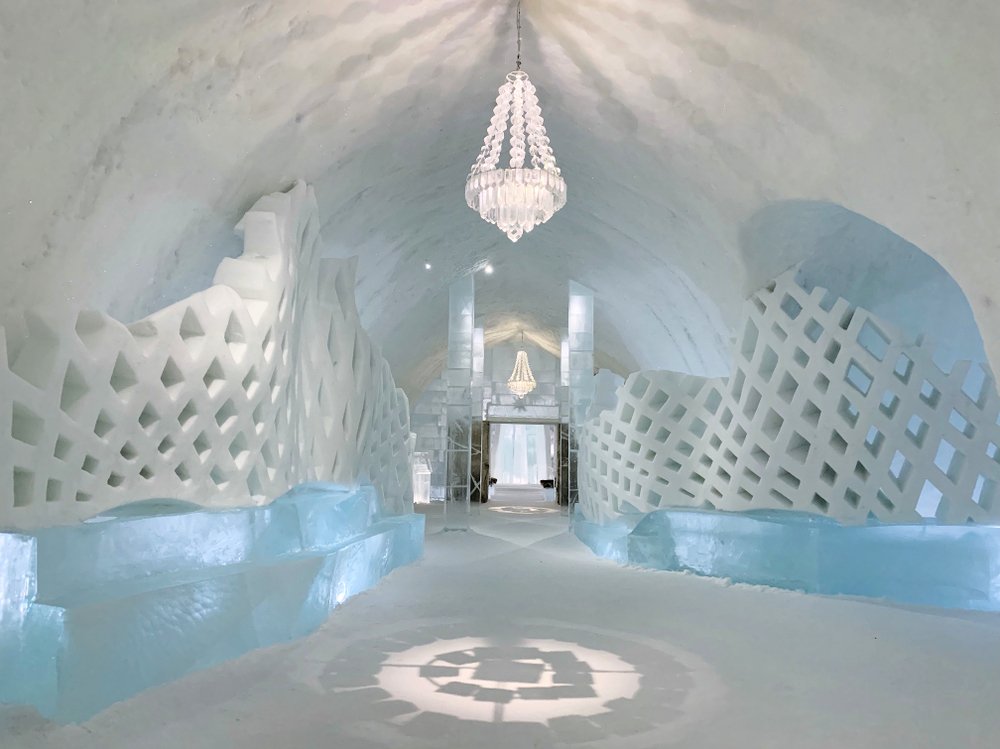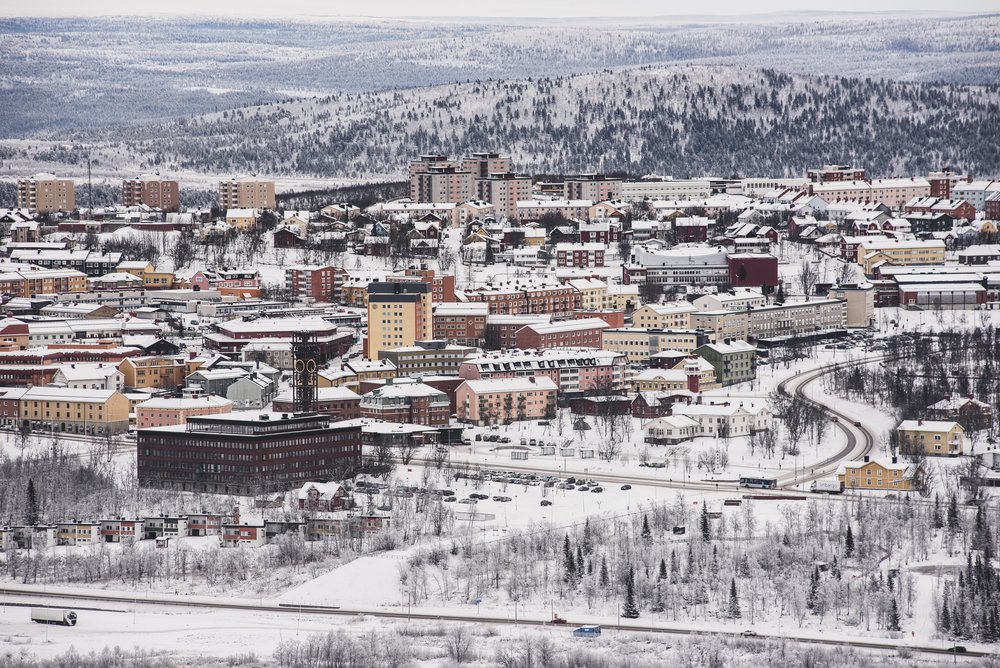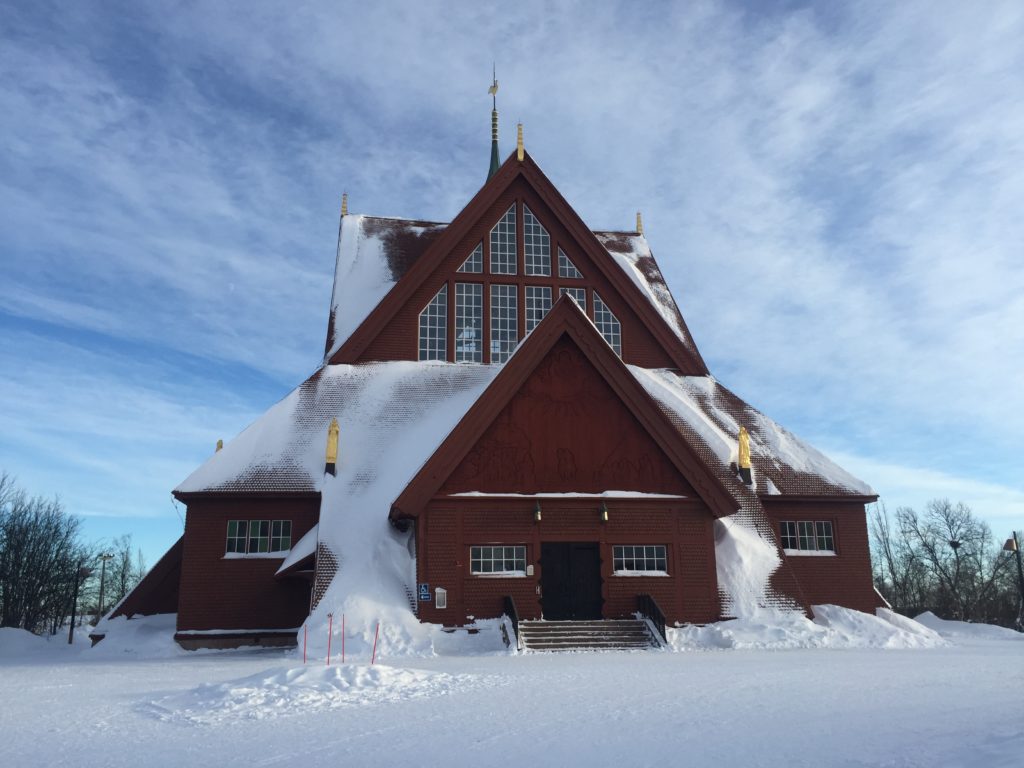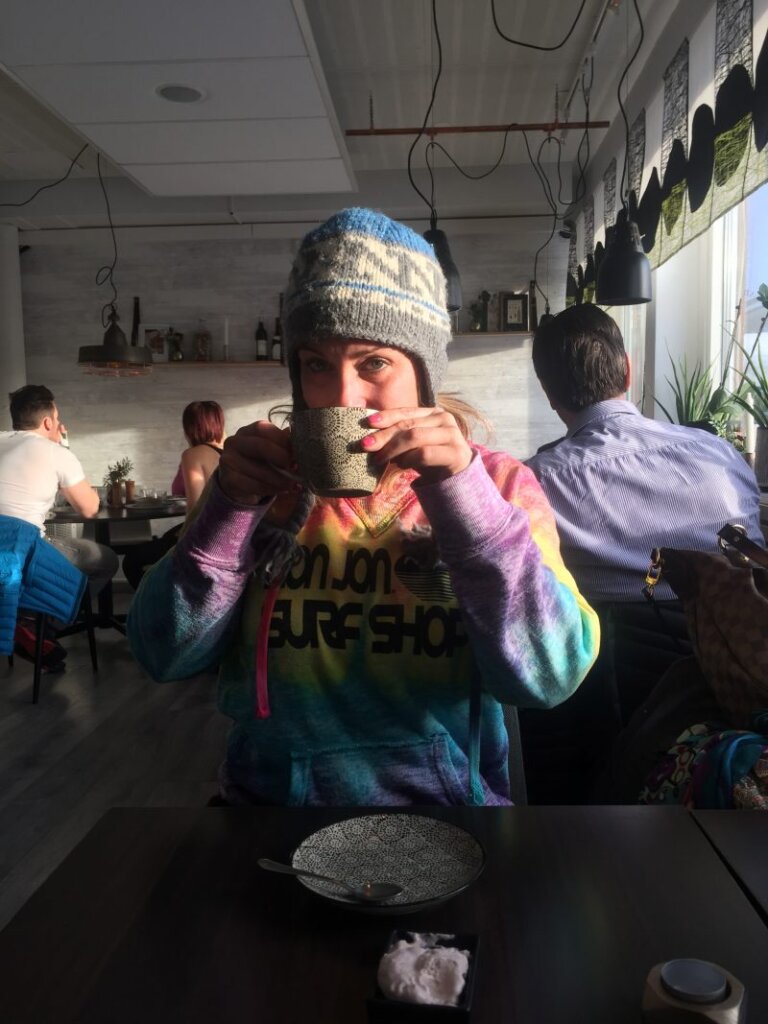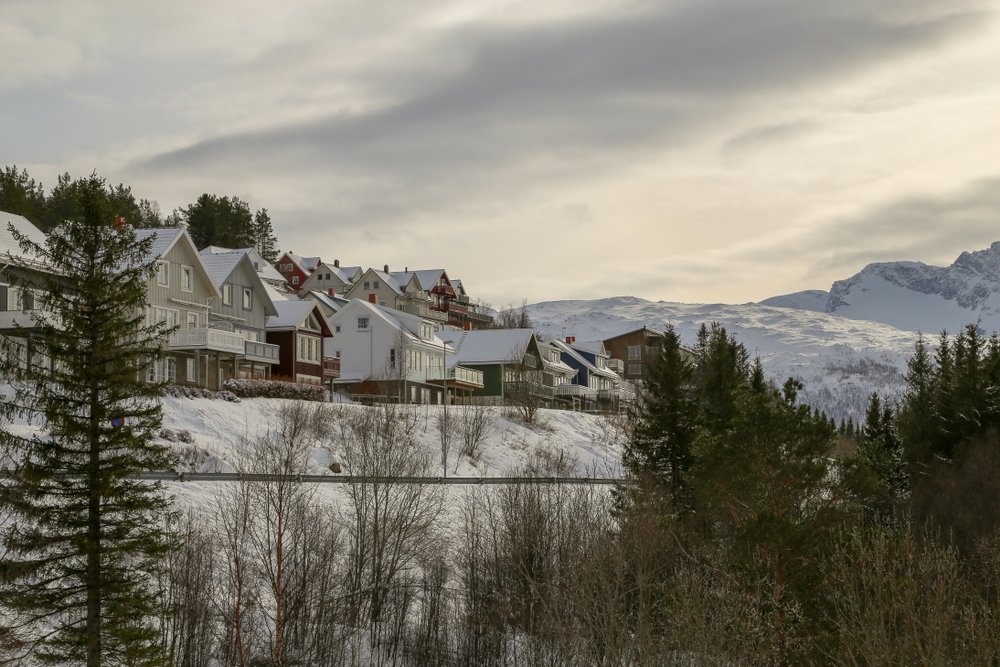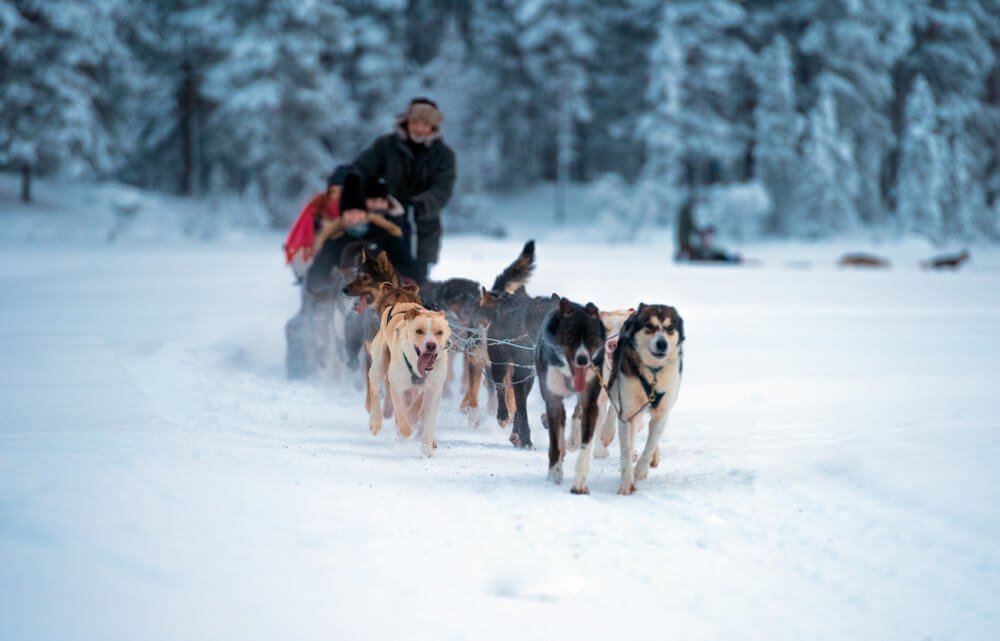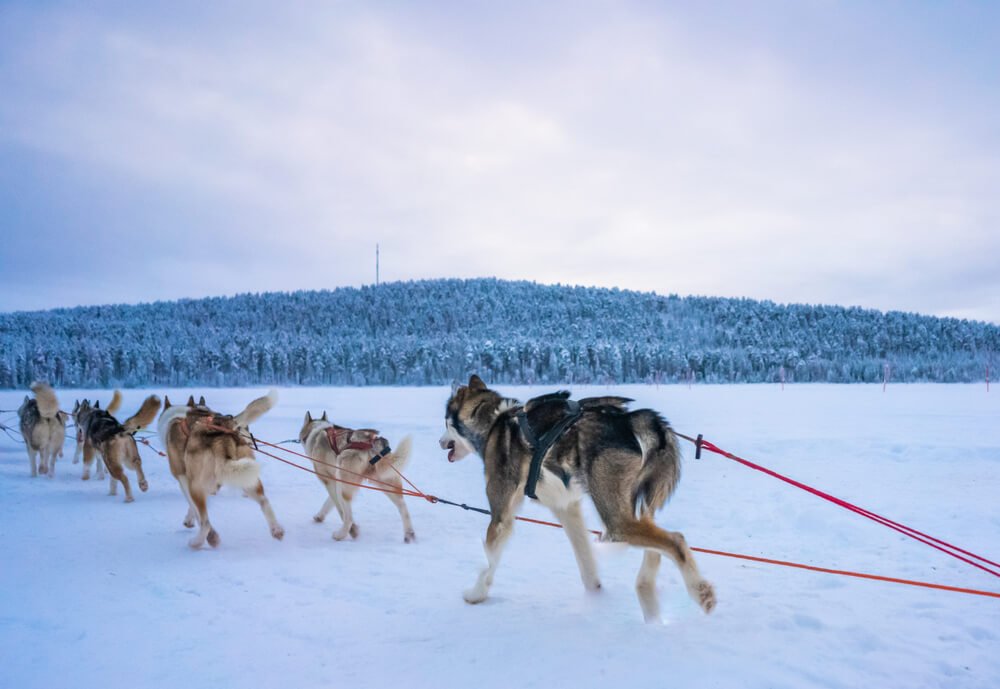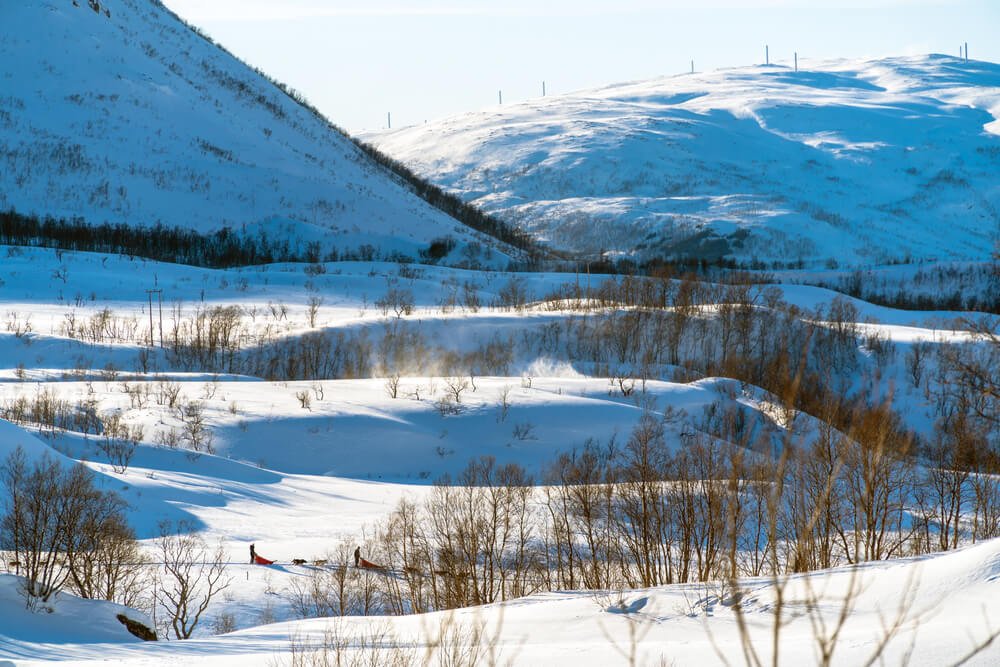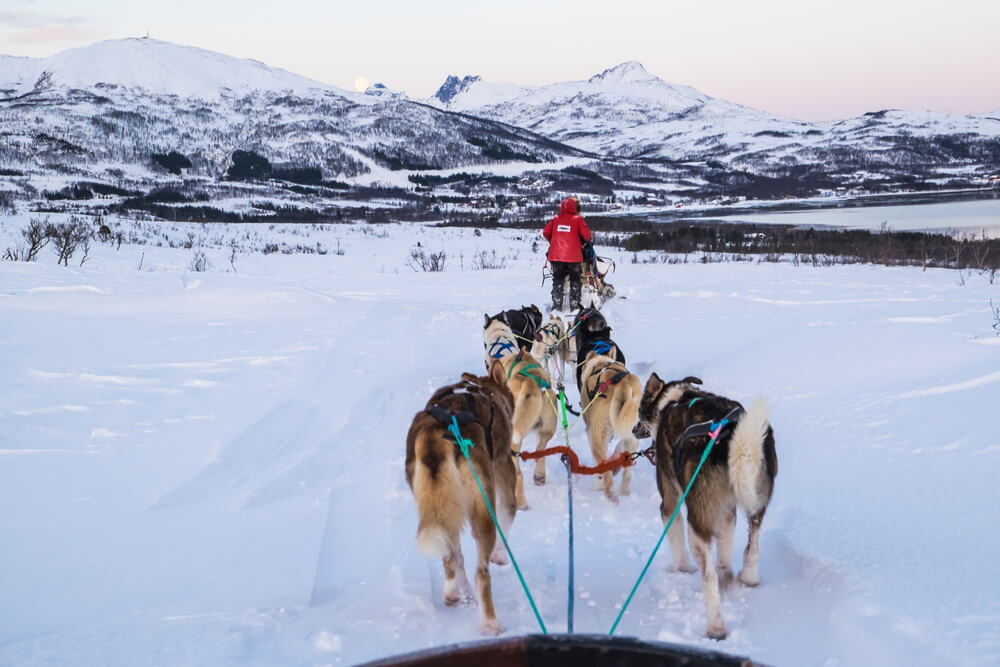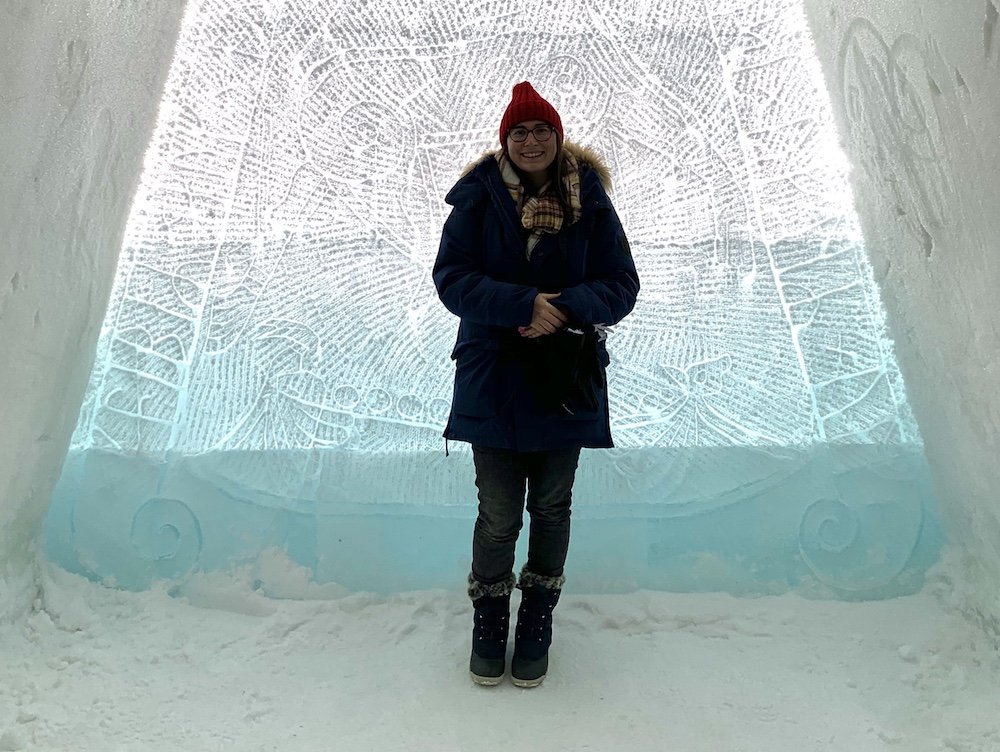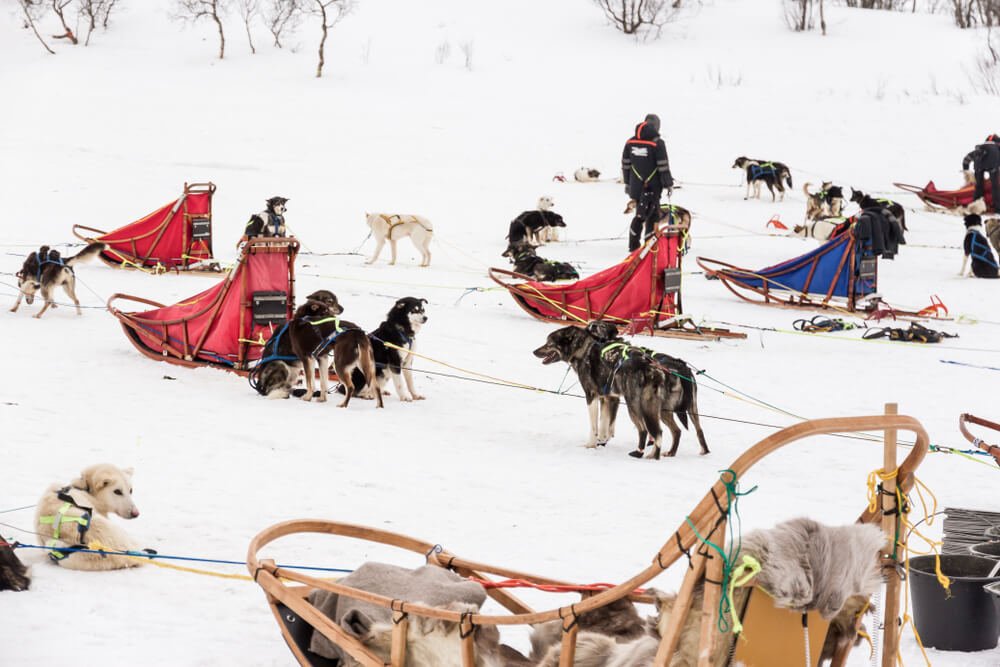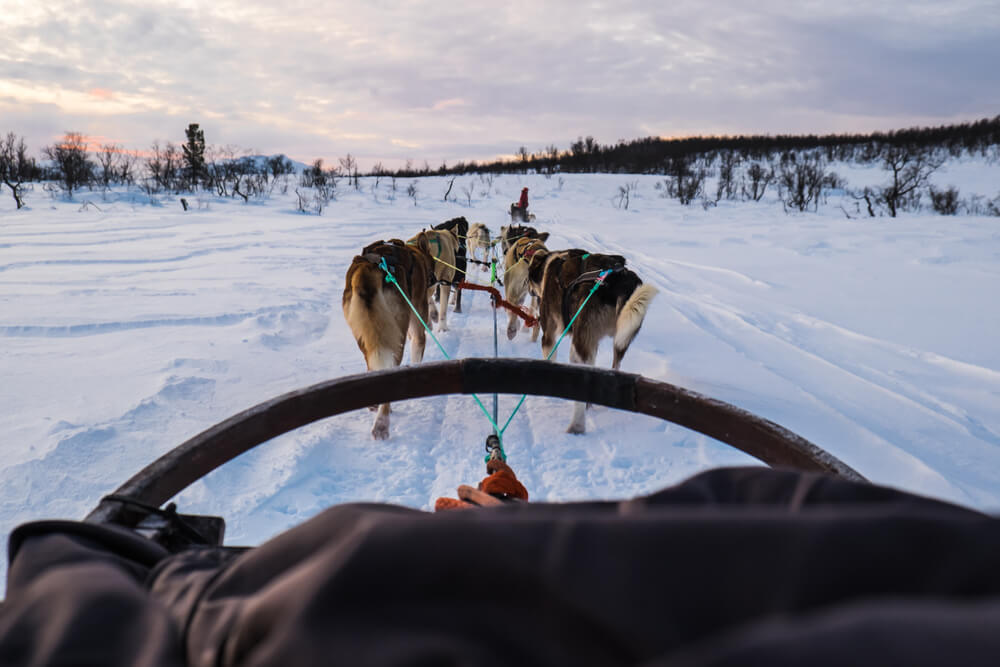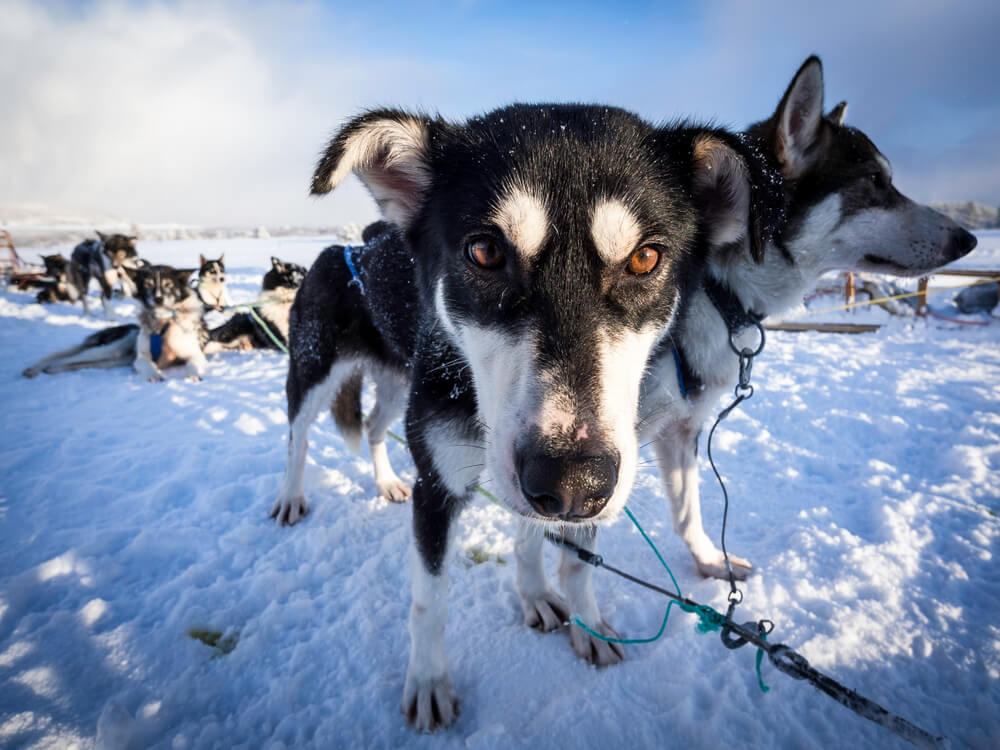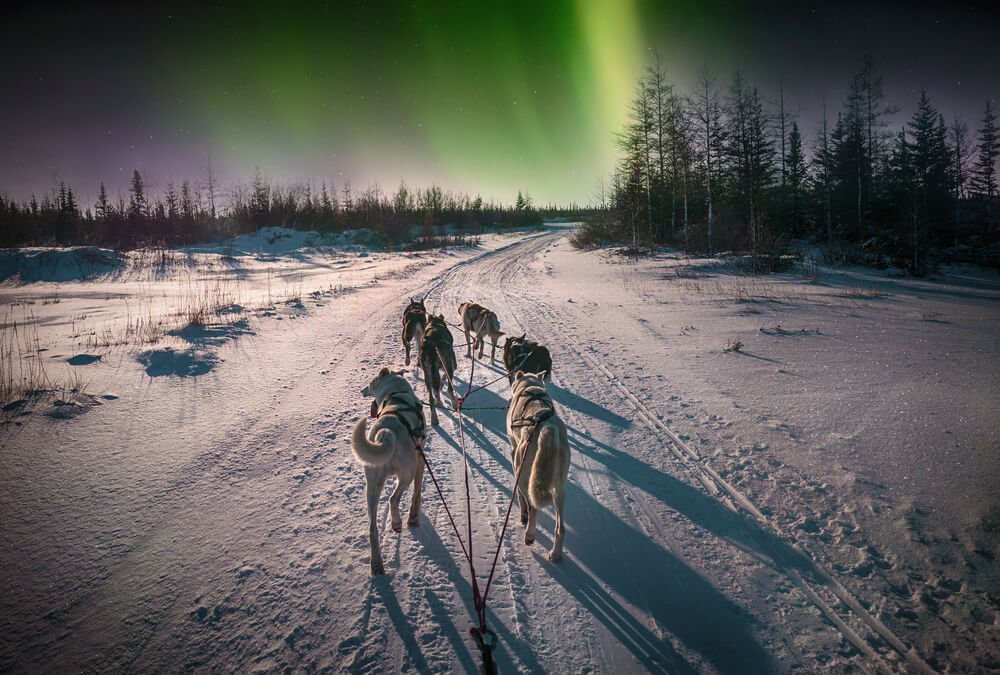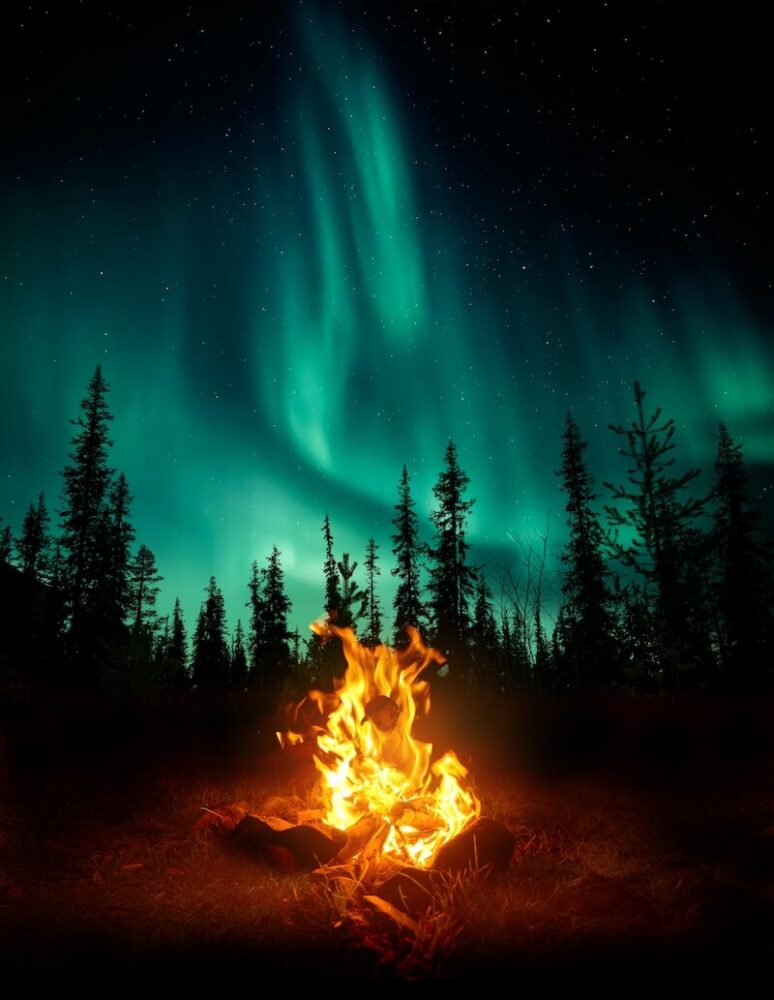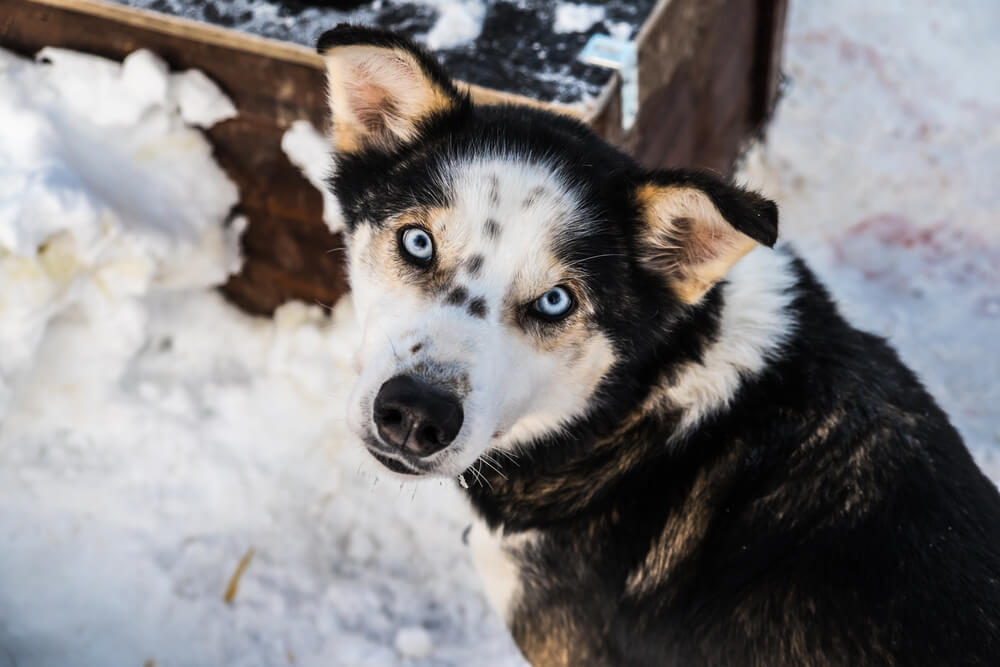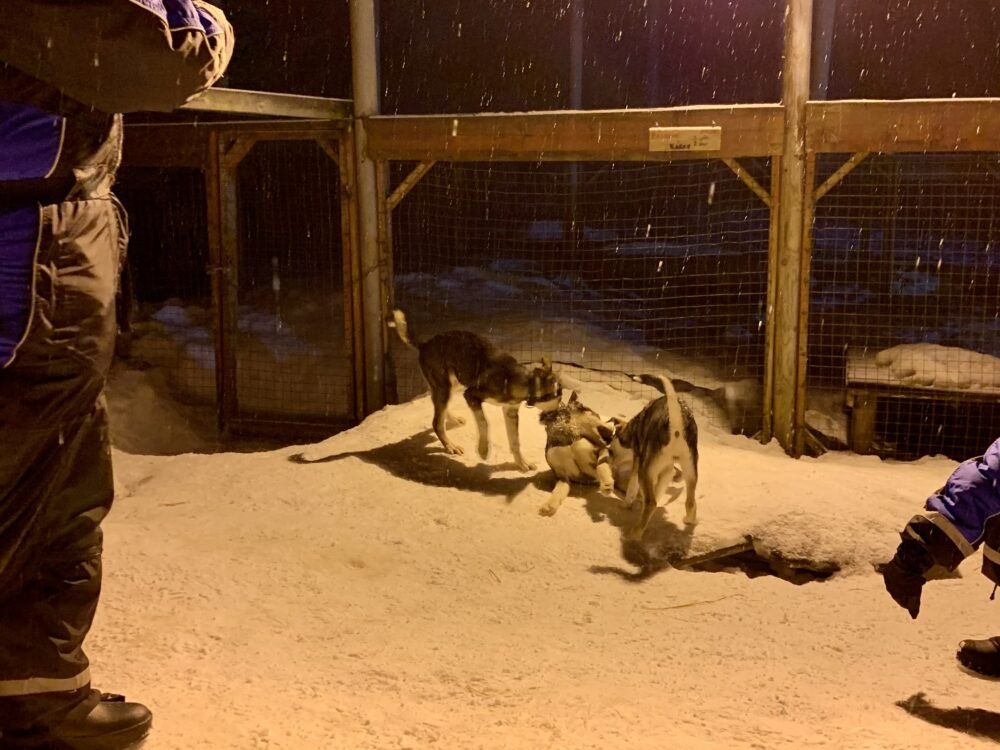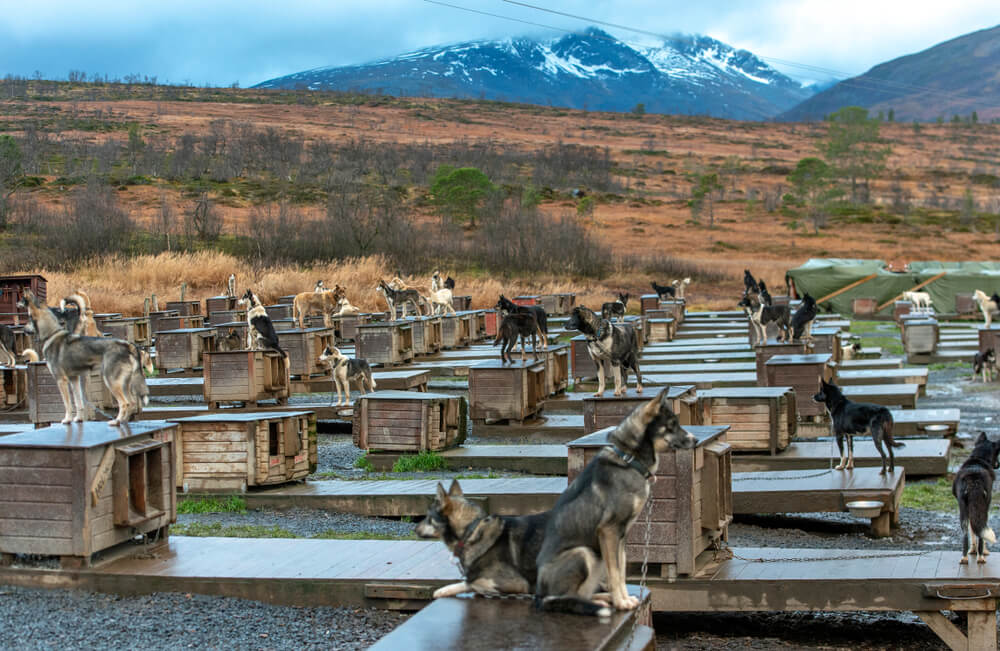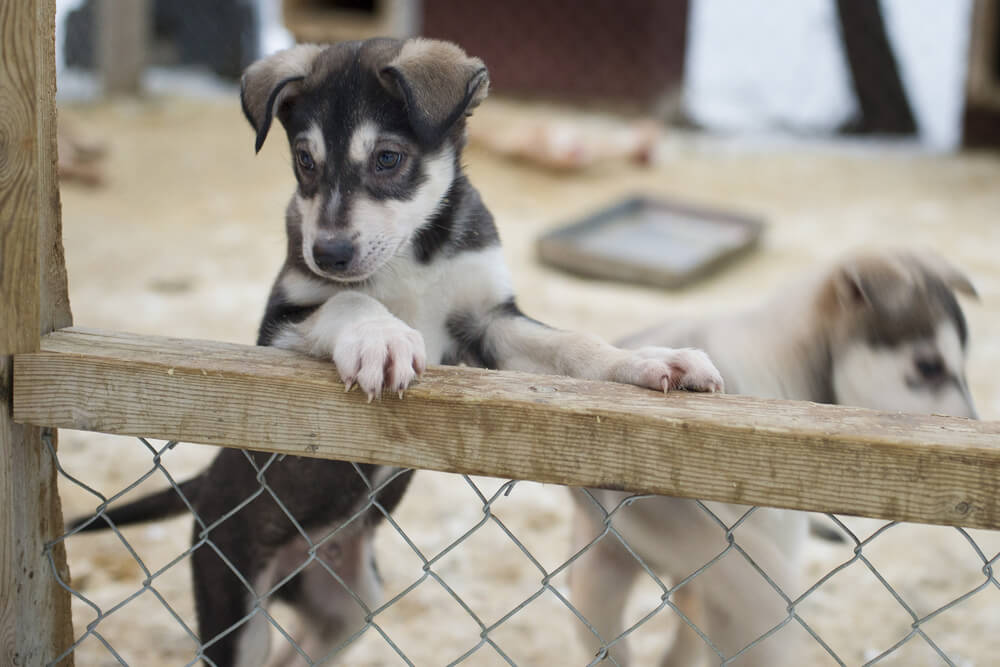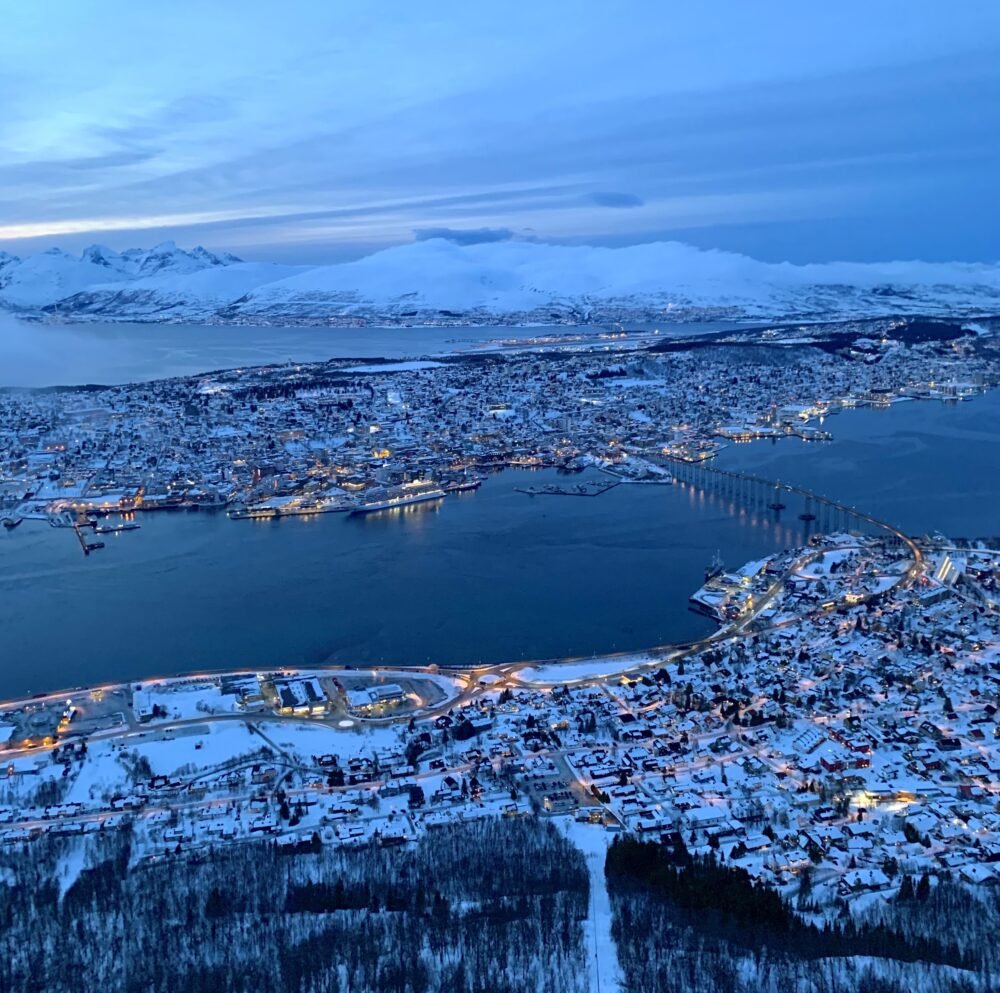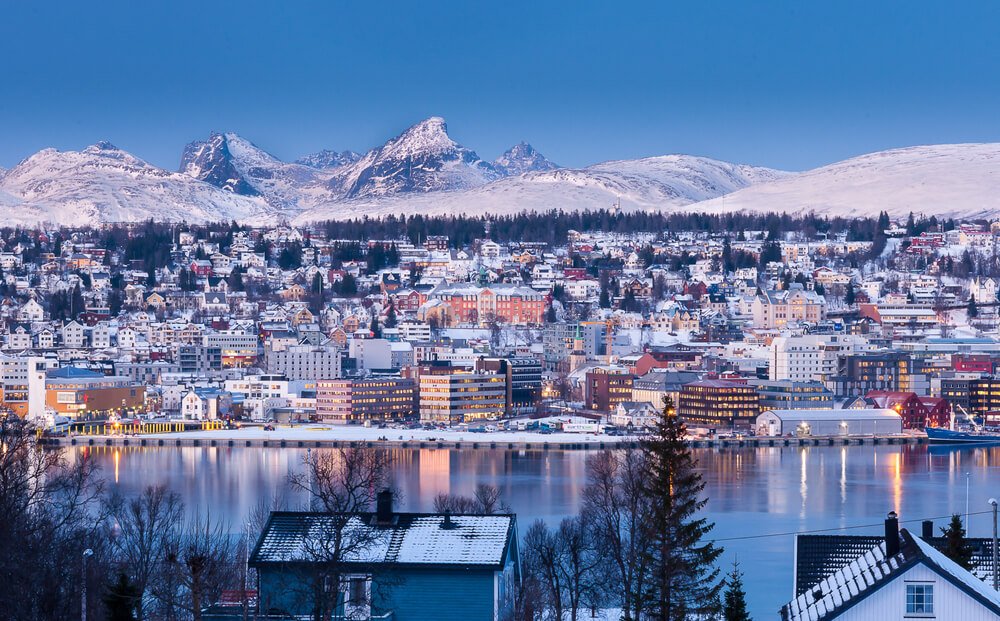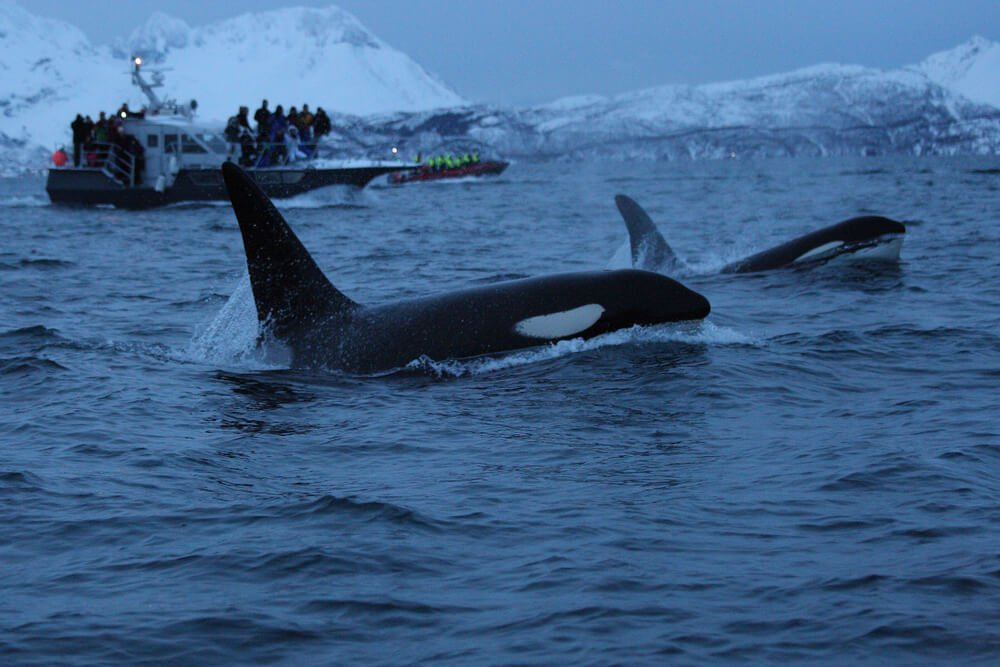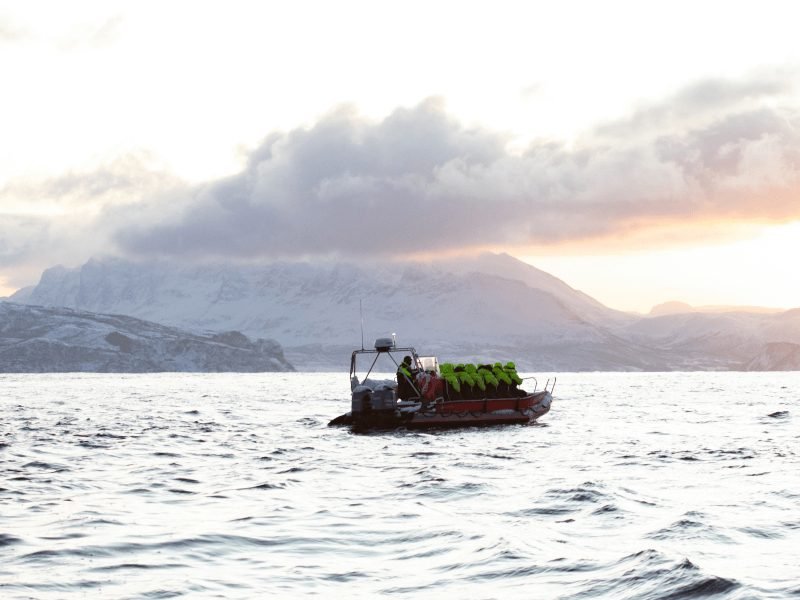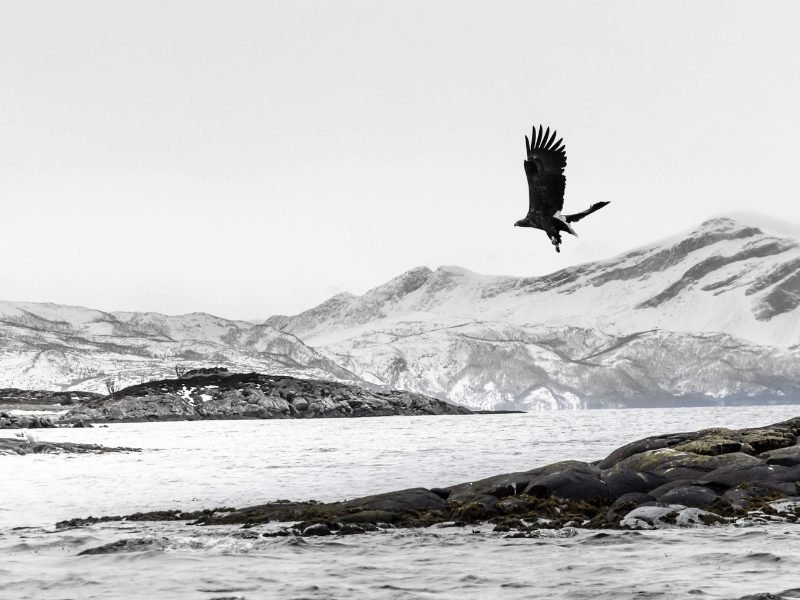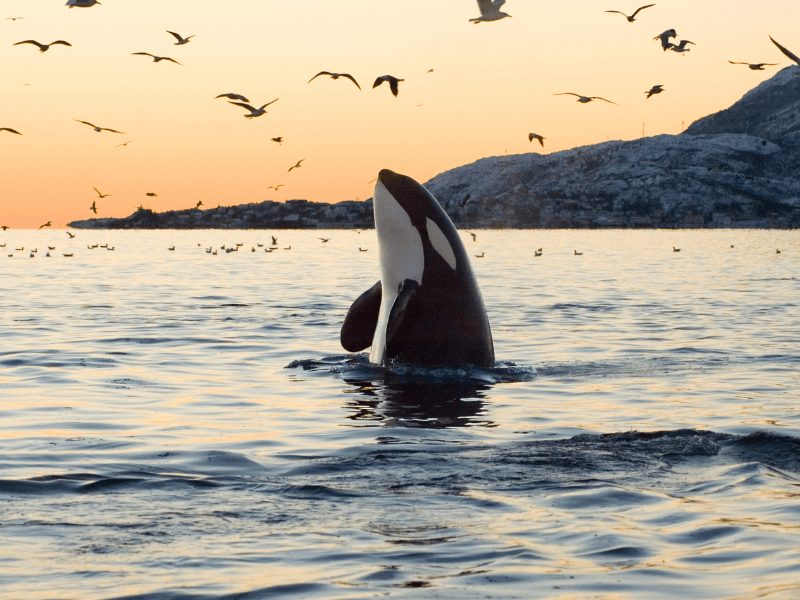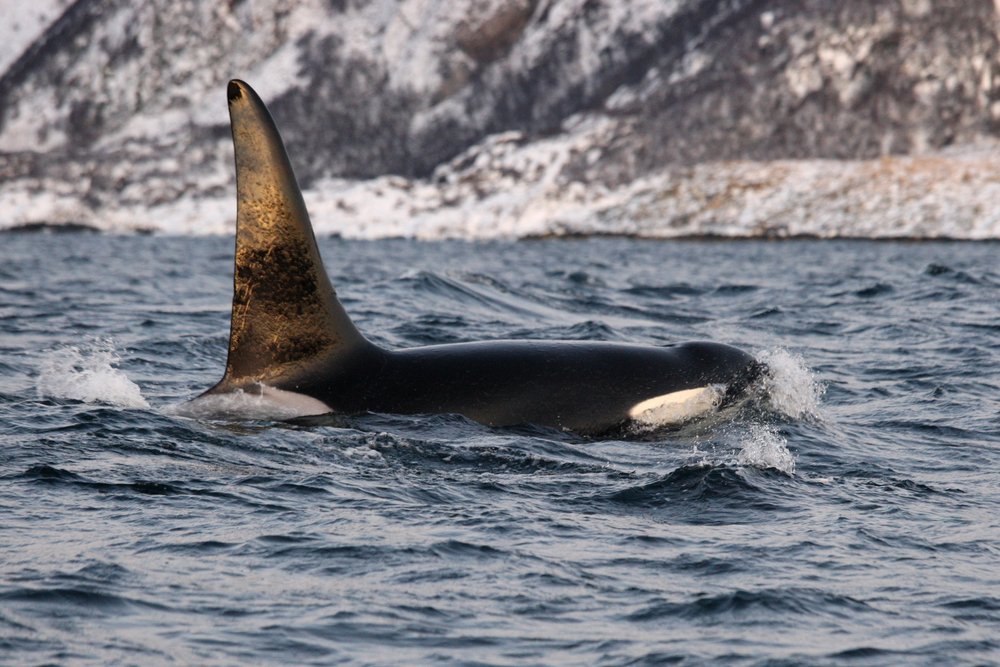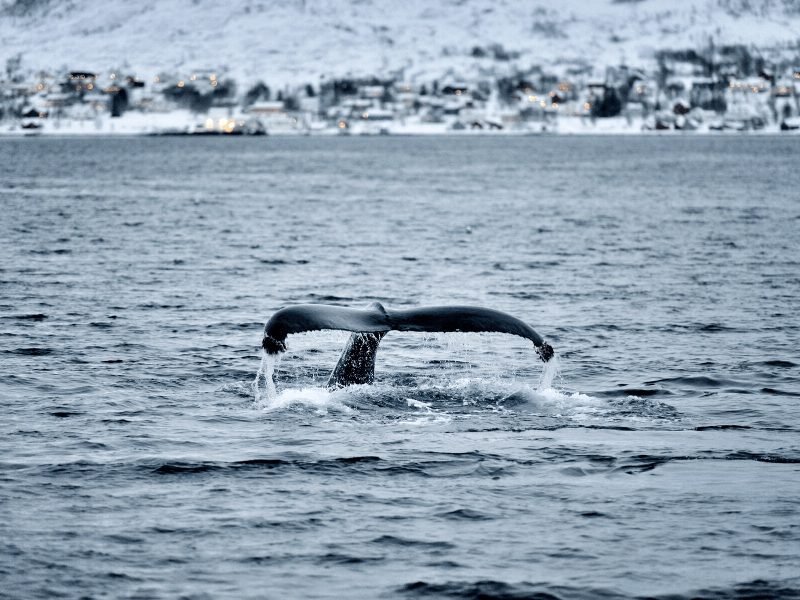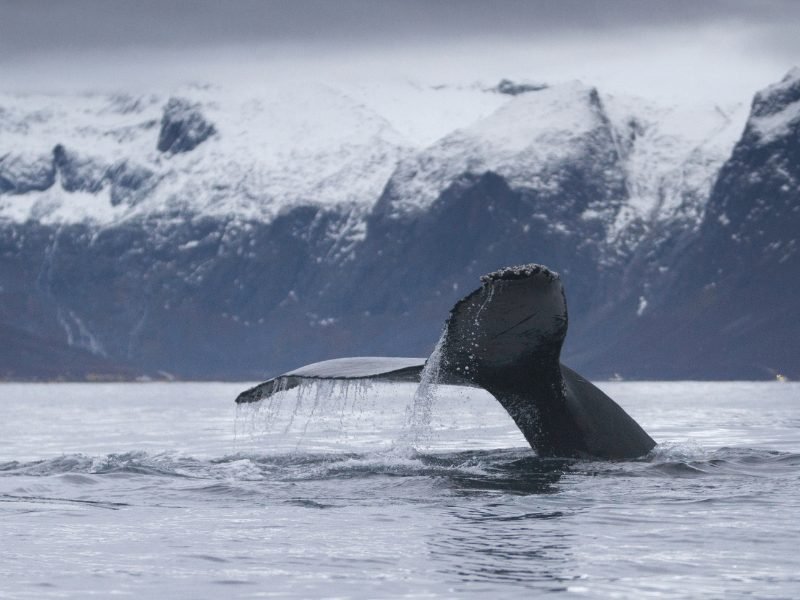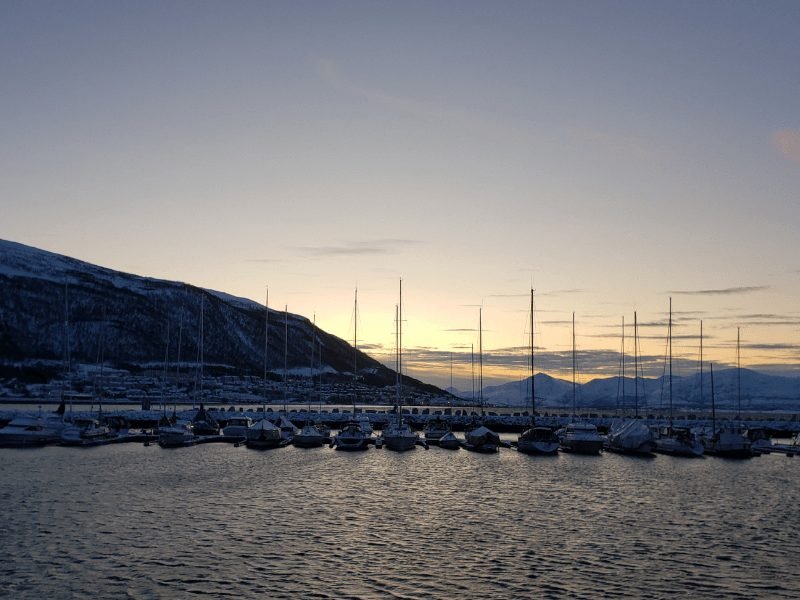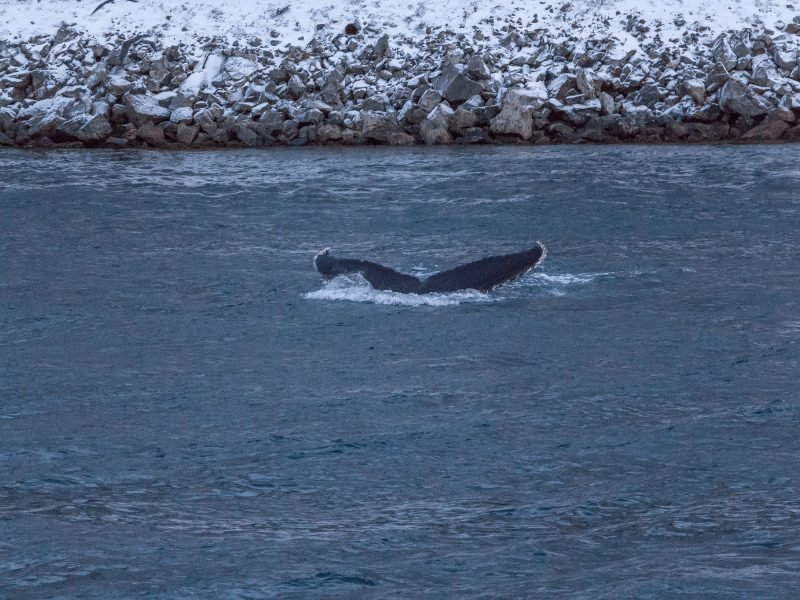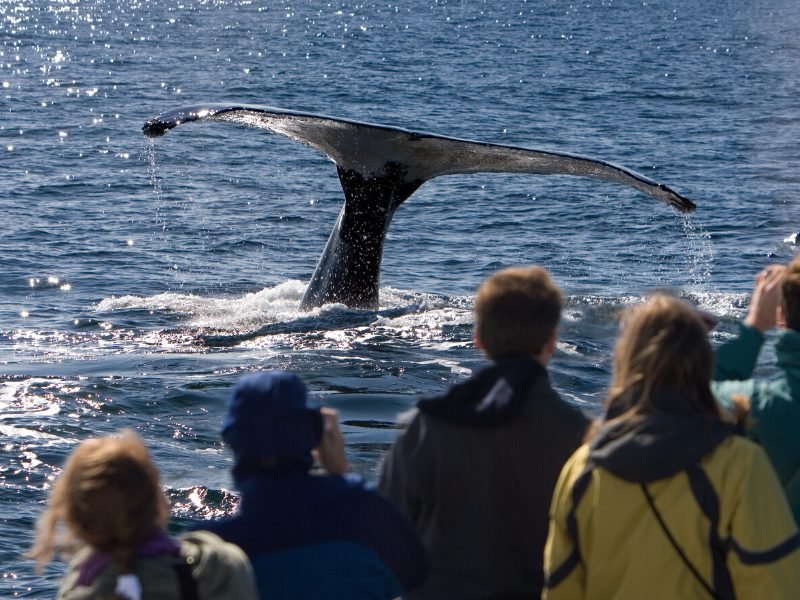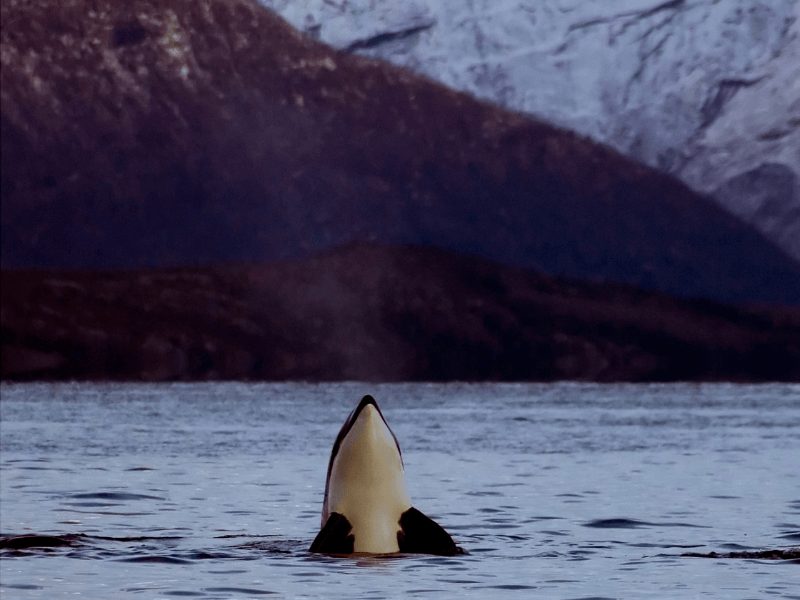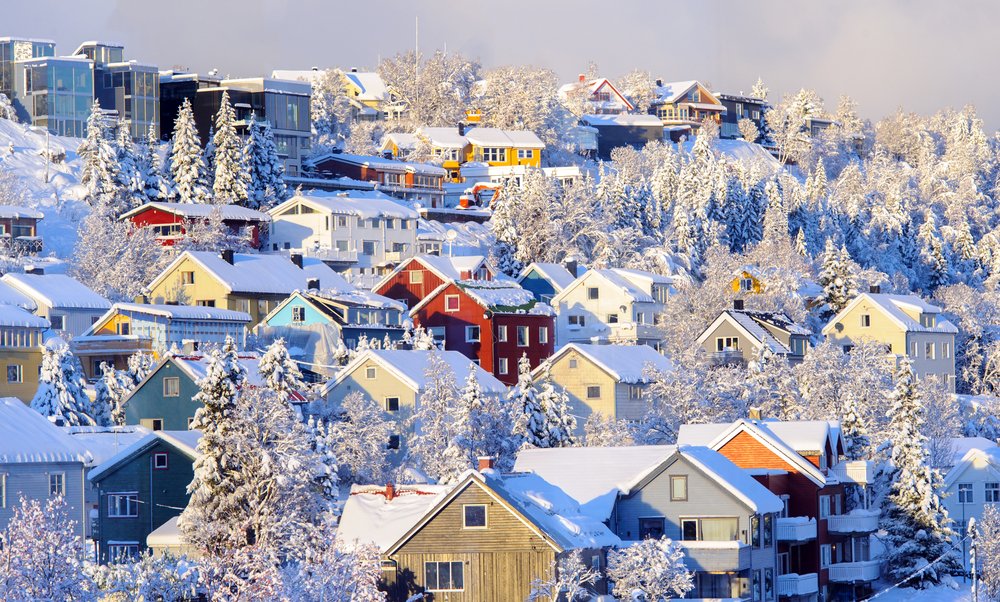Copenhagen is enchanting in every season I’ve visited, but I have to admit, there’s a unique magic to Copenhagen in winter.
And why wouldn’t it be?
After all, this is the homeland of hygge – that almost mystical word people say you can’t translate, capturing the essence of coziness and contentment especially in the cold months.
It’s no wonder then that every nook and cranny of Copenhagen exudes warmth and charm!
| ⌛ Planning your Copenhagen trip in a hurry? Here are my quick picks. ❄️ Best Copenhagen Tours & Experiences 1. Tivoli Gardens Entrance Ticket (+ option with unlimited rides) 2. Copenhagen Food Tour (small group tour or private tour) 3. Castles & Cathedrals Day Trip (Roskilde, Frederiksborg & Kronborg) 🛏️ Best Copenhagen Hotels 1. Motel One Copenhagen (funky 50s & 60s inspired design hotel) 2. Hotel Skt Petri (designer rooms & greenhouse-inspired luxury) 3. Steel House (value hostel in trendy Kødbyen) Arriving in Copenhagen by plane? Book a trusted, easy airport pickup with Welcome Pickups. Visiting a bunch of museums? Save money with a Copenhagen Card. |
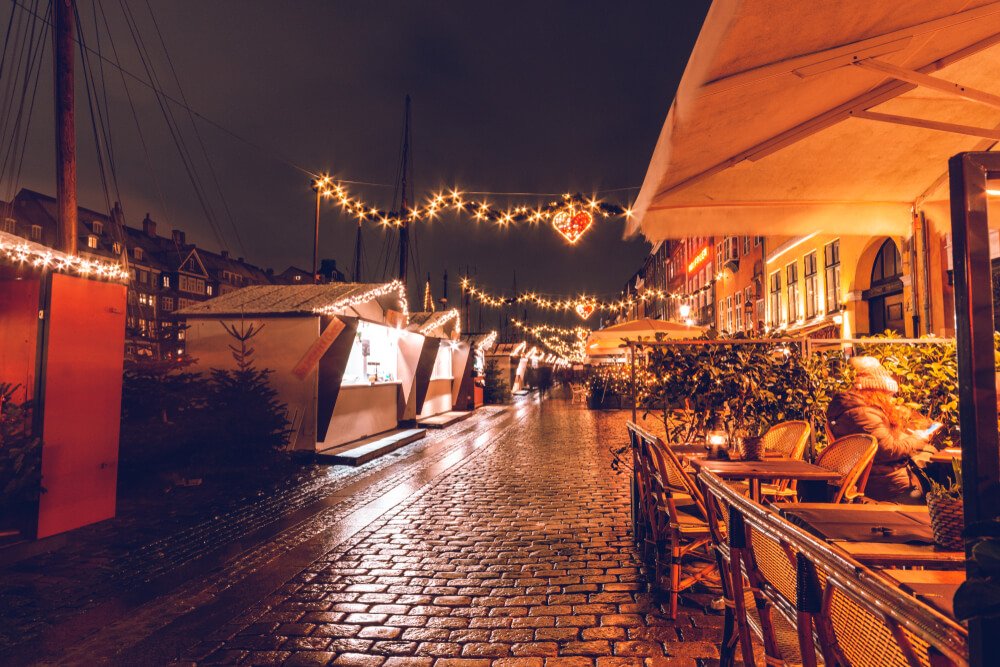
For me, visiting Copenhagen in December is as good as it gets, when the Christmas markets are at their full power.
However, a trip to Copenhagen in November also reveals the early whispers of its wintry charm!
This is the time when the city starts to don its festive feel, with lights sparkling on as the early-setting sun disappears and a cozy vibe settling in each night, heralding in the Christmas season.
By contrast, January and February in Copenhagen are both chillier and quieter, as the festive fervor subsides — but that doesn’t mean it’s worth worth visiting in those months, either.
No matter when you visit, the inviting cafés, the lively craft beer spots, the frosty canals, and the pastel-hued architecture promise to sprinkle some cheer on even the drabbest of winter days.
If you’re considering a winter trip to Copenhagen between November and March, here’s my bucket list!
And if you’re visiting other places in the Nordics this winter, like Tromso, Stockholm, Helsinki, or Rovaniemi, read my guides!
25 Best Things to Do in Copenhagen in Winter
Stroll around a cheery Tivoli Gardens
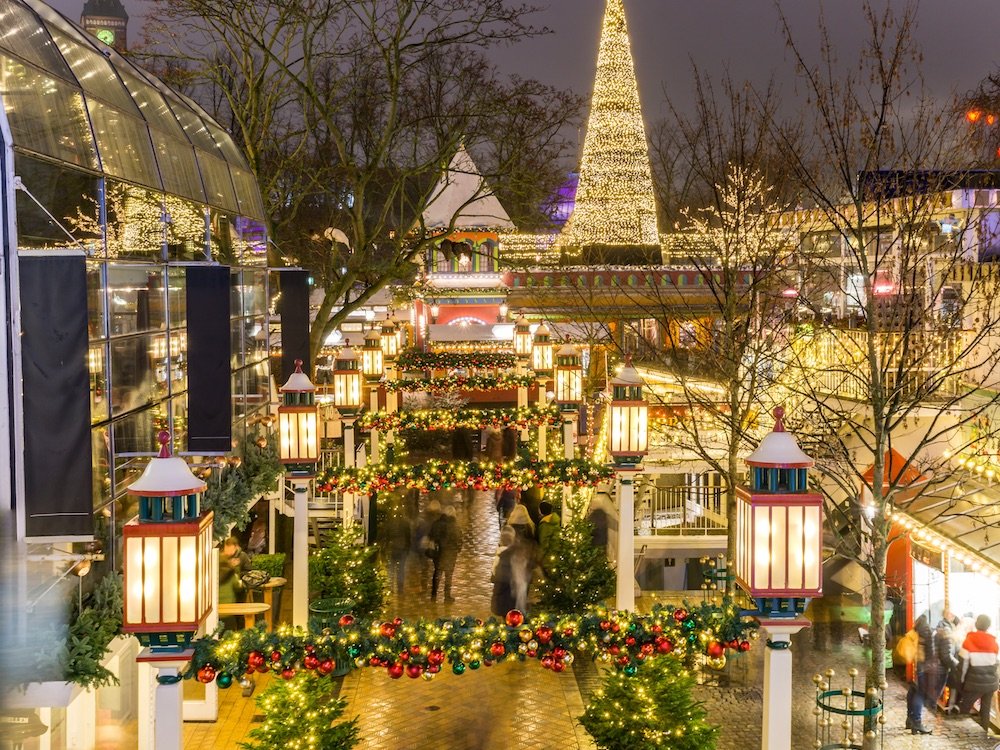
Tivoli Gardens is one of Copenhagen’s most beloved treasures, and it’s so much more than what you typically think of when you think of amusement parks!
Come winter, this iconic Copenhagen landmark transforms into a mesmerizing winter wonderland.
Alongside fun rides, brilliant lights, and adorable market stalls, it boasts an extensive array of dining options and exudes that festive feel in every direction.
While summer is its primary season, Tivoli also throws open its gates for special occasions like Halloween and Christmas.
Before these times, the park takes a brief hiatus to deck itself out in festive splendor.
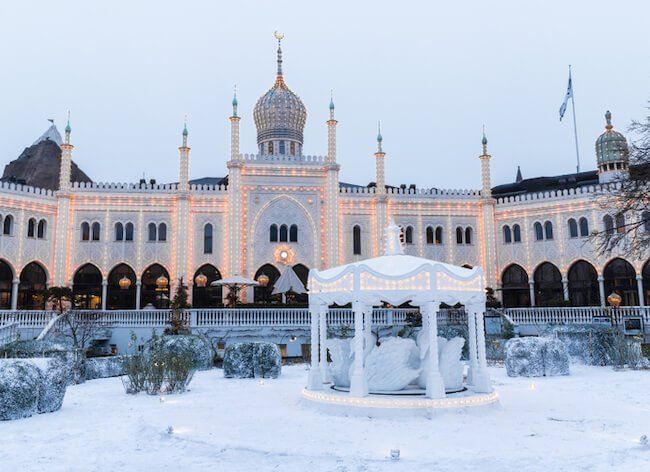
For 2023, Tivoli’s Christmas festivities are set from November 19th to December 31st, though it remains closed on Christmas Eve.
On weeknights, you can visit from 11 AM to 10 PM, and on Fridays and Saturdays, it stays open an extra hour until 11 PM.
Planning a December visit, the peak of Copenhagen’s winter season?
I suggest grabbing fast-track tickets ahead of time to ensure you have tickets and make the experience more seamless.
Simply purchase them online and present the digital copy on your smartphone upon arrival – bypassing both printing and any lengthy lines!
You can also purchase an unlimited rides plus entrance option, which can save you money if you plan to enjoy a lot of the rides.
But if you just want to absorb the ambiance, an entrance ticket will suit just fine.
Pro Tip: Admission to Tivoli Gardens is included if you buy a Copenhagen Card, so be sure to not accidentally buy both – pick one or the other!
Copenhagen Cards are valid in intervals of 24 hours from 1 day to 4 days, and include all public transportation, several dozen museums and attractions, and a canal cruise.
Depending on what you have planned, it can save you a bucket of money in otherwise-pricy Copenhagen, so check inclusions and prices here.
Eat your heart out on a delicious food tour
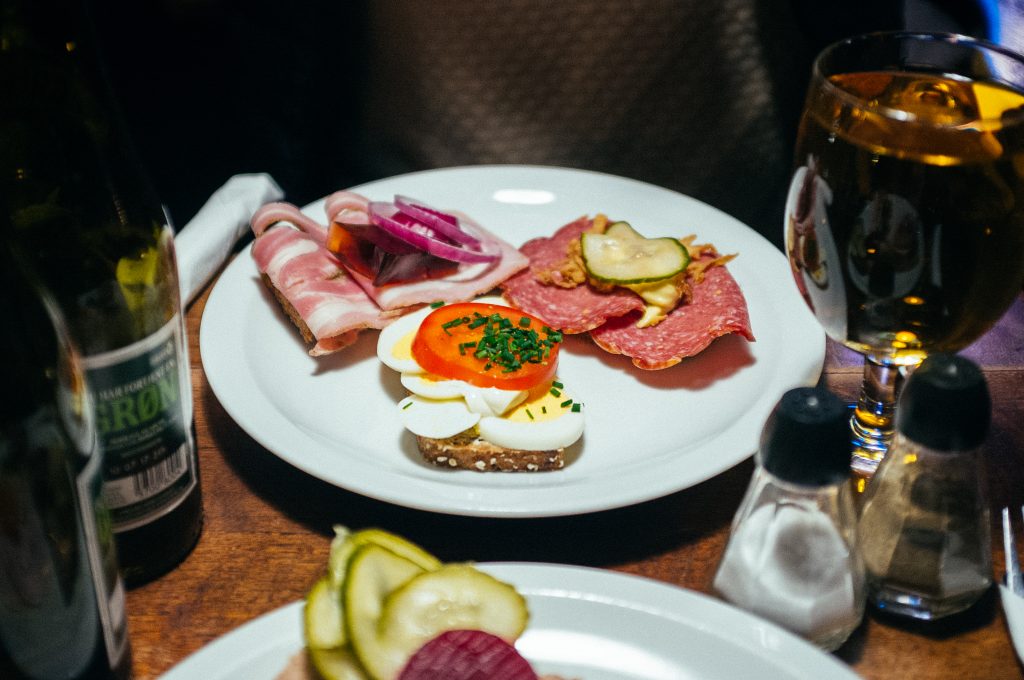
In recent years, Danish cuisine has garnered more acclaim, and there’s no better place to savor it than in Copenhagen, where it’s at its most creative, flavorful… and admittedly, pricey.
Opting for a food tour can make sampling a wide array of Danish dishes more affordable, plus it lets you taste the best of Denmark in a compact time frame.
I’m a staunch advocate for food tours; they’re a delightful blend of culture, knowledge, and gastronomy, guiding you to the city’s culinary gems.
In winter, these tours are the perfect way to walk with purpose from stop to stop, punctuated the cold walks with warm stops for delightful dishes and beer, before you step back into the chill.
And speaking of beer, Danish craft brews have lately been the talk of the town, and you’ll definitely be able to try them on a food tour!
I recommend this 4-hour food tour which includes beer tastings, traditional Danish organic hot dogs, smørrebrød, spread salads on rye, organic cheeses, and Danish sweets!
It’s affordably priced for how much you get to try — about the same price as two two-course meals out in Denmark — but you’ll get a cultural context and local tips at the same time as your meal.
If you don’t mind spending a bit more money, you can also book a private food tour like this one.
Get out of the city to explore some beautiful Danish castles
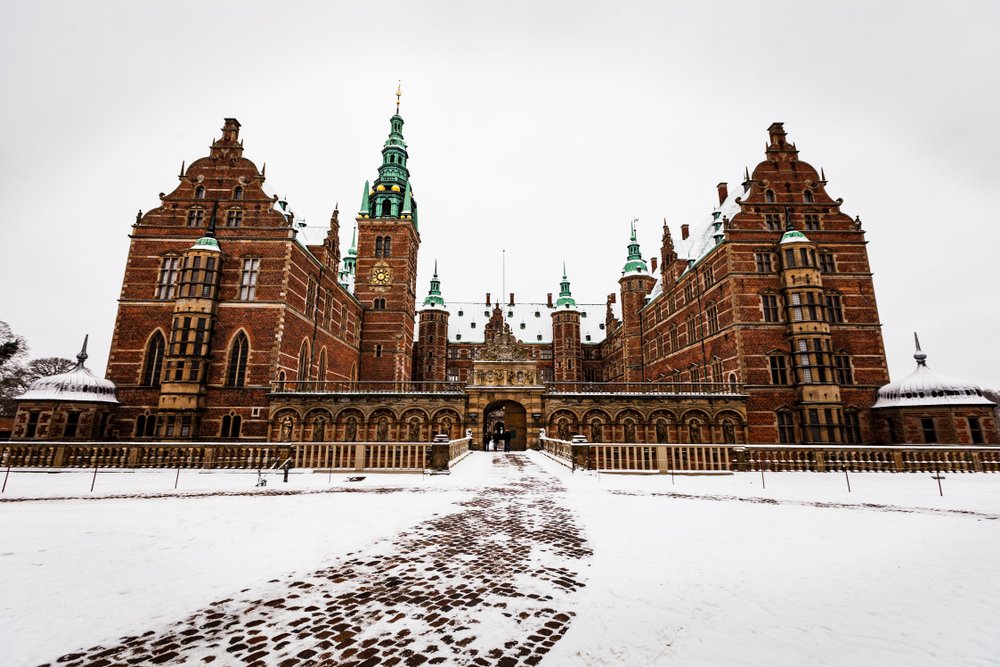
The annals of Denmark’s history teem with stories of Viking adventures, royal intrigues, and historic exploits — a true information feast for any history nerd.
The country’s historic castles and museums transport you back in time easily, and educate you along the way!
From Viking museums where you can see old reconstructed boats to romantic views from the castle walls, the Danish castles are awesome places.
A trio of notable sites – two castles and the renowned Roskilde Cathedral – lie in proximity to Copenhagen, making it a great day to spend a winter day out.
To visit all three, take a day trip to streamline your transport time.
If you’re opting for public transportation instead, I suggest that narrowing it down to one or two might be wise.
This eight-hour day trip offers a winter’s day well-spent, taking you through the corridors of Roskilde Cathedral, Frederiksborg Castle, Kronborg Castle, and the Viking Museum, with transportation included.
Tip: If visiting Copenhagen in December, book in advance, as that things in Copenhagen around Christmas tend to get really busy and they’re some of the most popular places to visit in Denmark in winter.
Enjoy the Copenhagen Christmas Markets.
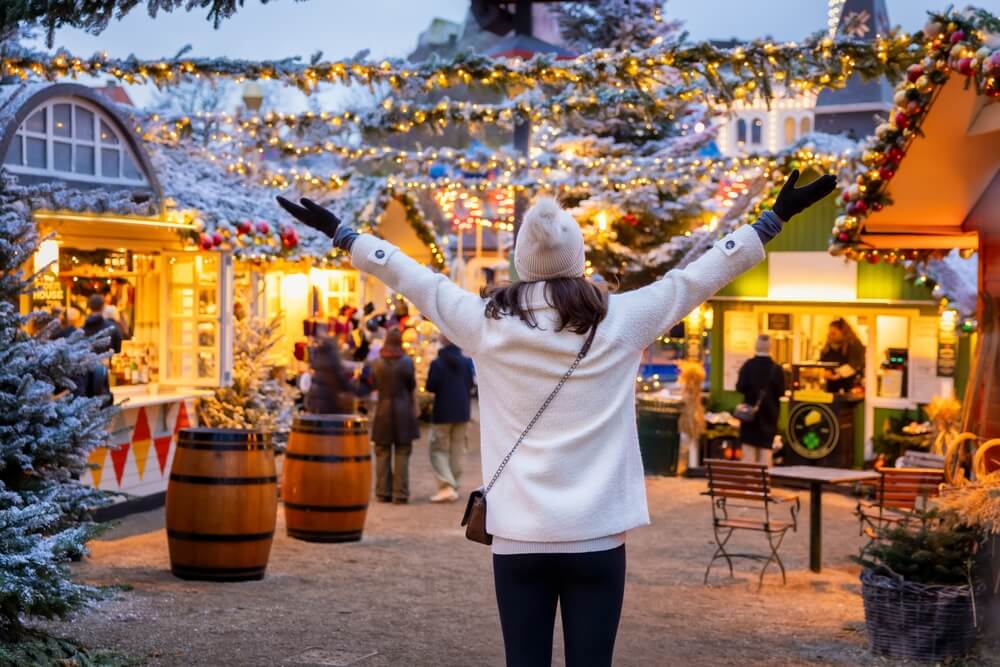
Tivoli Gardens isn’t the only place that gets in the Christmas spirit in Copenhagen!
Copenhagen’s markets are hygge embodied, radiating warmth, light, and festivity.
While there are a handful of markets spread across the city, there are a handful that stand out.
First on the list, the iconic Nyhavn Christmas Market.
Imagine the picturesque harbor of Nyhavn, already famous for its rainbow-colored townhouses and historic ships, now adorned with festive lights and stalls brimming with holiday treasures.
With the water reflecting the golden glow of the fairy lights, the atmosphere here is pure magic!
Stroll along the harbor, clutching a warm cup of gløgg (Danish mulled wine) as you peruse stalls selling handcrafted gifts, Scandinavian decorations, and mouth-watering Nordic treats like roasted almonds.
A stone’s throw away, in the heart of the city, the Højbro Plads Christmas Market is an elegant choice.

Surrounded by the historic architecture of central Copenhagen, this market is a blend of the traditional and the contemporary.
Chic wooden stalls offer everything from gourmet chocolates and artisanal crafts to unique Danish designs.
Finally, for a dash of historical enchantment, the Christmas Market at Kronborg Castle in Helsingør is a must-visit.
Just a short train ride from Copenhagen, this market lets you step back in time to the regal castle that inspired Shakespeare’s Hamlet!
Picture this: a Renaissance castle, aglow with lights, surrounded by market stalls that seem straight out of a fairy tale.
Explore Copenhagen by night on a lively pub crawl
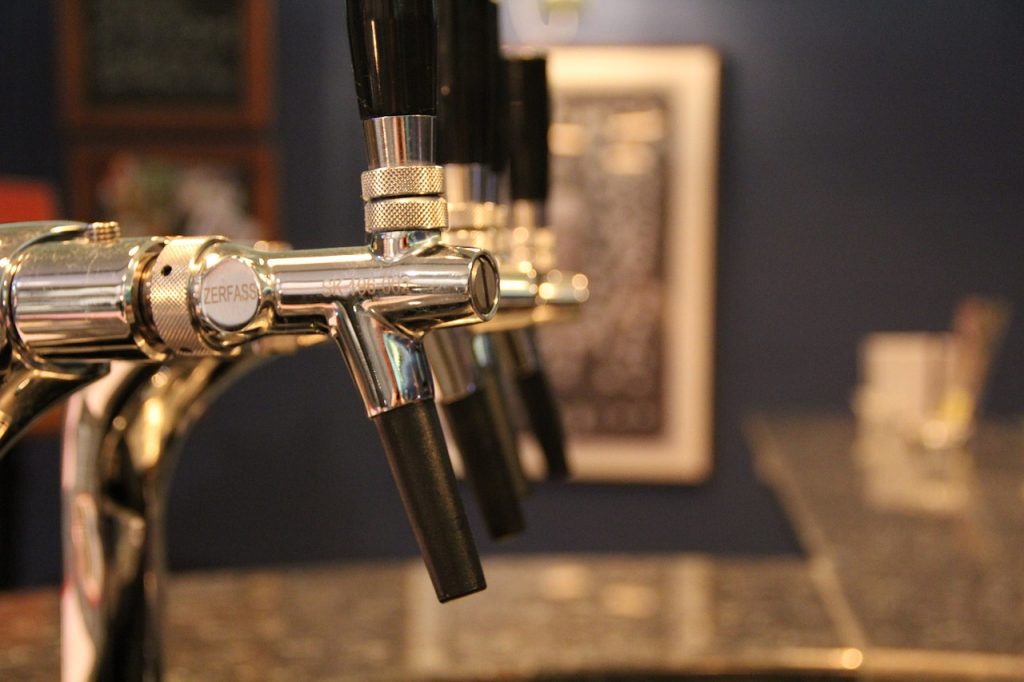
When the sun sets, Copenhagen just gets even livelier!
The city’s nightlife, renowned among the region, is best experienced through a classic pub crawl — unless you have a friend who can take you to all their favorite spots, it’s the next-best thing.
Taking a pub crawl presents a prime chance to mingle, dance, and sample Copenhagen’s nightlife scene to the fullest, led by a local.
For those unfamiliar with the city’s nightlife scene, I suggest a wallet-friendly pub crawl.
With 5 drinks included, each priced below $10, it’s a budget-savvy way to spend an electric night out in Copenhagen!
Go on a bike tour.
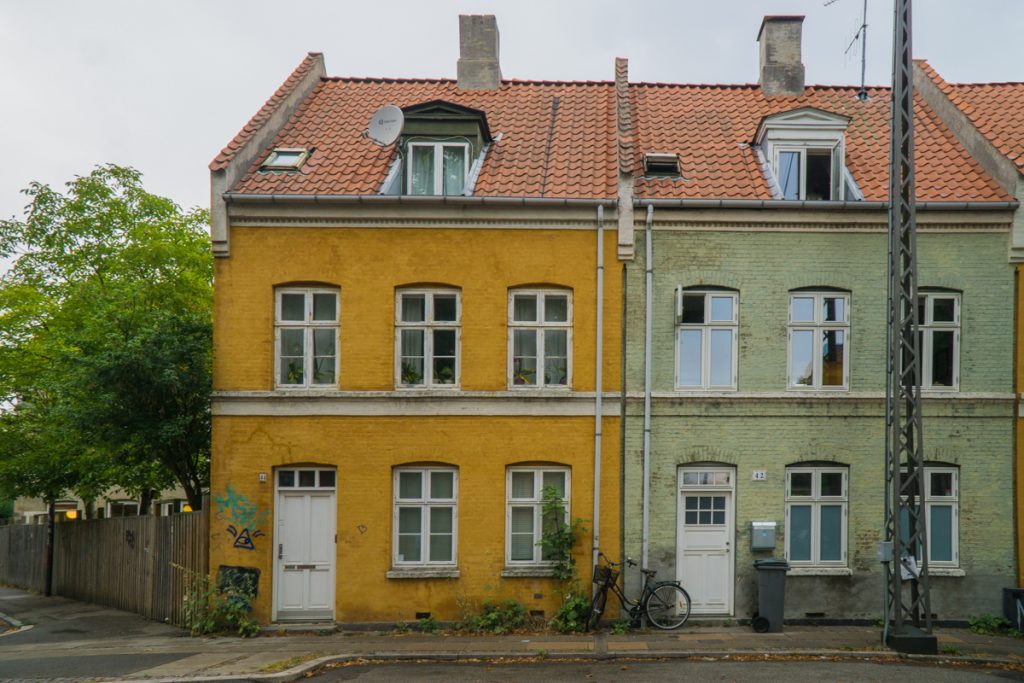
Danes don’t stop riding their beloved bicycles just because of a little snow!
So long as the ground isn’t too icy, cycling is one of the prime ways to explore Copenhagen—just remember to bundle up!
As is widely known, Denmark ranks among the top of the list of bike-friendly nations, making cycling tours a splendid way to spend a day in Copenhagen.
Either rent bikes from the city’s sharing system (details here) or opt for an organized tour where a seasoned local will share with you the history of the city.
On this fun three-hour bike tour, you’ll witness Copenhagen’s main sights on an easy, slow-paced bike tour.
If that’s not the tour you’re interested in, don’t worry — there are 11 more options here in this post all about Copenhagen bike tours!
Eat your way through Torvehallerne

Torvehallerne, nestled at the city’s heart, is a colossal food haven offering a true smorgasbord (pardon the pun!) of choices.
Its indoor setting provides refuge from Copenhagen’s sometimes biting winter, the perfect setting to indulge in some of the city’s culinary finests!
In Copenhagen in winter, the food hall brims with life, with an array of stalls dedicated to locally-crafted Danish products and international foods.
It’s the ideal place to have a unique cup of coffee, or to indulge in some delicious pastries, as well as go shopping for fresh ingredients if you’re doing self-catering some nights to cut back on food expenses.
My top recommendations for unique places in Torvehallerne are the Mikkeller bottle shop for creative Danish beer and Ma Poule for coffee!
For food, check out Ma Poule‘s duck confit sandwich (drool), Lêlê Street Kitchen for Vietnamese banh mi, or Hallernes Smørrebrød if you prefer to eat the local food!
Snap photos of the colorful Nyhavn neighborhood.

The former residence of the fabled Hans Christian Andersen, Nyhavn now stands as one of Copenhagen’s most picturesque locales with cute buildings in a kaleidoscope of primary colors.
Once a port town, it has evolved into an area dotted with charming revamped houses and gourmet eateries.
Come winter, the spirit of the holidays is palpable, with streets lined with festive stalls as Copenhagen Christmas markets take the spotlight.
It’s also a hub for canal tours, like the one below!
Go on a delightful canal tour.
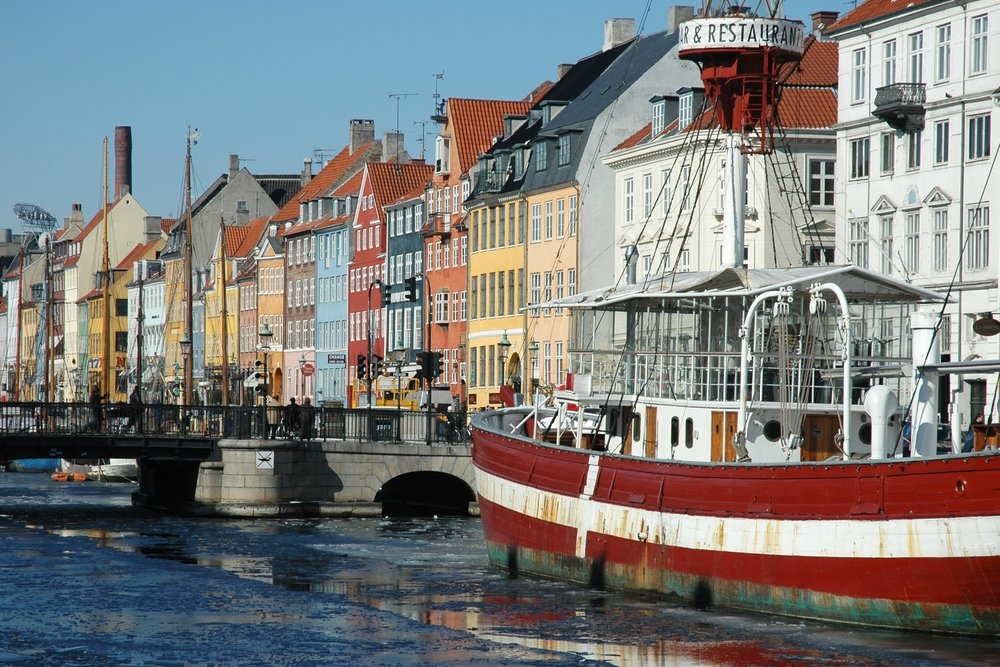
As long as the canals don’t completely freeze over (which is relatively rare, especially given the current warming climate), exploring the city by boat in the canals is a delightful winter Copenhagen experience.
If you’re visiting in the months leading up to the New Year, a canal cruise is almost a given.
Later winter months may see the waters freeze over, but it’s not certain — don’t lose hope!
These boats come equipped with glass-encased, climate-controlled interiors, ensuring warmth as you sail past iconic landmarks like the Opera House, Christiansborg Palace, and the Black Diamond Library.
Tours predominantly embark from Nyhavn or Gammel Strand and typically last an hour.
You can pre-book your ticket here and show a mobile ticket so you don’t have to wait in line in the cold!
Take in the view from the Rundetaarn.

The Rundetaarn (Round Tower) is actually Europe’s oldest operational observatory!
Commissioned by King Christian IV, it once positioned Denmark at the forefront of astronomy back in the 17th century.
While it has no major scientific purpose today, it’s still frequented by amateur astronomers (but mostly tourists, Instagrammers, and selfie-lovers).
To get to the top you’ll need to pass long spiral staircases, but you’ll be rewarded by some of the best sweeping views of Copenhagen.
Tip: If you get a Copenhagen Card, admission is free.
Visit the incredible National Gallery of Denmark.

What says winter more than strolling through museums?
One you shouldn’t miss is the National Gallery of Denmark.
Home to Denmark’s finest art collections, here you can find excellent exhibitions, tours, and stunning architecture.
Here you can enjoy many of the grandmasters of art, both Danish and international, as the gallery is home to an incredible amount of diversity in the displayed works.
Artists like Rubens, Matisse, and Mantegna are some of the many whose work you’ll encounter.
There is a significant amount of contemporary artists on display too!
Explore Copenhagen’s contemporary art museums.
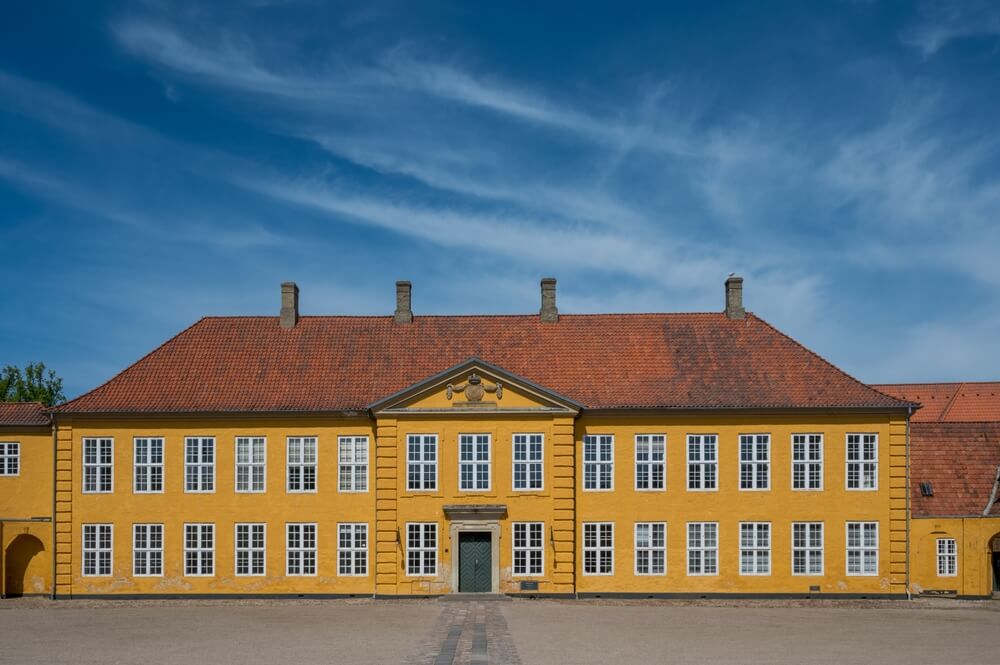
There are other museums in Denmark which are certainly worth visiting, depending on what you’re a fan of!
Into modern art? Stop by the Arken Museum.
Another great choice is the Dan Frie Center of Contemporary Art.
A little further afield in Roskilde is the charming Museum of Contemporary Art.
Explore Denmark’s design scene.

All about Scandinavian chic design?
Learn more at the interior decor and Danish decorative arts at the Designmuseum Danmark.
The Designmuseum is open from Tuesdays to Sundays from 10 AM to 6 PM, with Thursdays enjoying extended hours til 8 PM.
Entrance is 130 DKK for adults ($18.50 USD) and free for kids under 17.
Between the ages of 18 and 26, or a current student?
You can enjoy a decreased admission cost of 90 DKK ($13 USD) for youth tickets with a valid ID.
Money-Saving Tip: If you plan a visit a few museums, definitely pick up a Copenhagen Card – the savings add up fast, especially when you factor in that the card also includes transportation and discounts to restaurants and other attractions.
Learn Danish history at the National Museum of Denmark.

You’ve noticed a theme here… Denmark is expensive.
Well, how does a free museum sound? Even better, how about the largest museum in the country being free?
The National Museum of Denmark is set in the stunning former Prince’s Mansion, a dazzling piece of rococo architecture dating back to the 18th century.
Originally built for Crown Prince Frederik V and his family, the mansion has played many roles: from a regal residence to a naval repository, and now, a mainstay of Danish history.
Step inside, and you’re immediately whisked away on a thrilling journey through time.
From Stone Age and Bronze Age artifacts from prehistoric Denmark to all sorts of Middle Age artifacts like medieval weaponry to its large ethnographic collection reflecting a collection from around the world, there’s so much to see!
Plus, there’s also a Children’s Museum, which is great if you’re visiting Copenhagen in winter with kids!
Enjoy a night out at the Copenhagen Opera House.
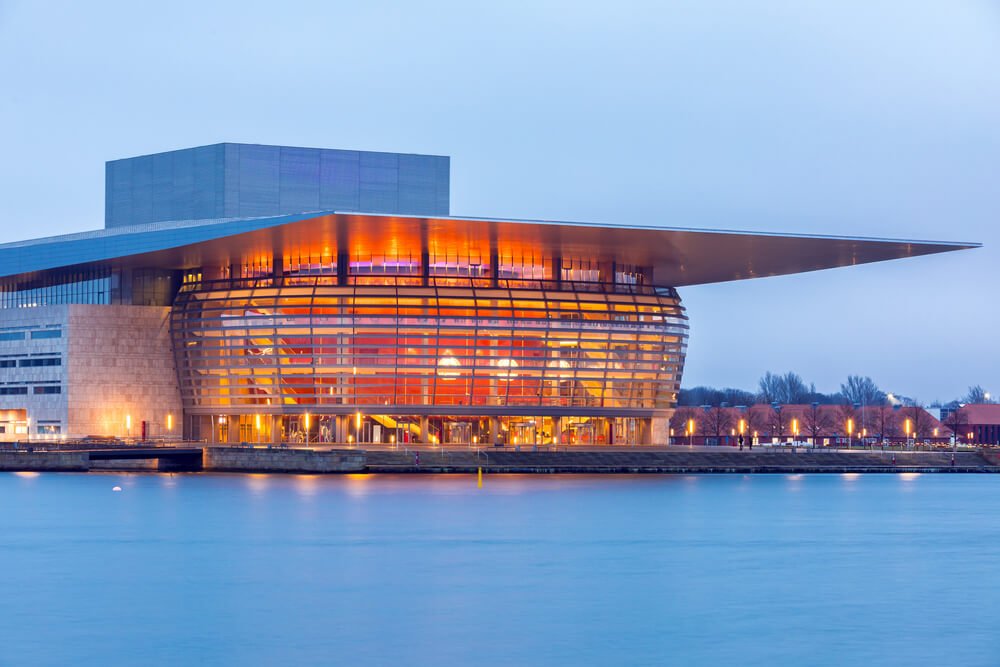
Amidst the architectural landscape of the city, the Copenhagen Opera House stands out as a wonderful interplay of modernity and elegance, sitting on the city’s waterfront, glittering in the water at night.
The building is exquisite, designed by the renowned Danish architect, Henning Larsen and finalized in 2005, cementing its place as a contemporary marvel of Danish architecture and its forward-looking gaze.
But its modern exterior belies its intriguingly opulent, old-world interior.
Think gold leaf and intricate woodwork and traditional plush red seating, exemplary of Italian opera houses like you’d find in Florence and Venice from centuries past.
While it’s called the opera house, you’ll also find ballets and concerts here: you can check the Opera House schedule online here.
There are all sorts of events, but the classic Christmas tale, the Nutcracker, is one of the biggest draws in December.
Tickets range from 225 DKK to 835 DKK ($32 USD to $119) which is pretty reasonable for a lovely night out on at the opera!
They also have several events per night, so definitely check their schedule and see what appeals to you most.
Spend a day at Copenhagen’s aquarium.
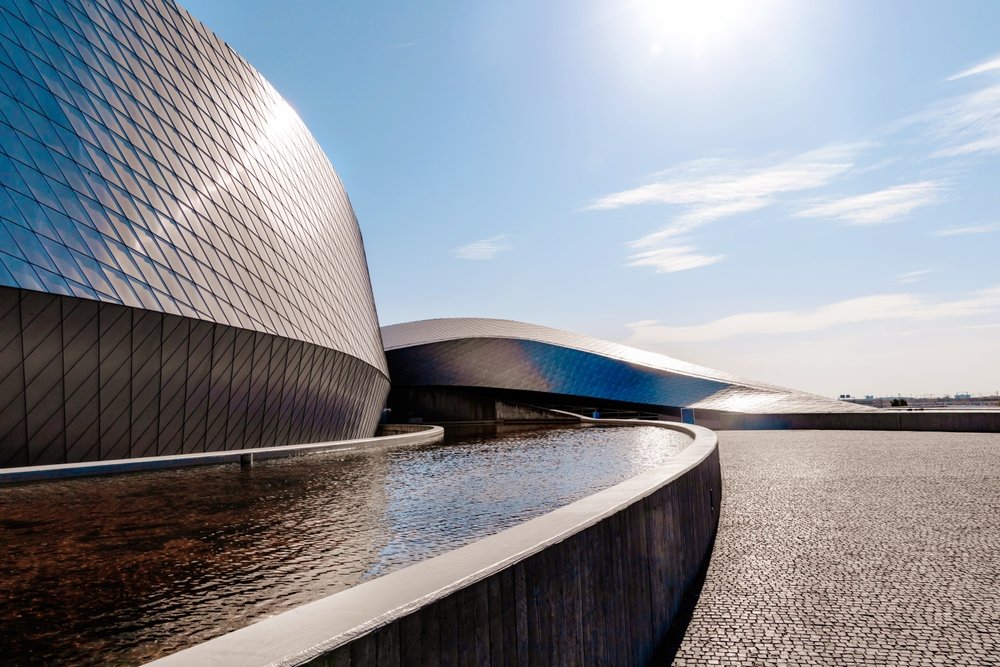
Where to go to escape the cold and feel like you’re on another planet?
The magical underwater world of National Aquarium Denmark (also known as Den Blå Planet, the Blue Planet).
This wonder of modern architecture is perched gracefully by the shimmering Kastrup harbor, with a whirlpool-like spiral that is as flowy as the watery exhibits inside it.
There are all sorts of exhibits here, like the Ocean Tank with majestic rays and the ever-awkward hammerhead sharks gliding past.
There’s also an Amazon exhibit, where you can see some of the famed river’s most feared denizens, like the piranha and the electric eel.
For something more tropical, admire the Coral Reefs tanks, which burst forth in a riot of color, with clownfish playing hide and seek amidst the tentacles of their anemone homes and all sorts of other brilliant reef fish.
But some of its best exhibits are a lot closer to home, like the Nordic Seas exhibit, showcasing otters and other cold water sea life, as well as the bird life of Denmark’s windswept Faroe Islands.
Tickets are 210 DKK for adults (around $30 USD) and 110 DKK for kids 3-11 (around $15 USD). Kids under age 3 are free.
The aquarium is open Mondays from 10 AM to 9 PM and Tuesday through Sunday from 10 AM to 5 PM.
Visit the unique Ny Carlsberg Glyptotek museum.

The excellent Ny Carlsberg Glyptotek (often just called the Glyptotek) is a real gem in Copenhagen.
This isn’t your ordinary museum; it’s a highly-curated celebration of artistry that traces back over 6,000 years.
Enjoy art ranging from ancient civilizations to beauties of the Renaissance and more modern temporary exhibits.
Amongst its ancient relics and timeless masterpieces, the Glyptotek offers a delightful surprise: the Winter Garden.
This lovely enclave of warmth and greenery is a oasis amidst the museum’s marble walls and Copenhagen’s chilly winters.
Here, under the shade of towering palm trees, you seem to momentarily escape the grasp of the Nordic cold.
It’s the perfect place to go escape when the Copenhagen winter gets to be a bit too much: the Glyptotek is the perfect warm cocoon of art, history, and greenery.
Stop for a deliciously brewed coffee.

Winter and coffee make an impeccable pair, especially in the Nordic nations, where tehy know a thing or two about good coffee!
In fact, Denmark ranks fourth globally in coffee consumption, closely trailing its neighboring countries.
Copenhagen’s harsh winter—short, dark days coupled with the cold—almost requires massive caffeine doses to survive.
While slightly pricier than you’re likely accustomed to (unless you’re coming from Iceland or Norway, in which case, Denmark will feel free by comparison), Danish coffee is an experience worth splurging on.
Whether you’re stopping at a touristy café or a trendy coffee shop that specializes in single-origin beans, coffee costs usually around $5 USD per cup.
Since you’ll be paying a premium on your coffee anyway, you might as well enjoy one of Denmark’s finest cups of coffee and head to a specialty coffee shop!
My personal recommendation for a blend of top-tier coffee and Danish design is Copenhagen Coffee Lab in Amagerbro, but countless cafes across the city promise a delightful brew.
Warm up with some delicious ramen in Nørrebro.
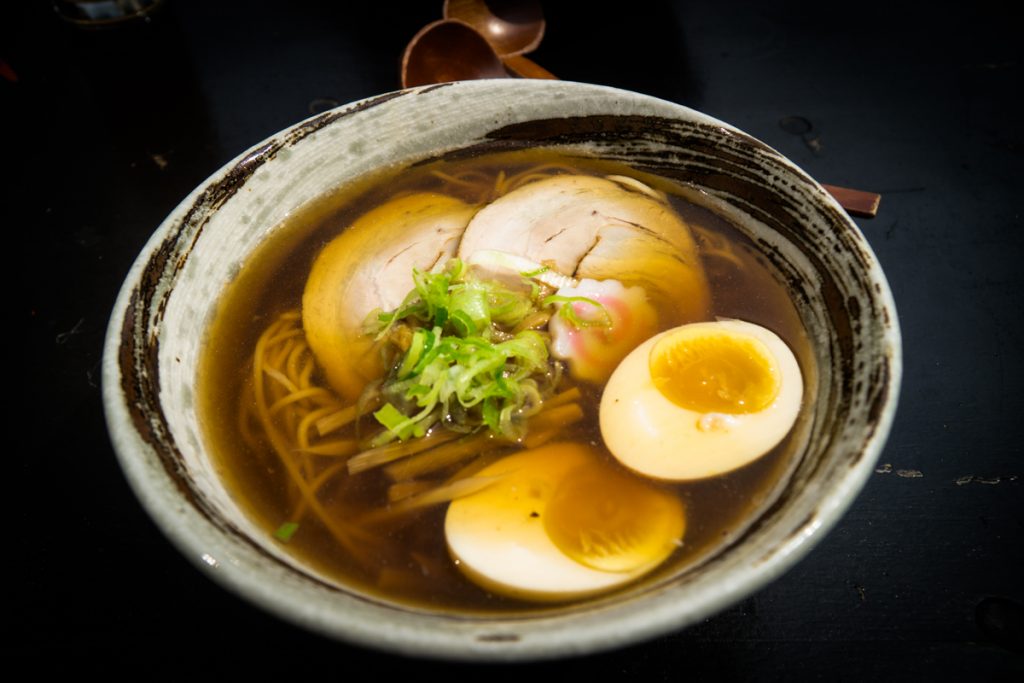
There’s no better winter food than ramen, in my book, and there’s no better ramen joint in Copenhagen than Ramen to Bíiru.
It’s the best-rated ramen restaurant in town, and even better – you can actually try Mikkeller beer (a Danish craft brewery) specially crafted to be paired with your ramen.
And the extra fun part: you get to order your ramen with a vending machine just like you do in Japan!
Copenhagen has become an increasingly diverse city over the years and it reflects in the cuisine.
While I love a smørrebrød or two, there’s only so much pickled herring a girl can take. So, thank god for immigration!
Nørrebro is one of the most diverse neighborhoods in all of Copenhagen and it’s where you can find delicious international cuisine from all over the globe. If you’re not feeling ramen, there are plenty of other options.
Two other fantastically belly-warming options are East African cuisine at Hidmona Eritrean & Ethiopian Restaurant or Michelin-starred Thai at Kiin Kiin.
As for Ramen to Biiru – we loved it. My friend went for the spicy miso ramen and I went for the classic shoyu ramen as my stomach is no longer to take spicy food the way it used to.
Both were phenomenal!
Prices are reasonable for Copenhagen, around 120 DKK ($18 USD) for a huge bowl of ramen.
End the night at one of Copenhagen’s craft beer bars.

Denmark is on the cutting edge of craft beer and WarPigs is one of the best-loved bars for beer lovers in town.
Yes, going out for a few beers in Copenhagen will be pricy – expect to pay around 60-90 DKK for a beer, with the most common price being around 80 DKK ($12) for a beer.
But you’ll be getting to sample of Denmark’s most creative brewers and support local entrepreneurs.
One recommendation if they have it is the New England IPA by WarPigs called ‘Opposite Optimist’ – it’s delicious.
If none of the 22 taps at WarPigs suit your fancy, you’ll be in the heart of Copenhagen’s Meatpacking District (Kødbyen) so there’s plenty of other bars to hop around afterward!
Escape the cold with a good book.

Another free thing you can do in Copenhagen in winter is visit the Royal Library, which dates back to the 17th century having been founded by King Frederik III.
Once reserved for Denmark’s ruling class, now the library is a public escape for all, with vaulted ceilings and expansive rooms hosting everything from from medieval scripts to contemporary novels.
Visiting the library in winter is like a true warm cocoon of joy and learning. The soft lighting, the ornate carvings, and the seemingly endless rows of books make this the perfect escape!
Visitors can stroll through its grand halls, marvel at its rich collections, and even find a cozy nook to delve into a book.
While the main reading rooms are primarily for research, there are plenty of public spaces where one can bask in the library’s ambiance.
Best of all, entrance to the main sections of the library is absolutely free.
Enjoy Copenhagen’s unique public spaces.
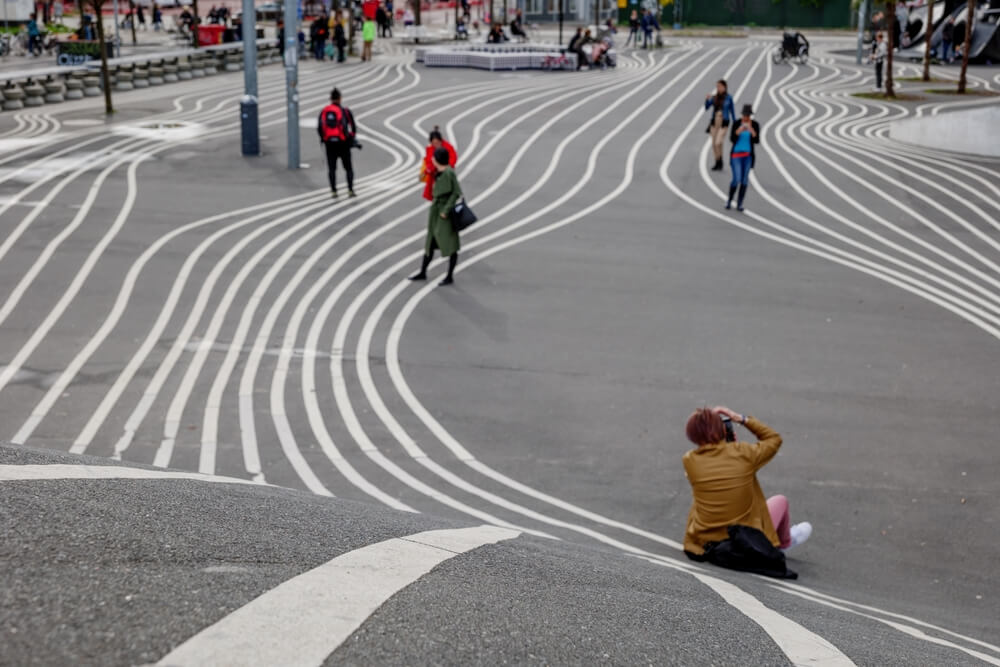
Copenhagen is a place known for its open spaces, and even in the winter, that’s still the case!
One of its more unique public spaces is Superkilen Park, where art, architecture, and activism merge to celebrate Danish multiculturalism.
The Black Square is at the heart of the Superkilen, where Copenhagen’s cosmopolitan energy shines through.
Whether its benches from Brazil, a Moroccan fountain, or a larger-than-life Kosovar chessboard, the elements of the park come from all different corners of the world, symbolizing a new idea of Danish identity.
Dress warmly and enjoy a wander through this multicultural urban landscape!
Admire inside and outside of Frederik’s Church.
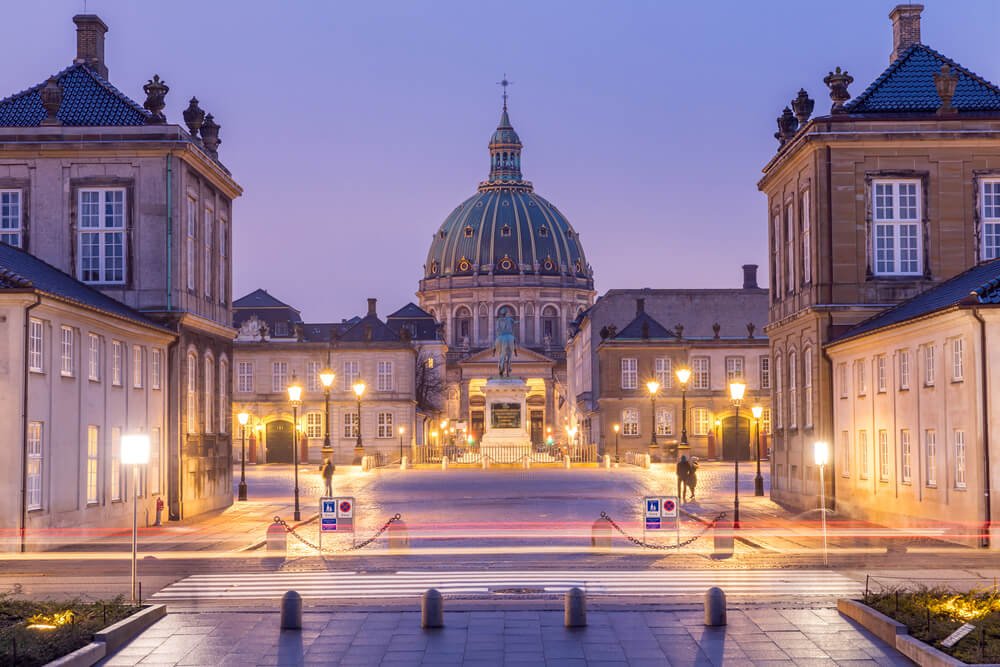
One of the most iconic landmarks, Frederik’s Church is known by locals as “The Marble Church,” beloved for its neoclassical design and opulence.
Stepping through its doors offers respite from the chilly gusts of Scandinavian winter.
Inside, the church’s vast interior is replete with marble and gold detailing complemented by mesmerizing frescoes.
During the winter, you’ll find occasional concerts for the Christmas season, where the acoustics interplay beautifully with the church’s architecture, as the choir, organ, and orchestra all create a beautiful sound.
A stone’s throw from the regal Amalienborg Palace, Frederik’s Church is a great place to visit in Copenhagen in winter.
Admire Copenhagen’s coolest bridge.
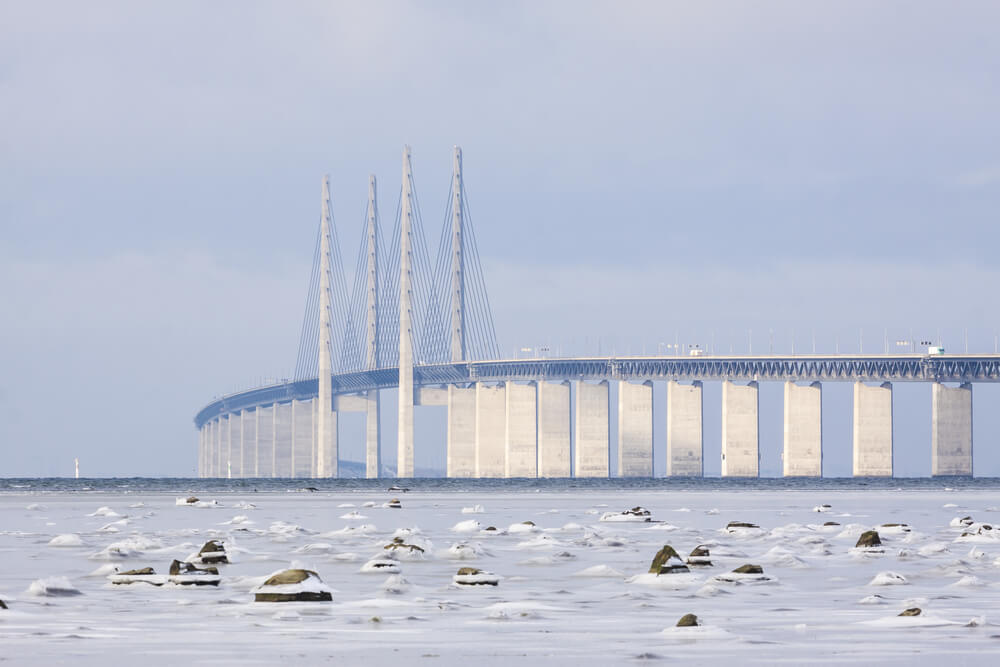
One of the coolest winter spectacles in Copenhagen is the marvelous Øresund Bridge.
Stretching across the icy expanse of the Øresund Strait, this marvel of modern engineering connects Denmark and Sweden, symbolizing the spirit of Nordic collaboration.
Completed in 2000, it spans a staggering 8 kilometers, making it the longest combined road and rail bridge in Europe!
To truly appreciate the grandeur of the Øresund Bridge, take in the view from the Dragør Fort.
From here, the panoramic view offers a breathtaking sight: the white, modern architecture of the bridge stands stark against the icy waters, an interplay of blue and ice-white.
Take a day trip to Sweden!
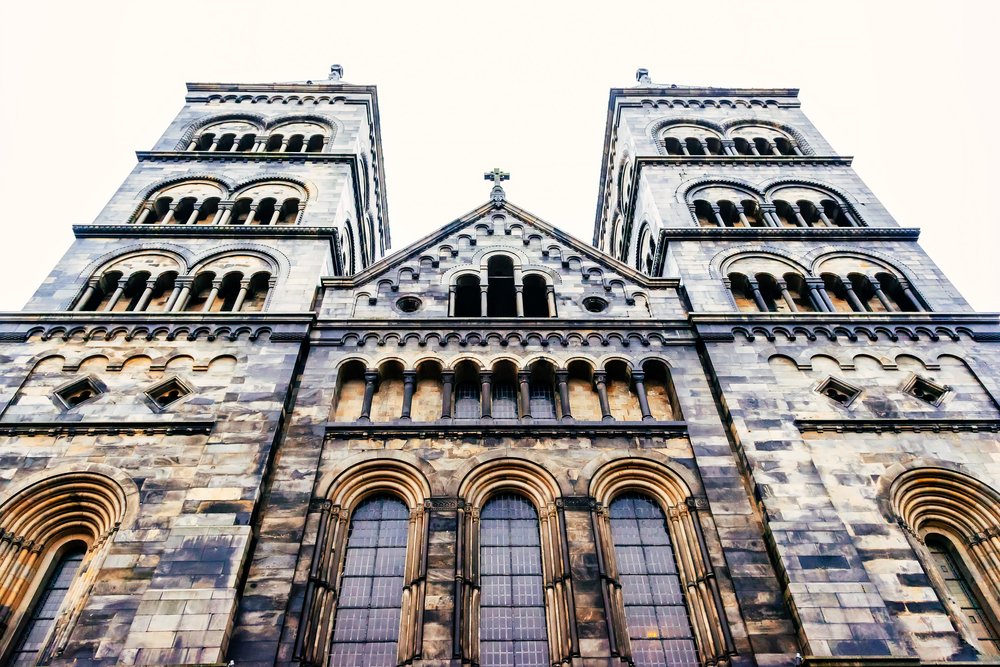
If you’re an unrepentant country counter like myself, take advantage of Copenhagen’s position next to Sweden and pop over the border for the day!
This day tour brings you to two of Sweden’s most beloved cities on an easy day trip — Lund and Mälmo.
You’ll visit the ancient city of Lund with its church dating back to the 12th century and its Old Town houses from the 18th century.
Afterwards, you’ll end the afternoon in Malmö – the third-largest city in Sweden – before heading back to Copenhagen!
Be sure to check out the Turning Torso building, the largest skyscraper in all of Scandinavia, with a beautifully unique design!
It’s easy enough to get to either Lund or Malmö via public transit, but if you want to visit both, it’s easier to take a tour than coordinate public transit between all these points.
This day tour does it all for you and has over 70 positive reviews, so I’d suggest streamlining your planning and booking the tour.
Where to Stay in Copenhagen

Copenhagen hotels are pricy, that’s for sure.
I’ve been lucky enough to get to stay with friends the last two times I’ve visited Copenhagen – that’s the perk of having friends all over the world!
While I don’t have any firsthand recommendations, here’s what I’ve curated from my research.
Budget: Steel House
The best-reviewed value hostel in Copenhagen is Steel House, which is located in central Copenhagen near the trendy Kødbyen neighborhood.
With a perfect location, excellent Danish design, and nearly 6,000 positive reviews, it’s an easy choice and rooms are relatively affordable around the $30/night mark for a dorm bed.
Mid-range: Motel One Copenhagen
Part of the allure of visiting Copenhagen is getting to experience the city’s unique perspective on interior design — and luckily, at Motel One Copenhagen, you can do that without breaking the bank.
This funky hotel is inspired by the 50s and 60s, with mid-century modern furnishings combined with retro aesthetics like geometric ceiling fans, unique color combinations, and brilliantly colorful rugs.
Right in the center of all things Copenhagen, you’ll enjoy a great modern hotel and a super convenient location, all for an affordable price tag (well, affordable for Copenhagen!).
Luxury: Hotel Skt Petri
Looking for a unique luxury choice? Skt Petri combines luxury and a nature feel all in one lovely hotel.
This funky hotel was once a department store and now has been turned into a whimsical hotel, with high ceilings and tons of floor-to-ceiling glass and mirrors, plant life, and green furnishing accents creating a greenhouse-like vibe.
And of course, since you’re visiting Copenhagen in winter, you’ll definitely want some of the lovely Scandinavian touches like a sauna and steam room to help you warm up after those cold strolls!
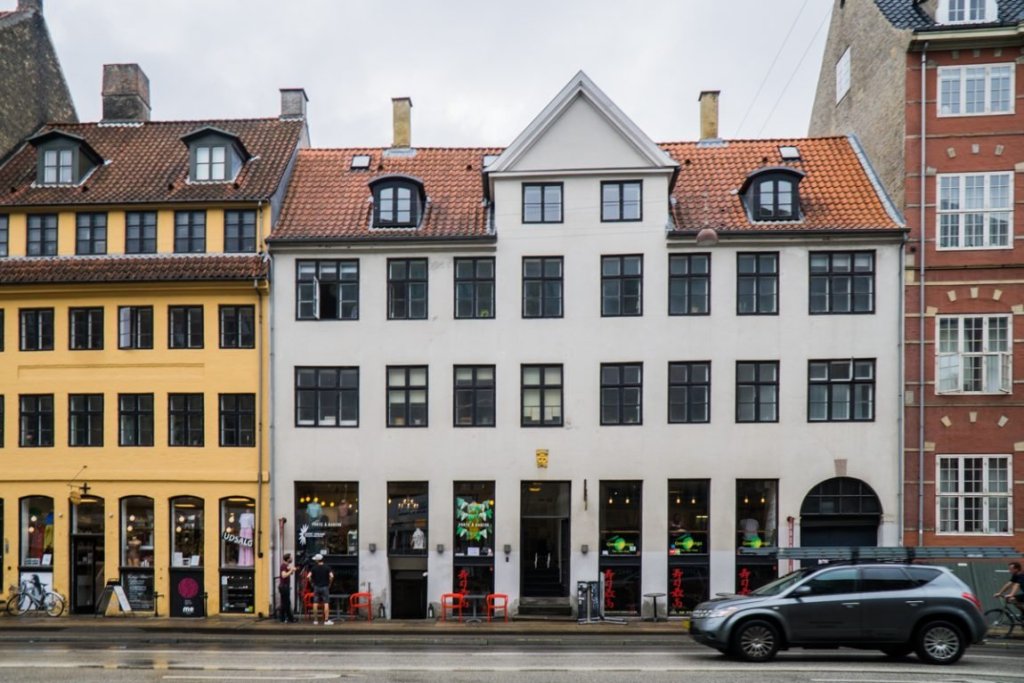
When planning any trip, especially a winter trip, be sure not to forget about travel insurance!
I use SafetyWing and its Nomad Insurance to insure all of my trips for its affordable rates and comprehensive coverage for all my travel needs.
Especially when you consider all the disruptions and potential for illness that winter travel can bring, it’s a no-brainer for me.
SafetyWing’s Nomad Insurance provides both travel insurance (coverage for trip delays, cancellations, interruptions — the likelihood of which increases in winter) and travel medical insurance (coverage for things like accidents, illnesses including Covid, etc. — also more likely in winter!).
Coverage is really affordable — for me, it costs roughly $12 USD for a week of coverage outside of the U.S., with a policy max of $250,000 after a deductible of $250. Not bad!
Allison Green is a former teacher who has been travel blogging since 2016. She has a Masters in Teaching and a B.A. in English and Creative Writing. Her blog posts merge her background as an educator with her experience traveling to 70+ countries to encourage ethical, meaningful travel. She has been a speaker at the World Travel Writers Conference and her writing, photography, and podcasting work has appeared in National Geographic, CNN Arabic, CBC Canada, and Forbes, amongst others. Now a full-time traveler, she has lived in Prague, Sofia, New York City, and the San Francisco Bay Area.
